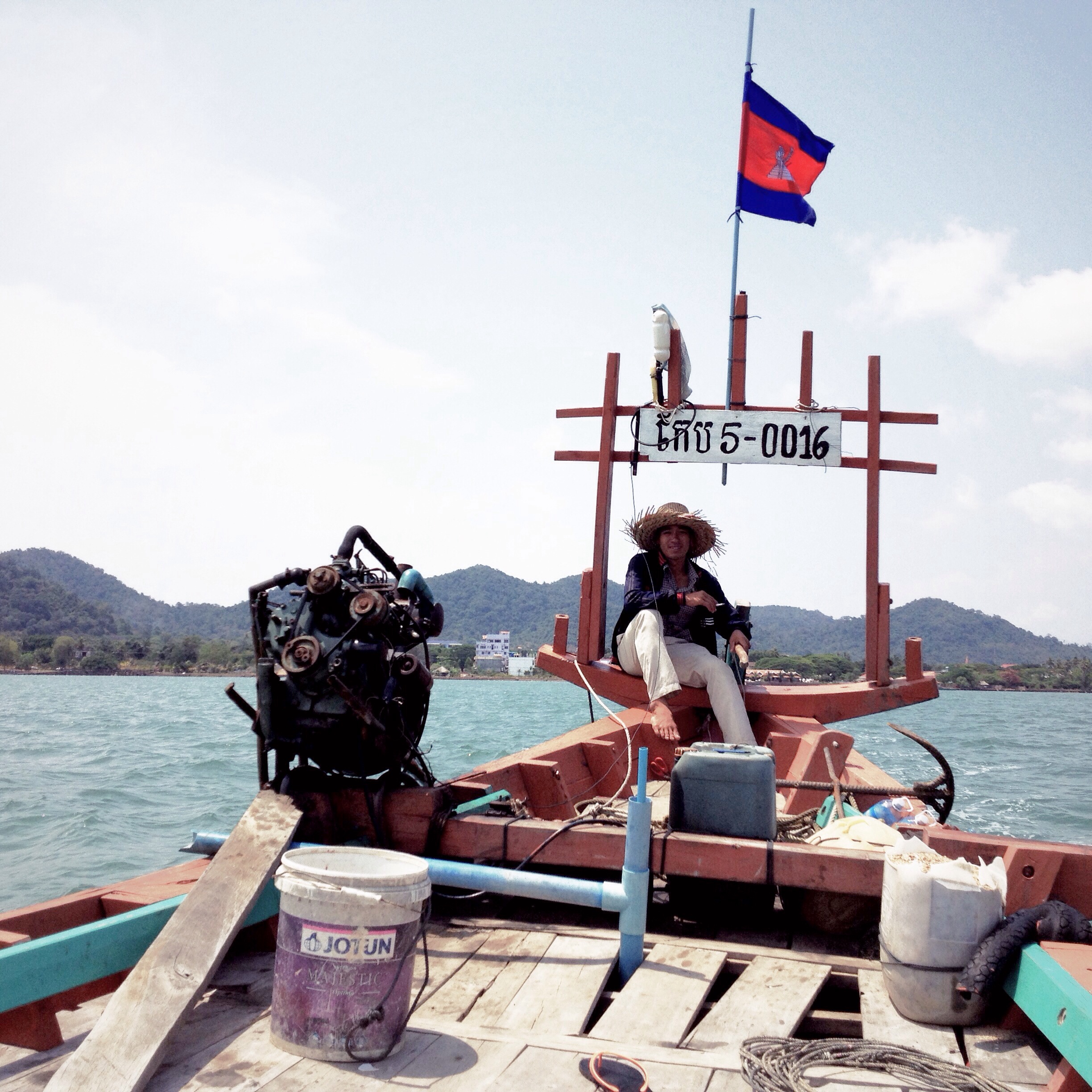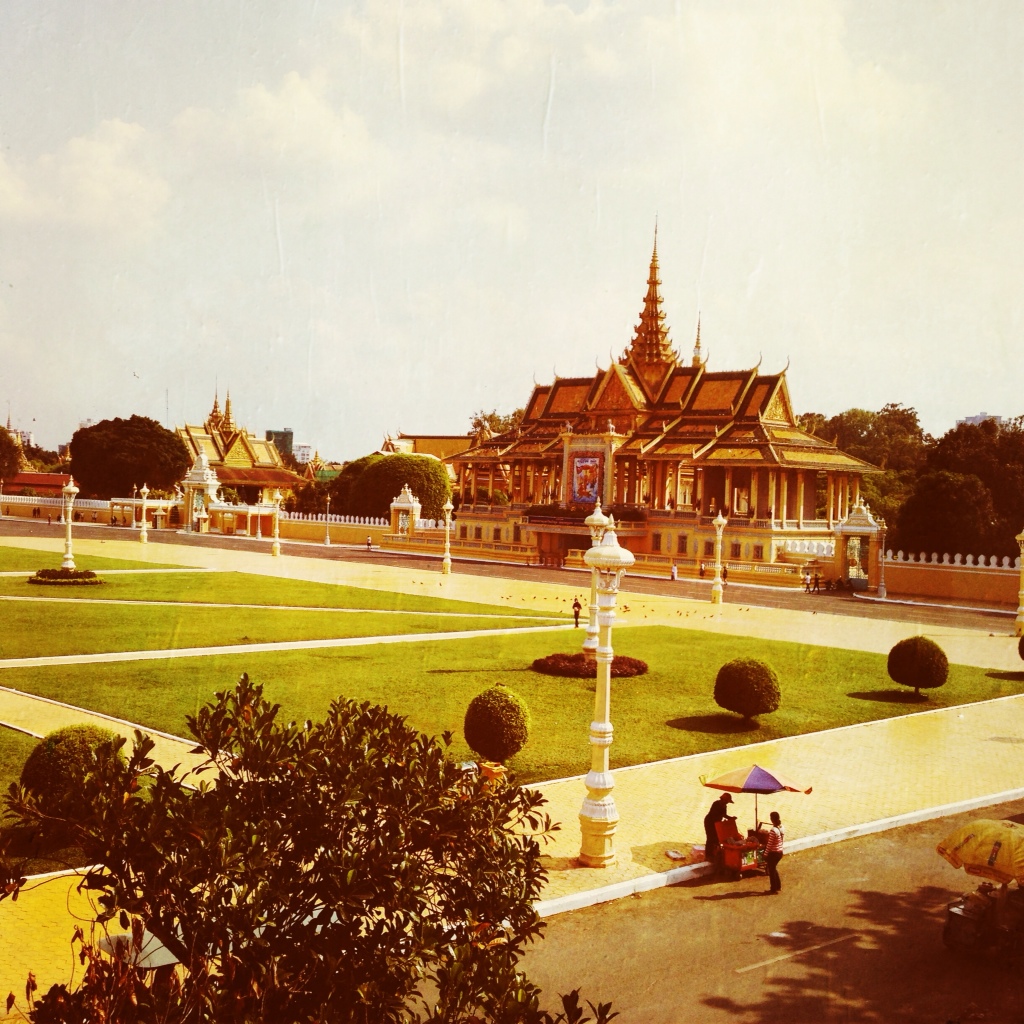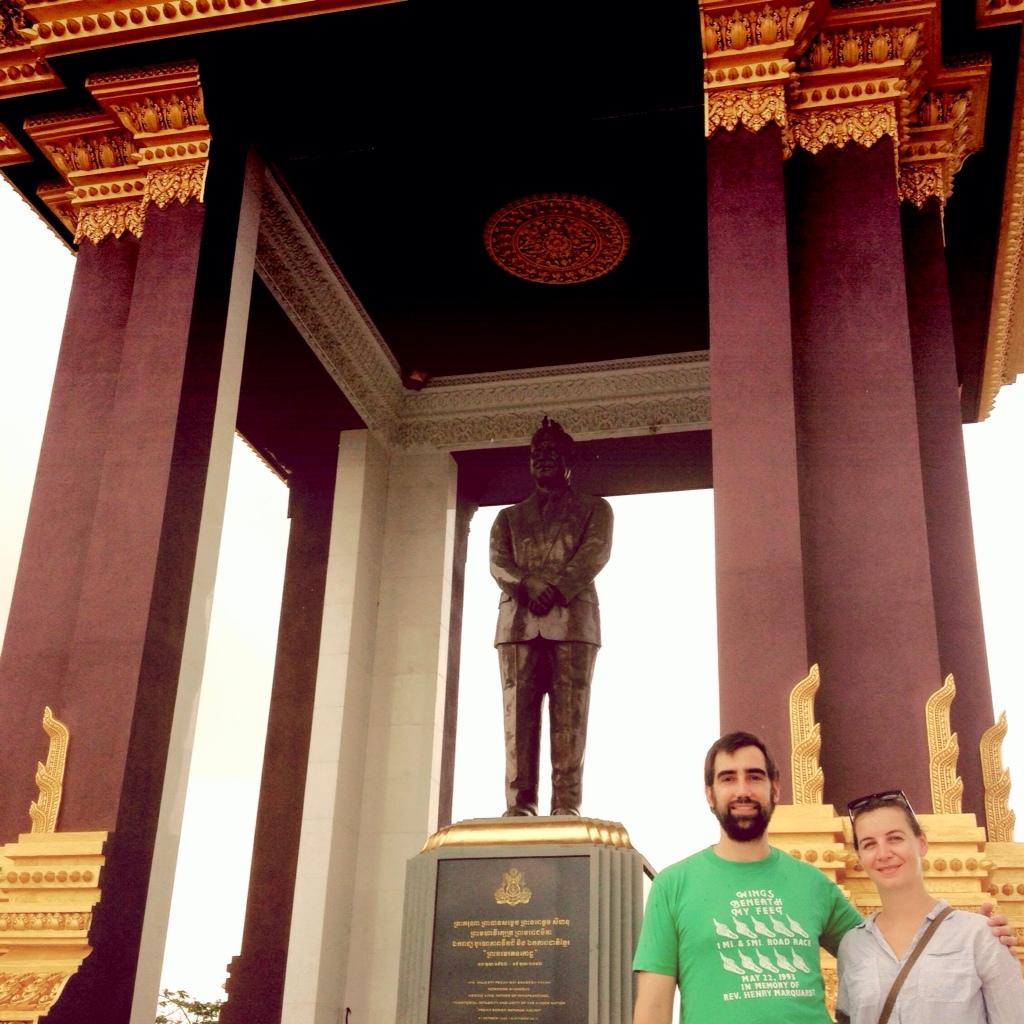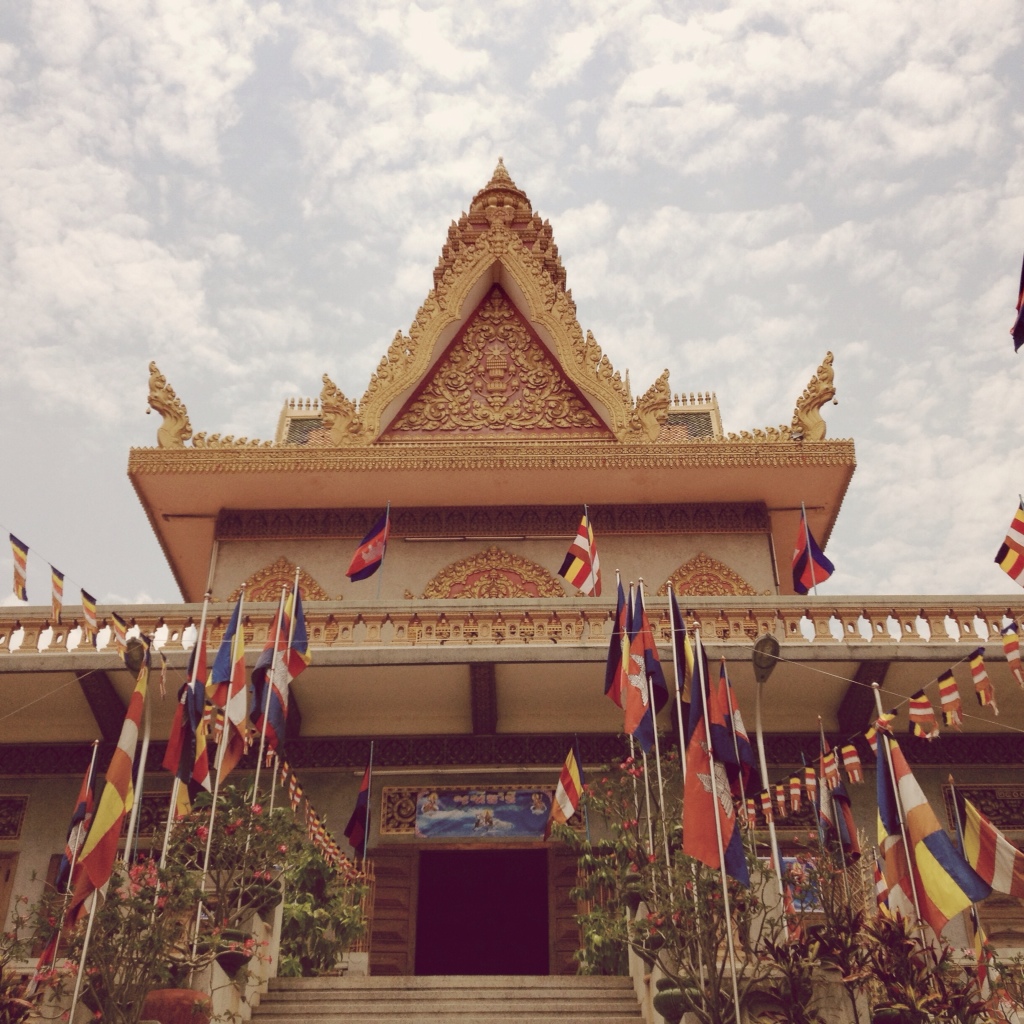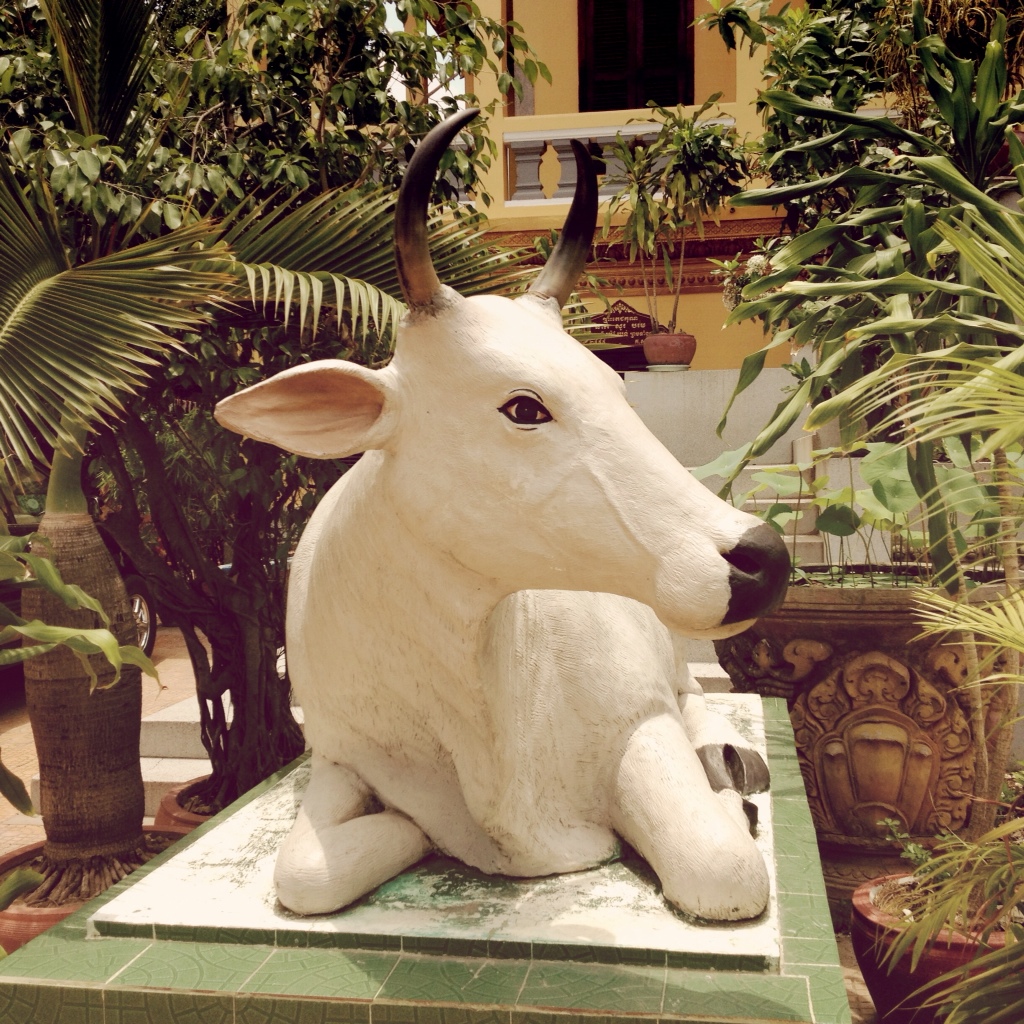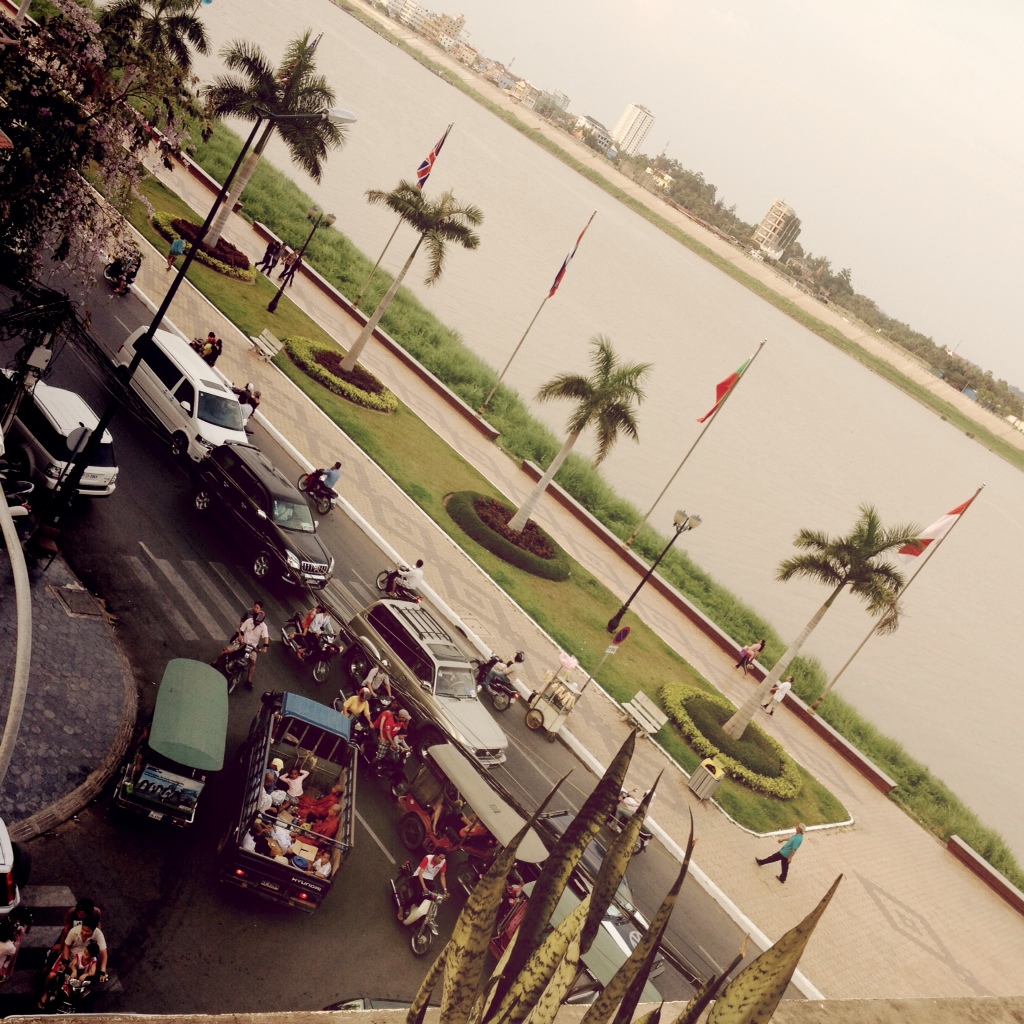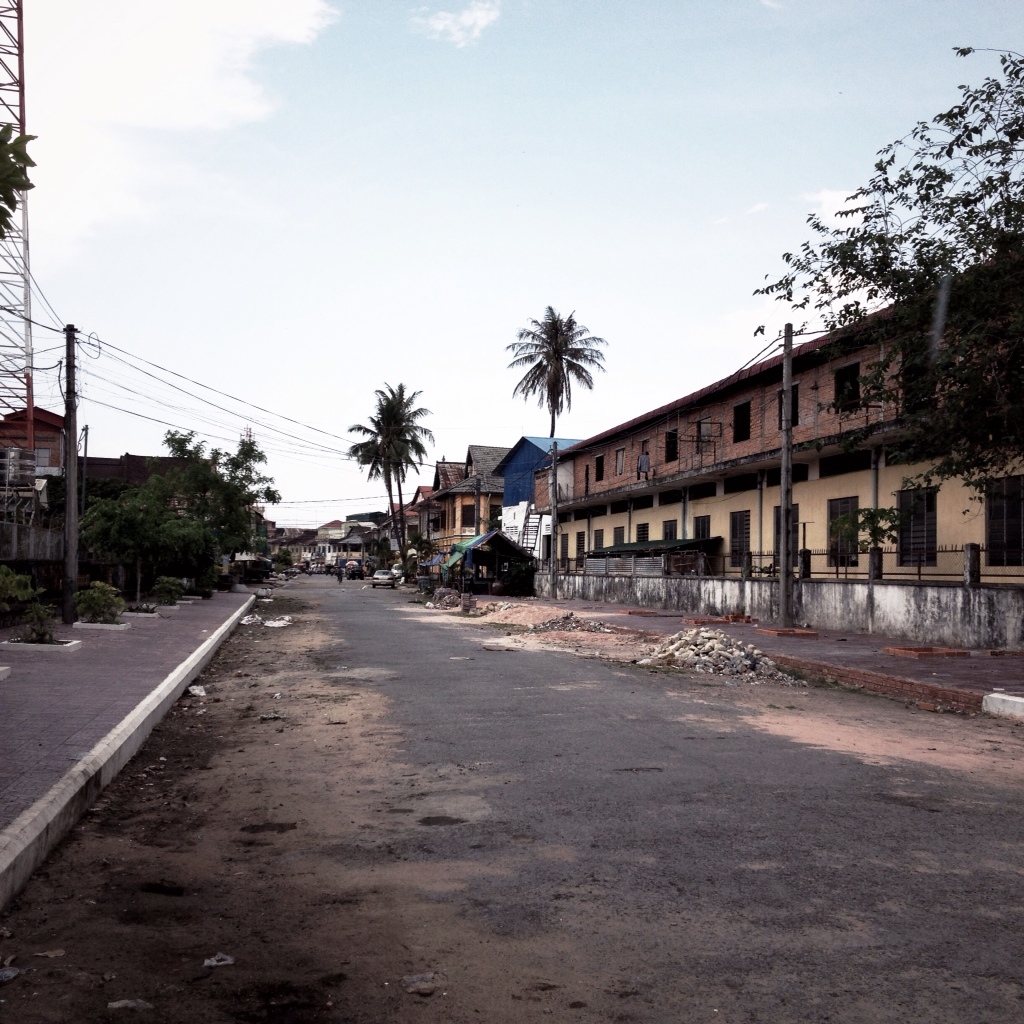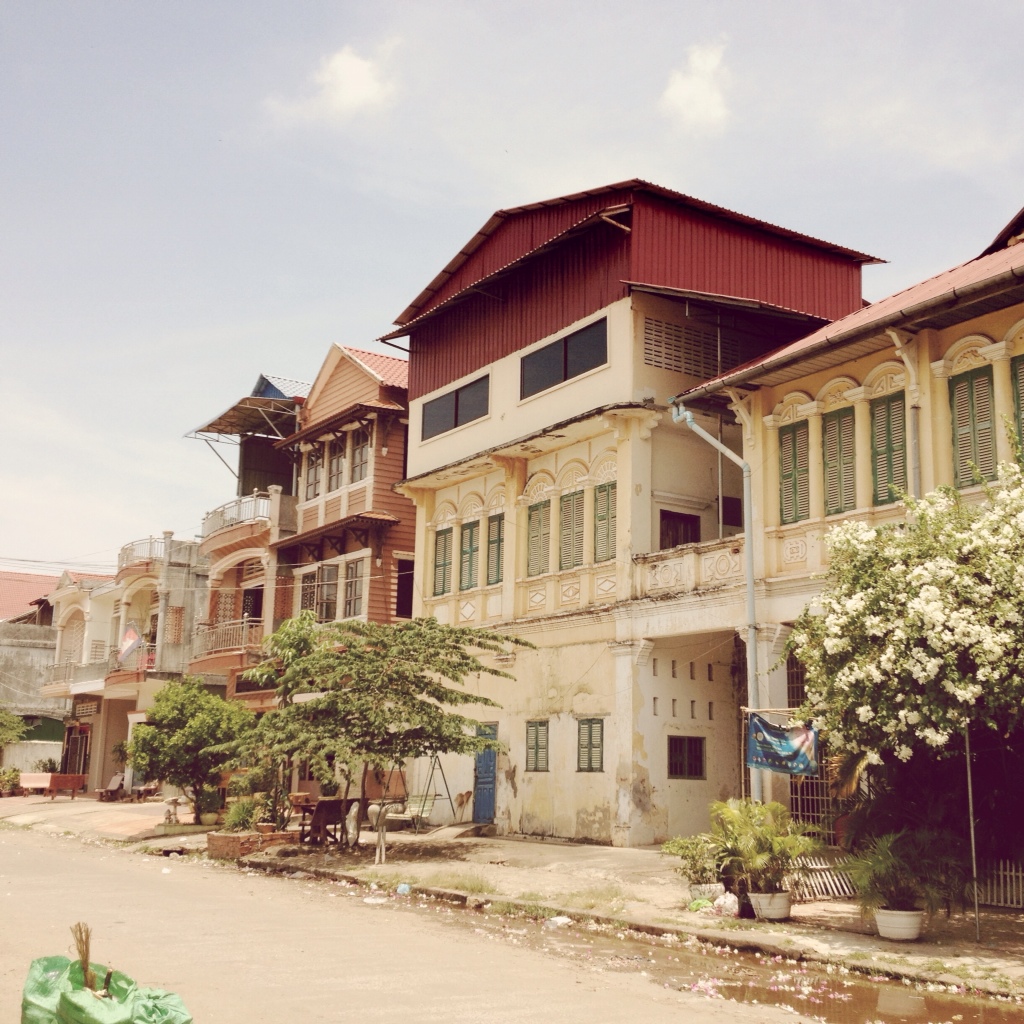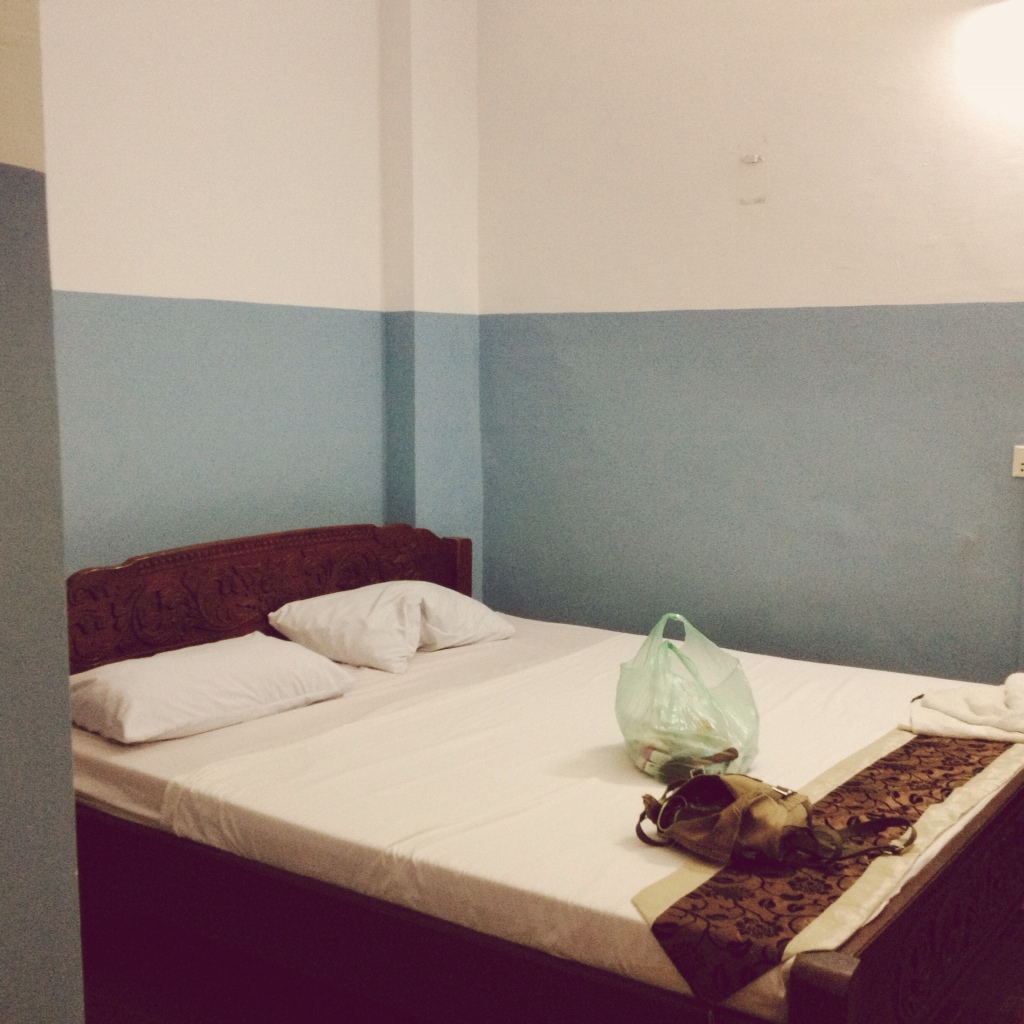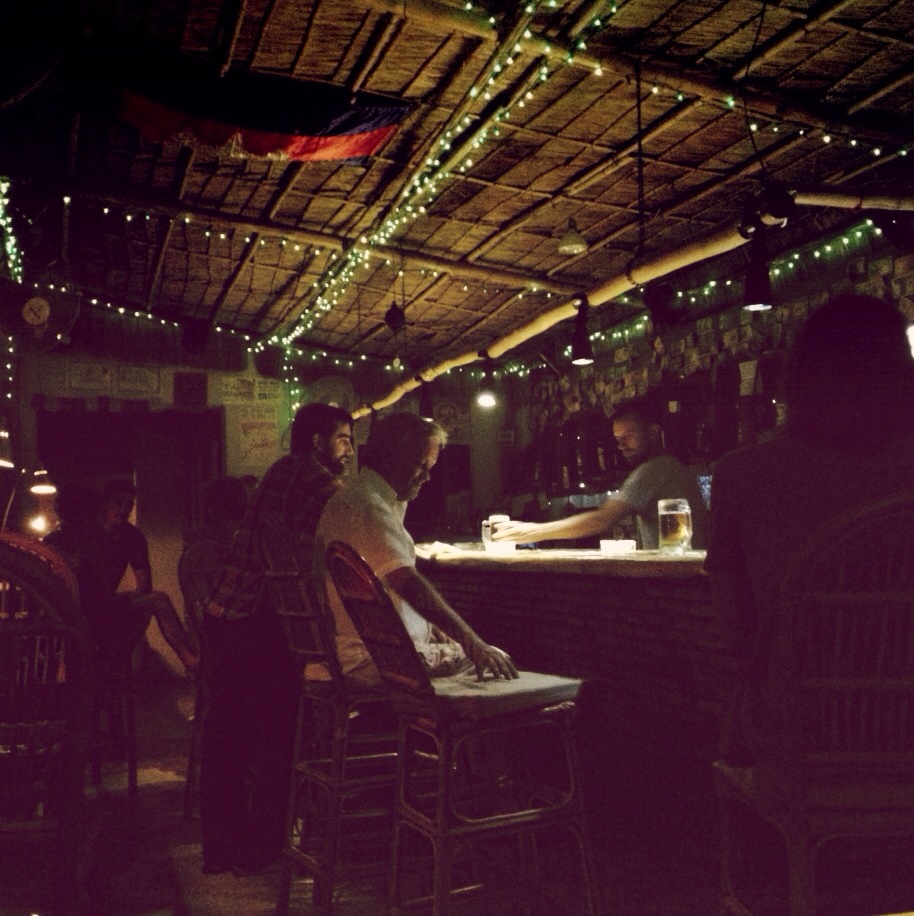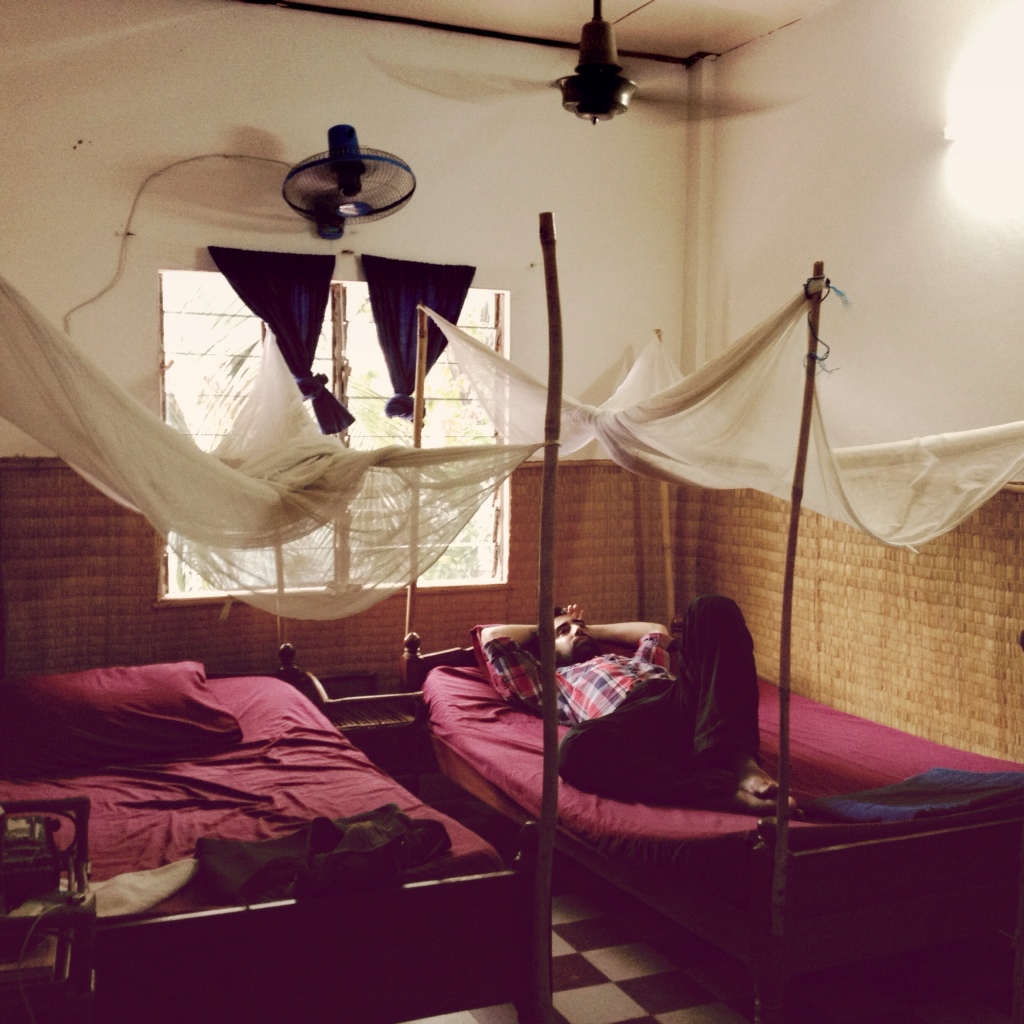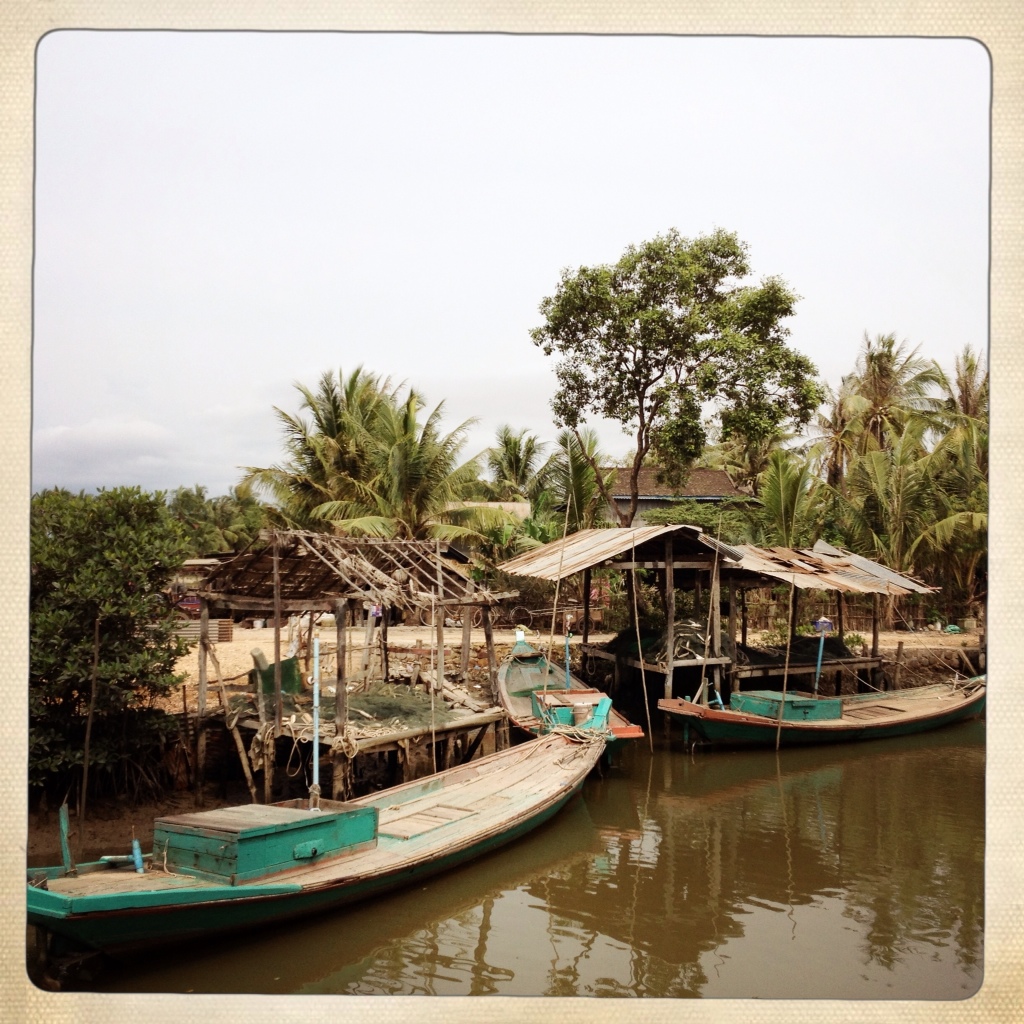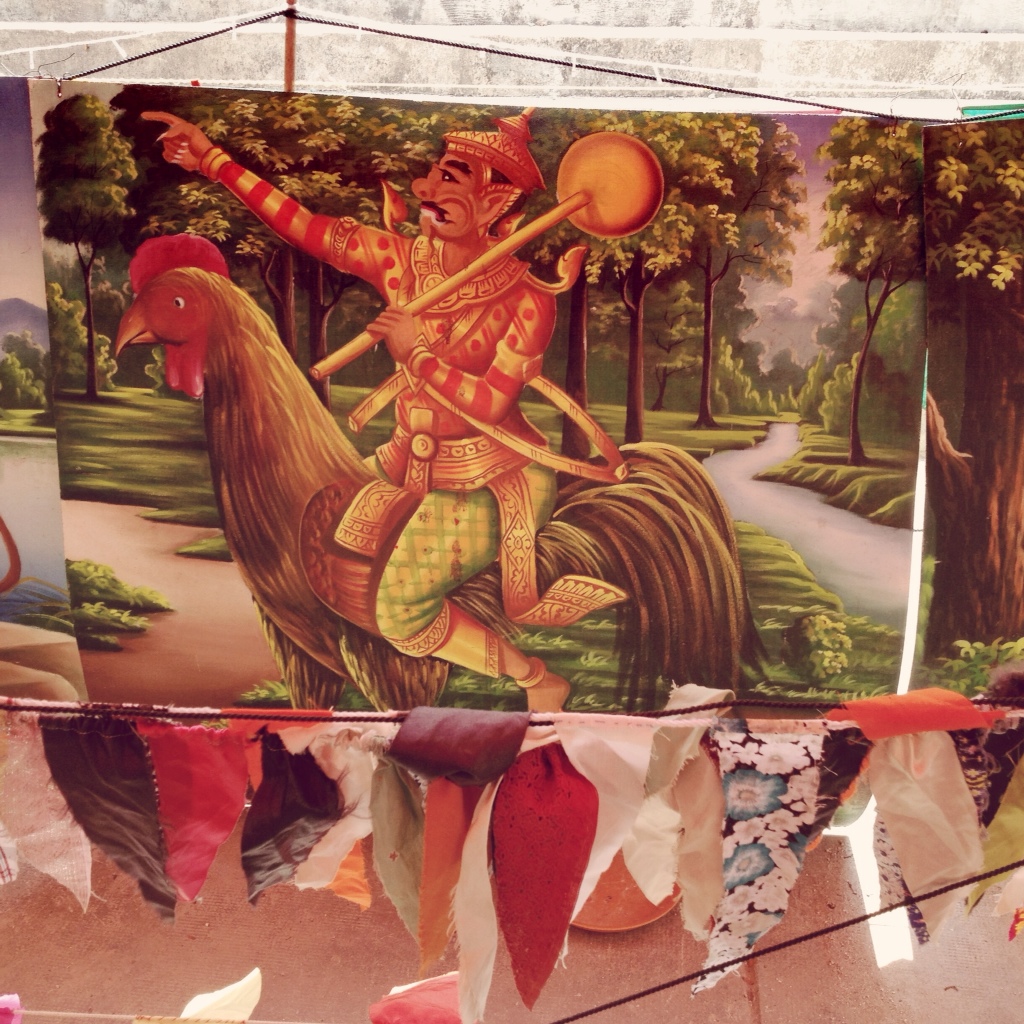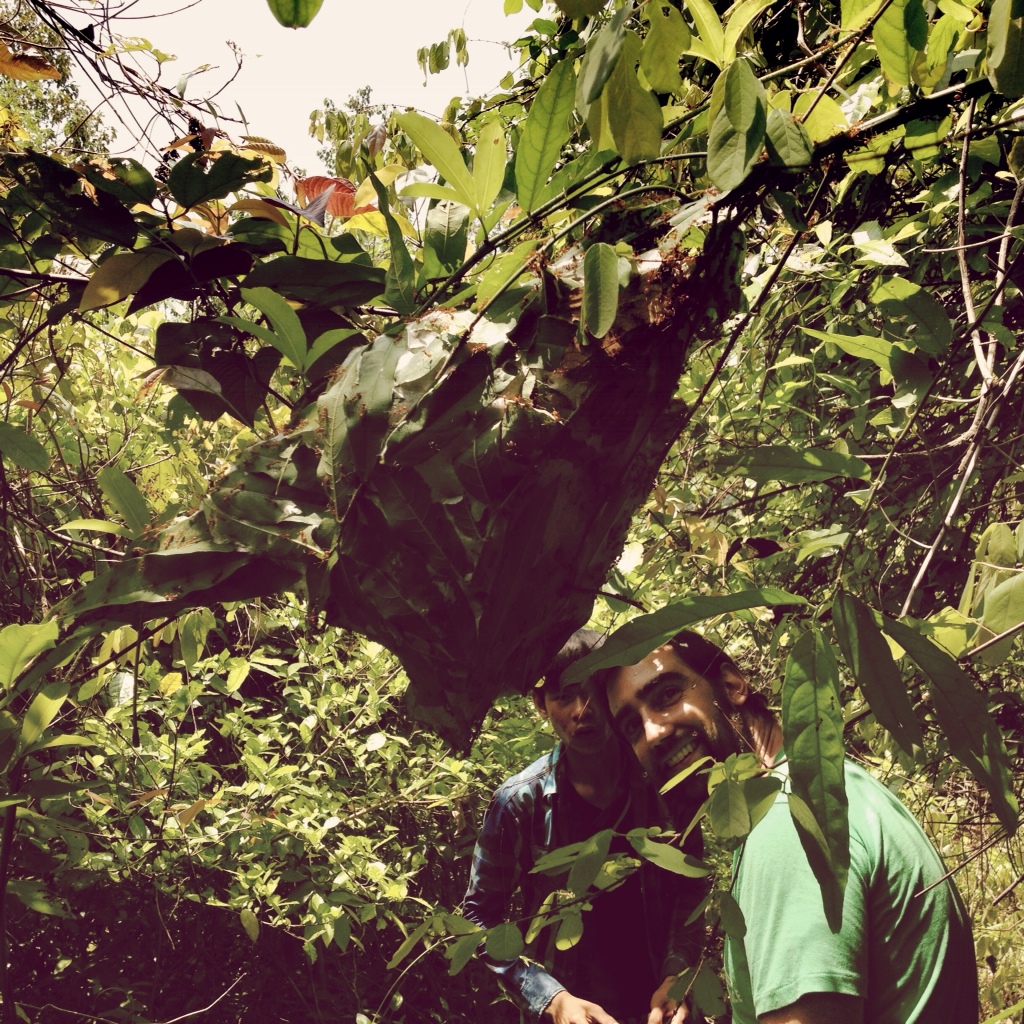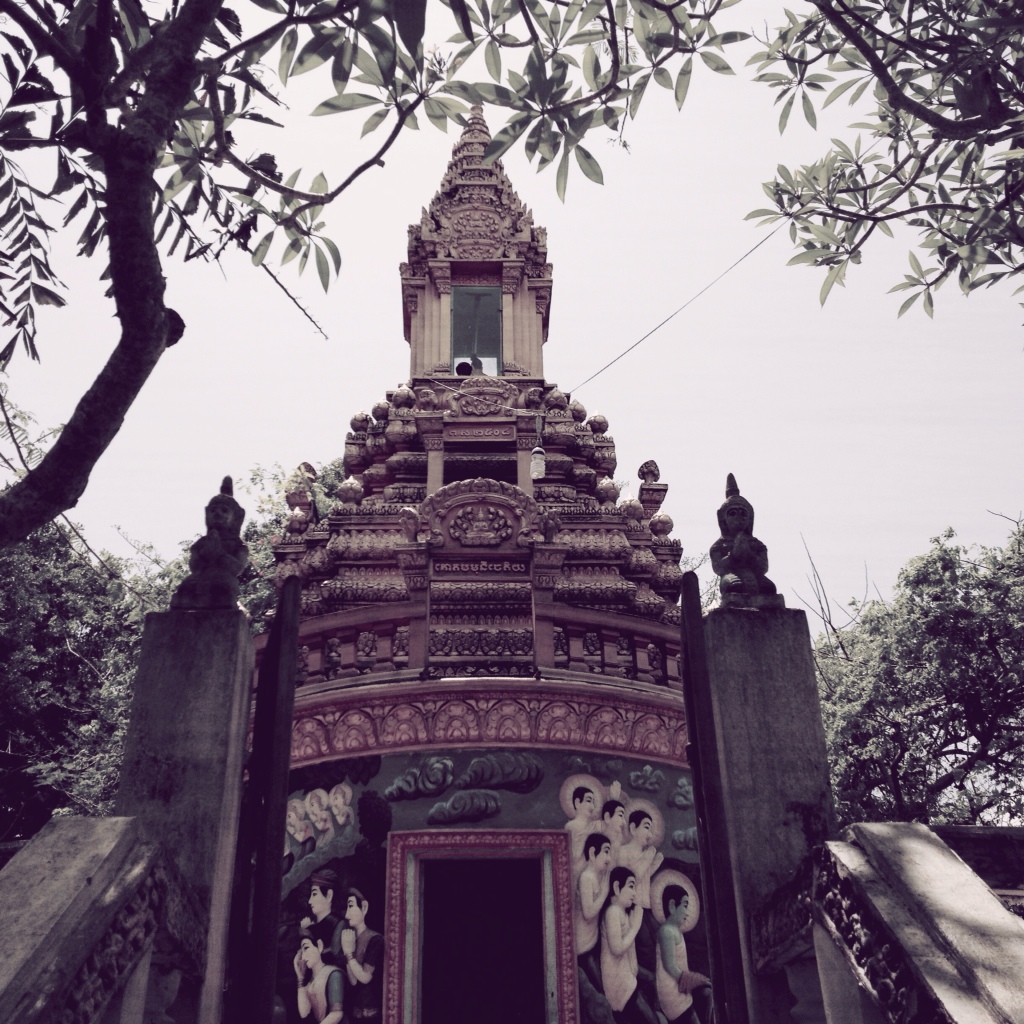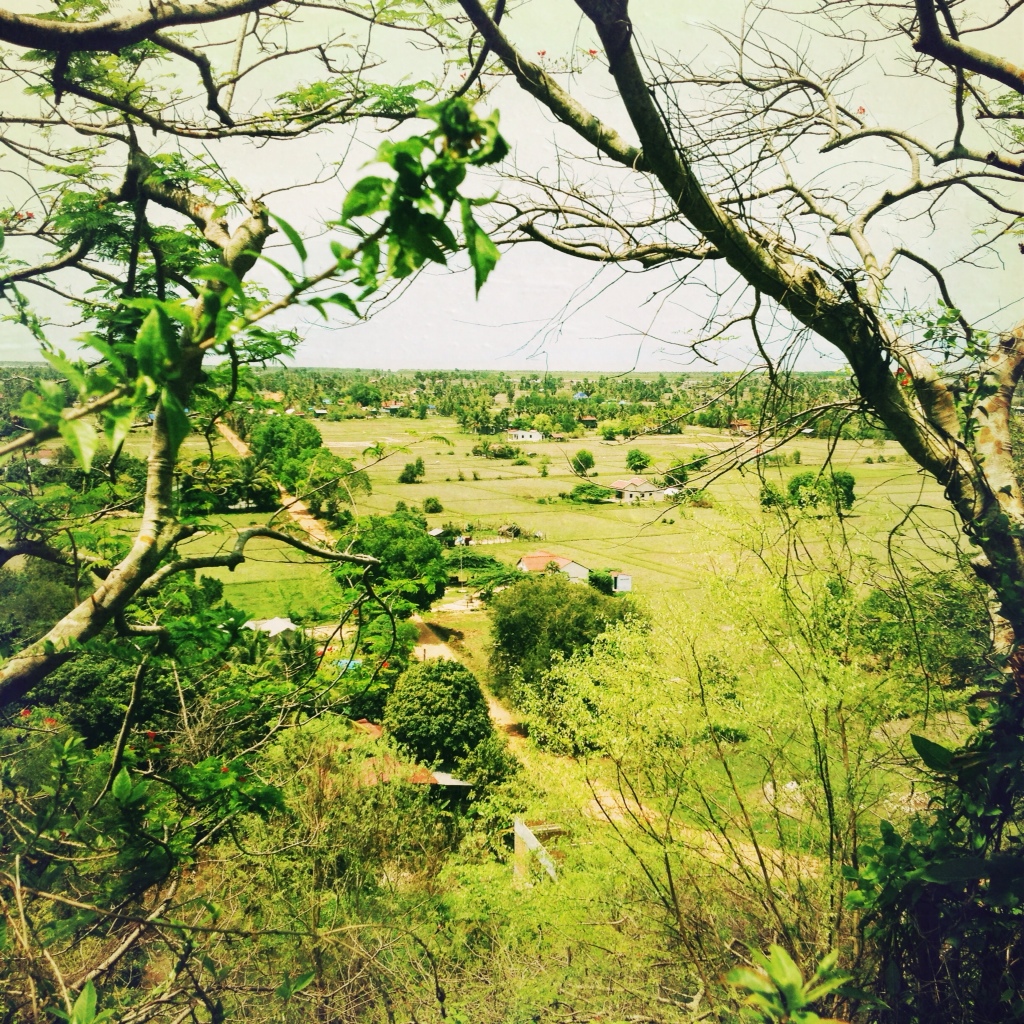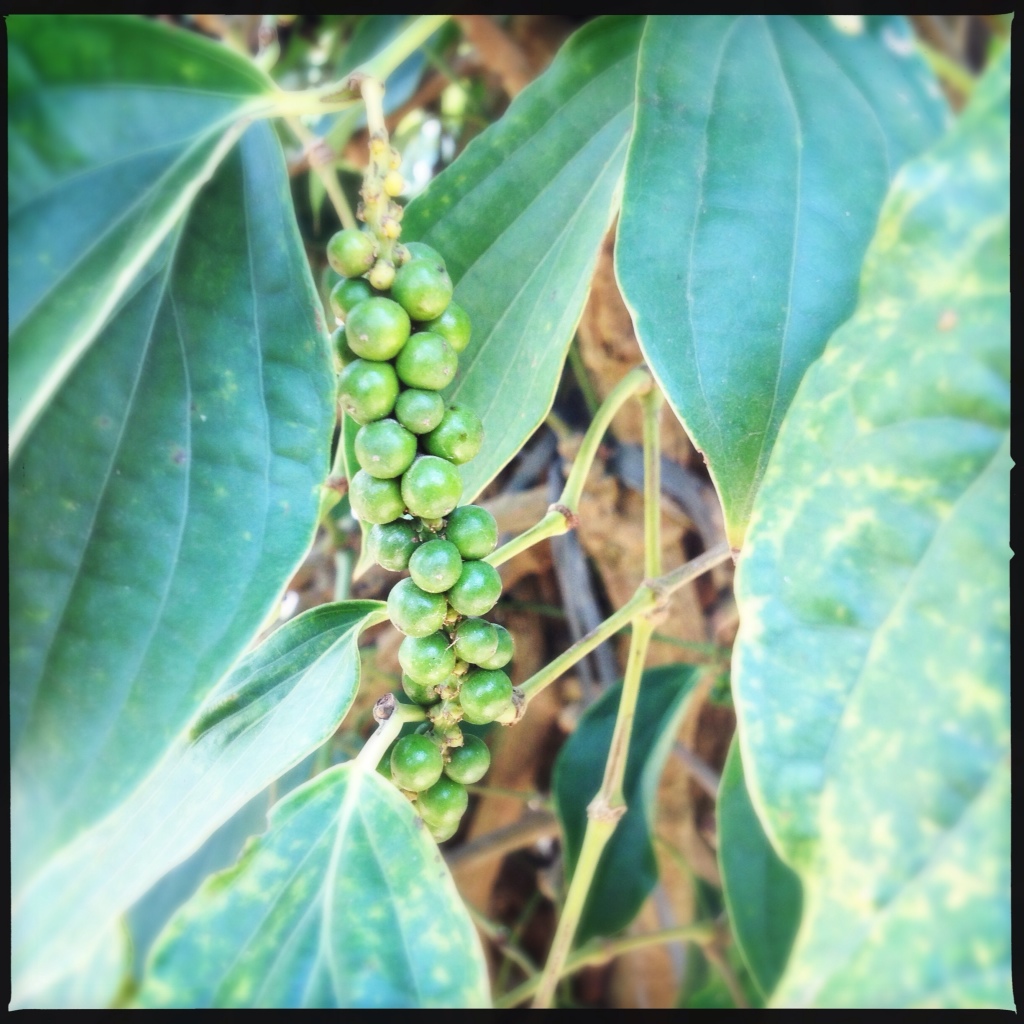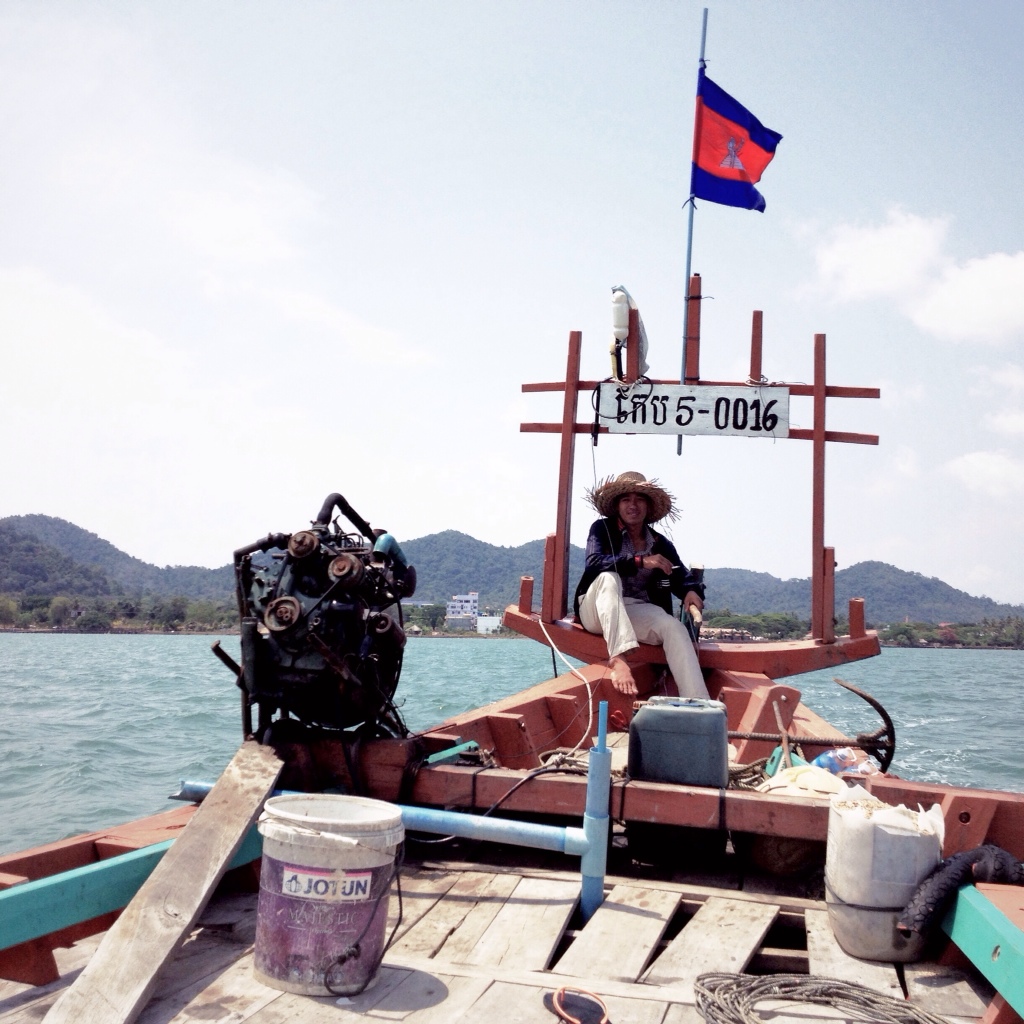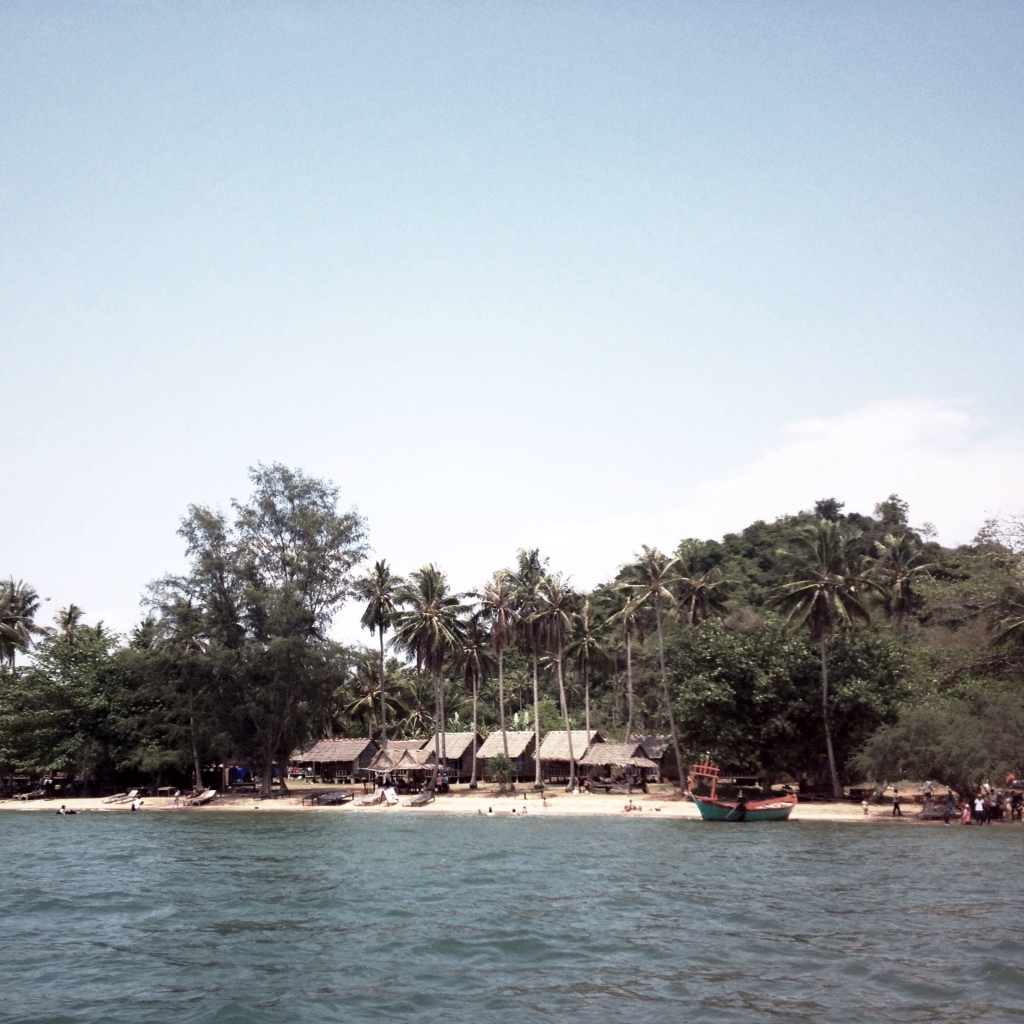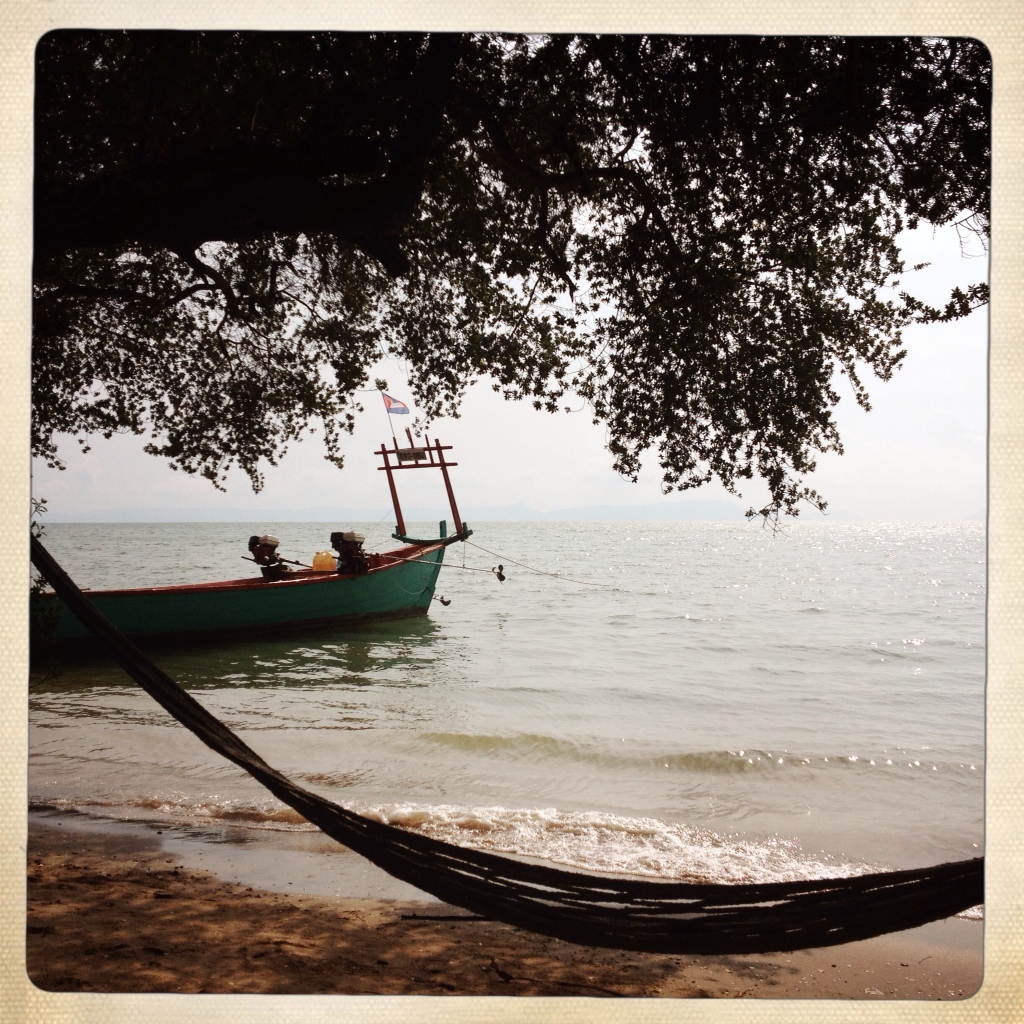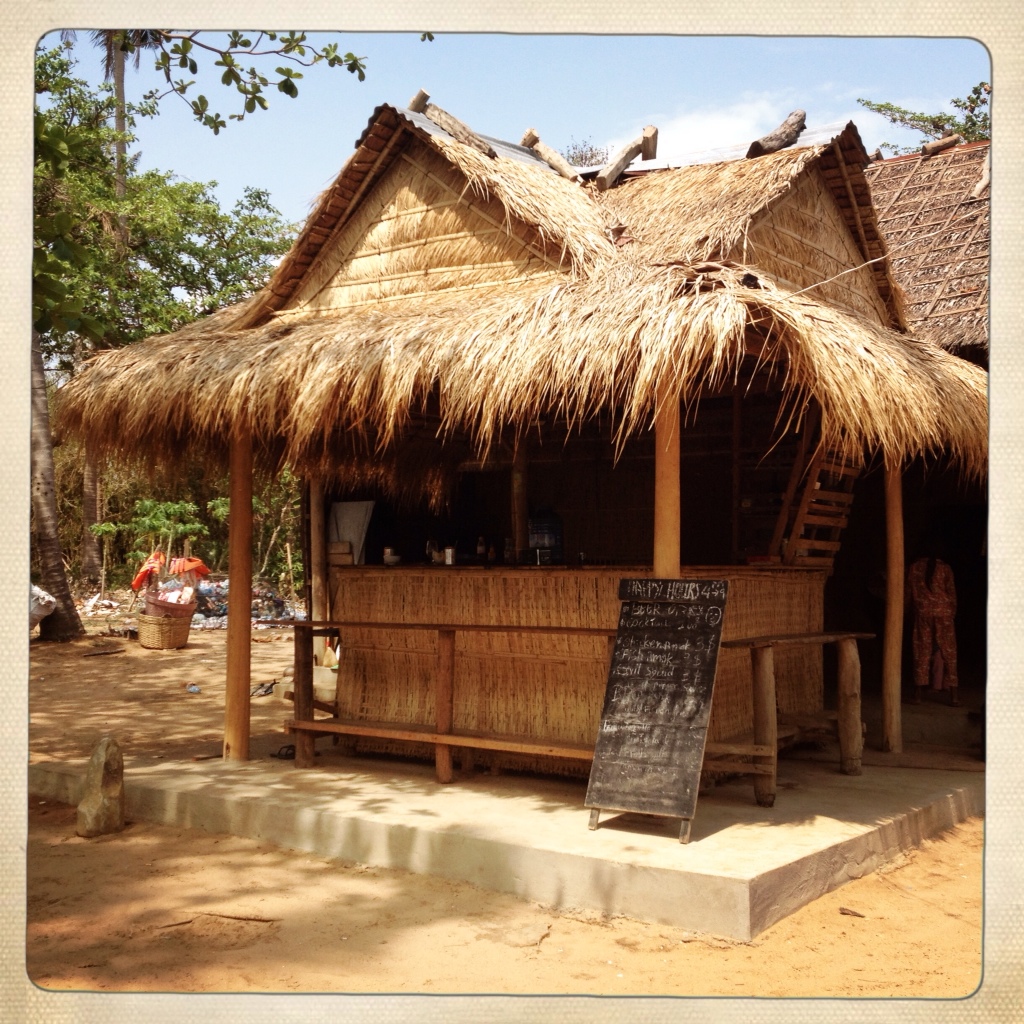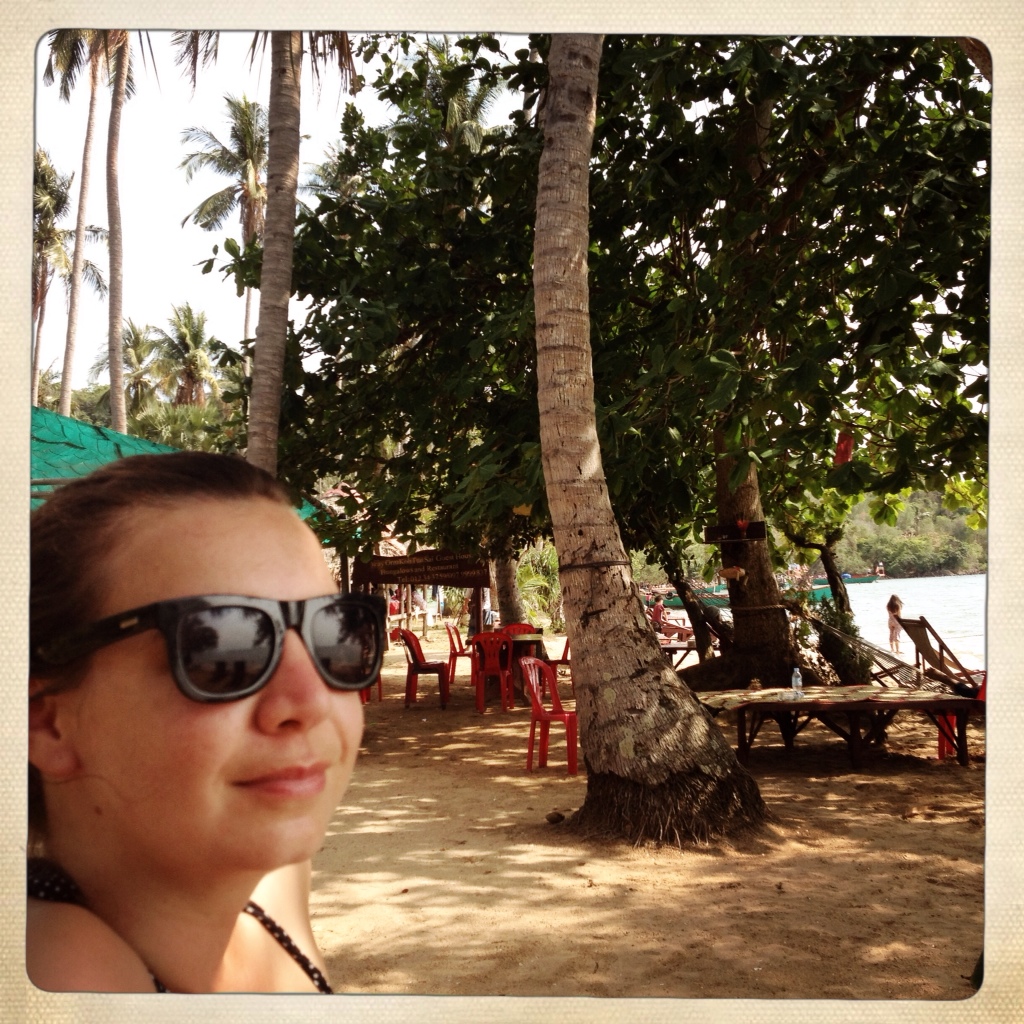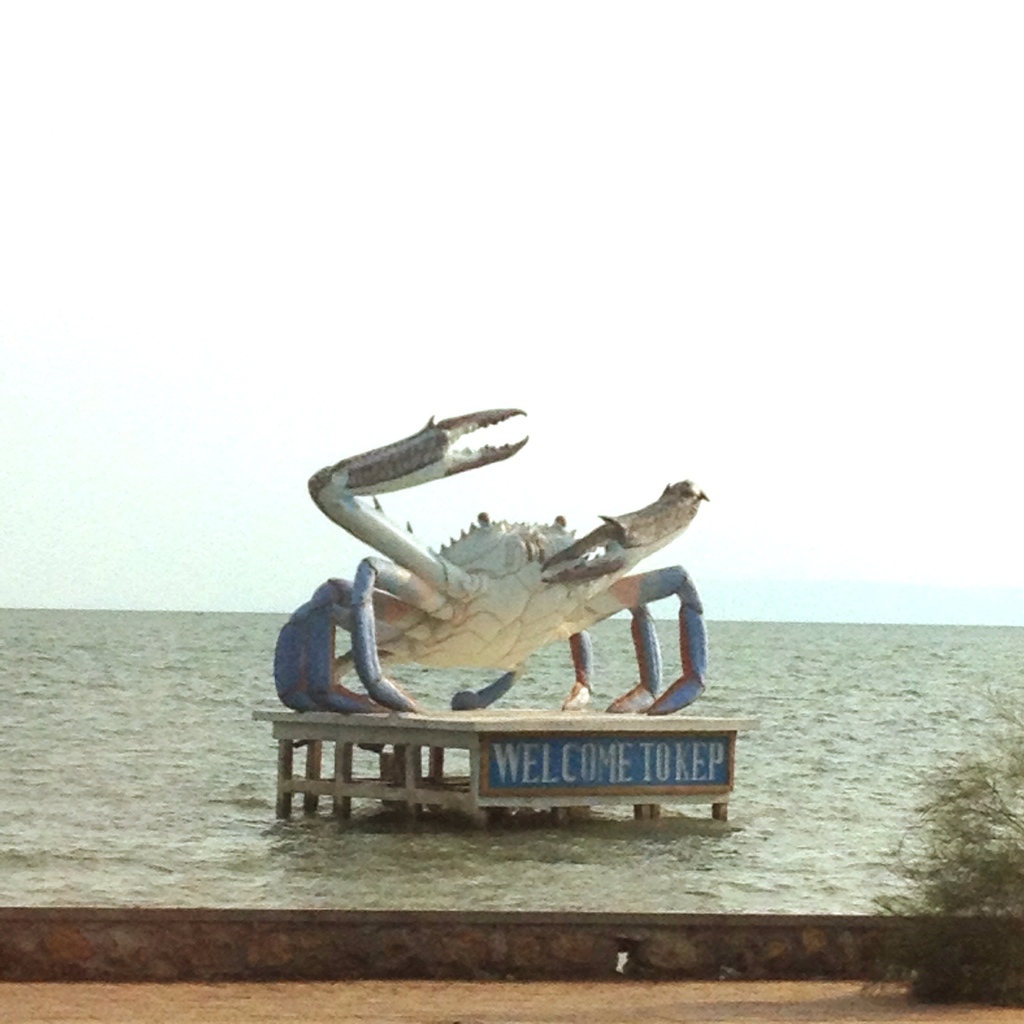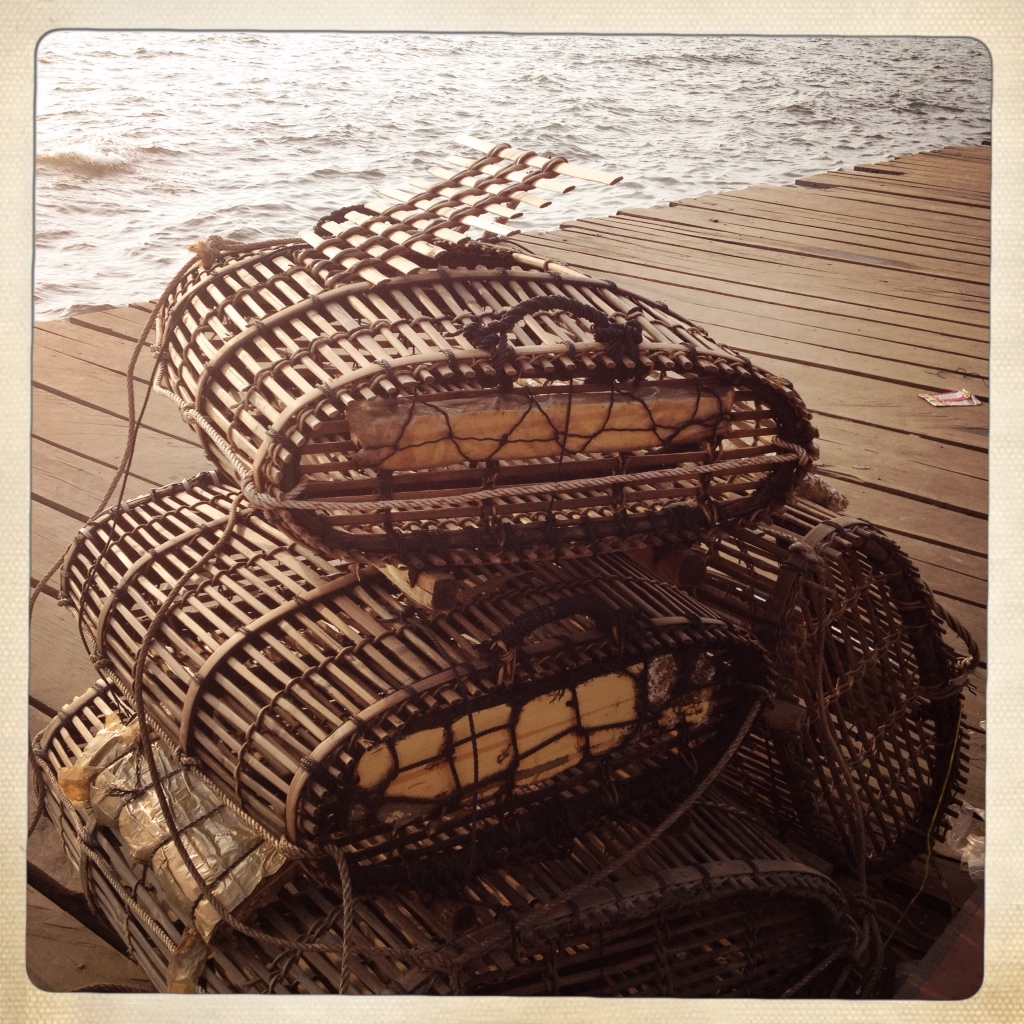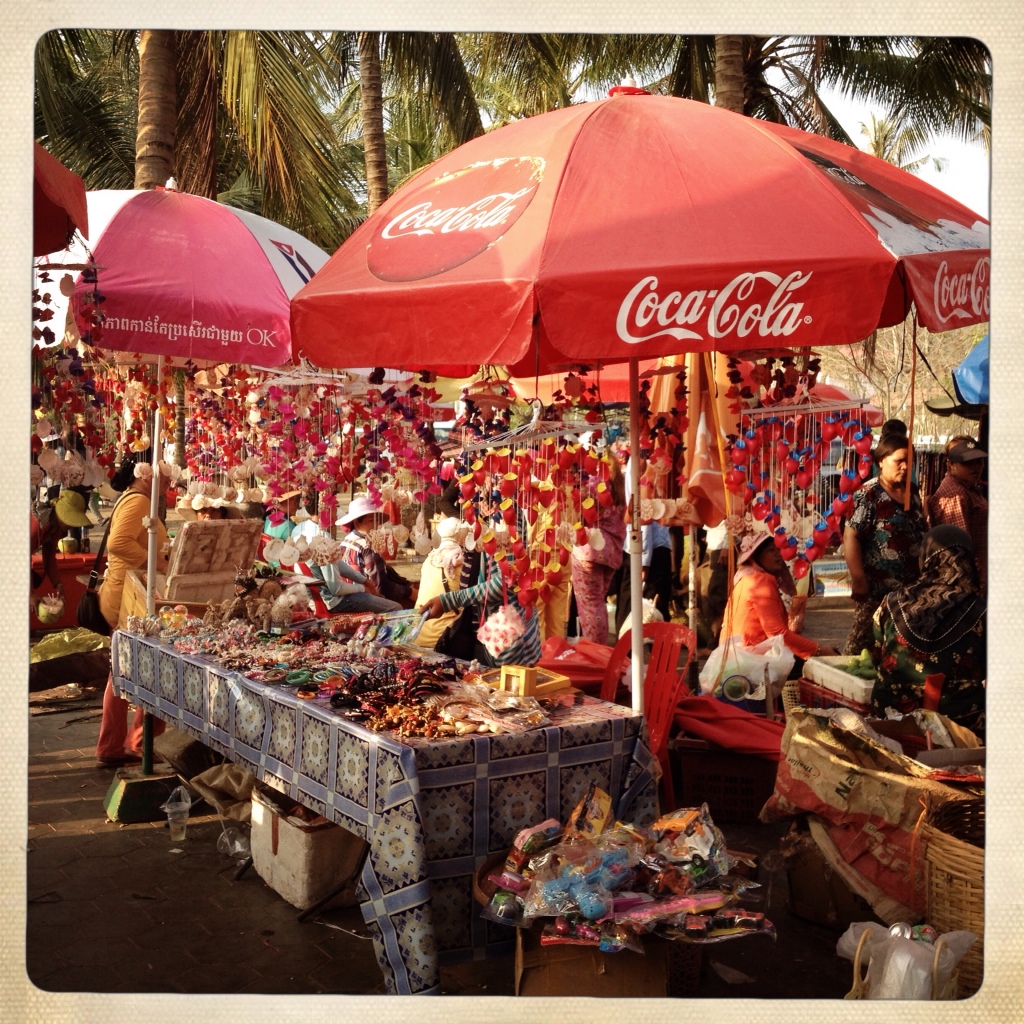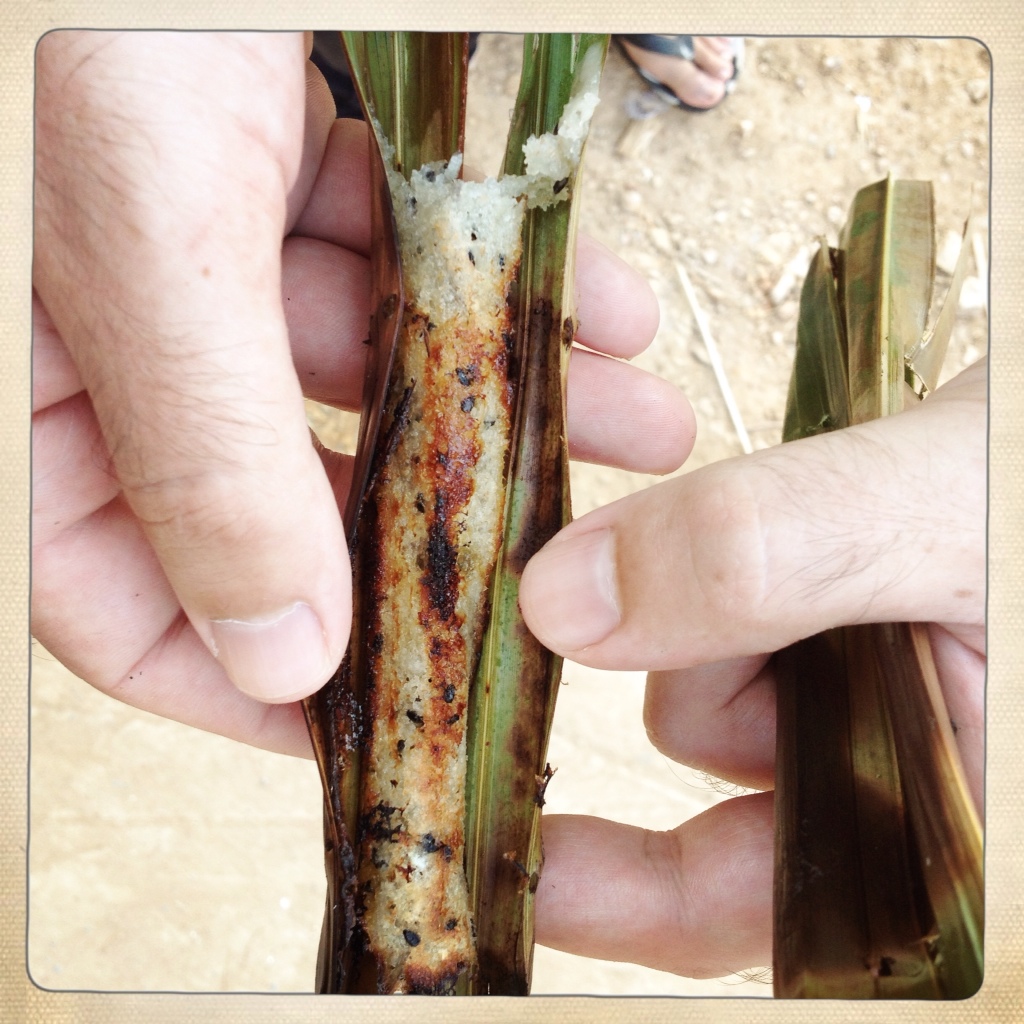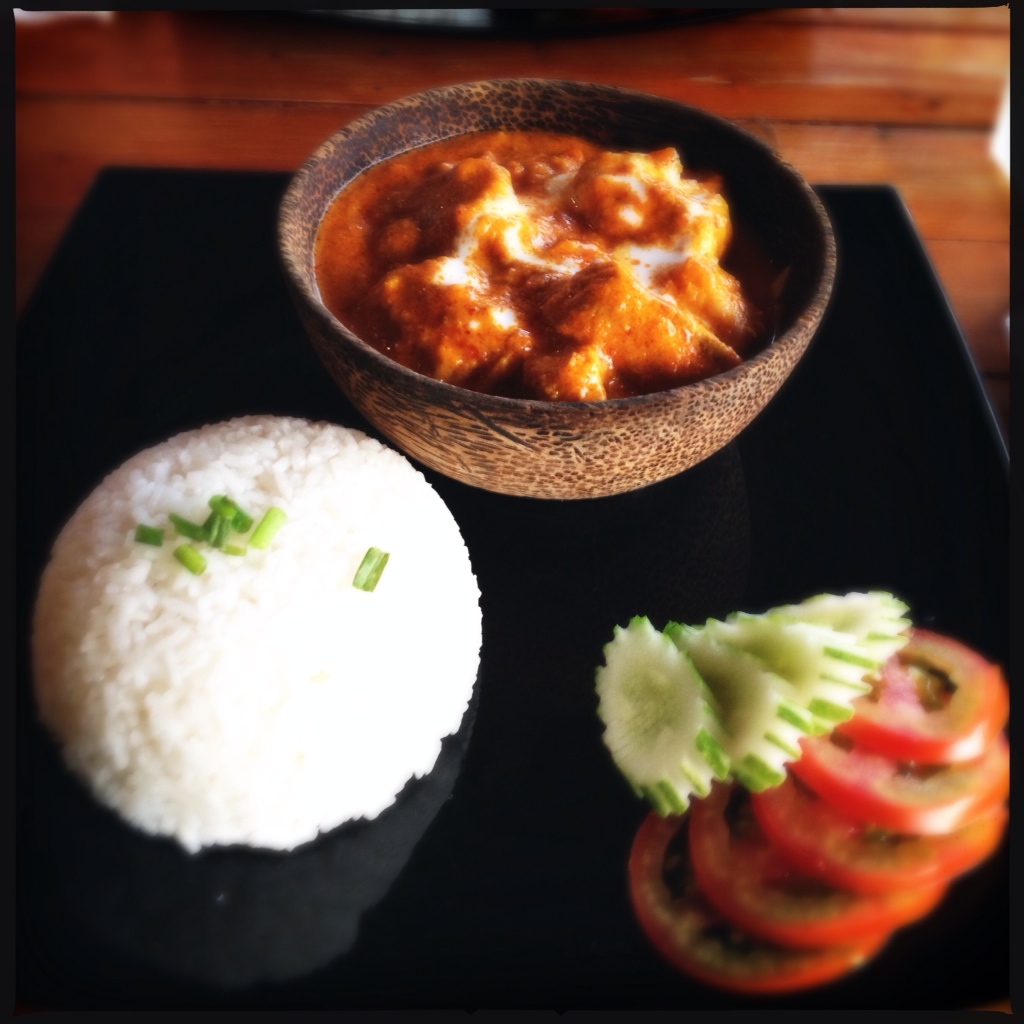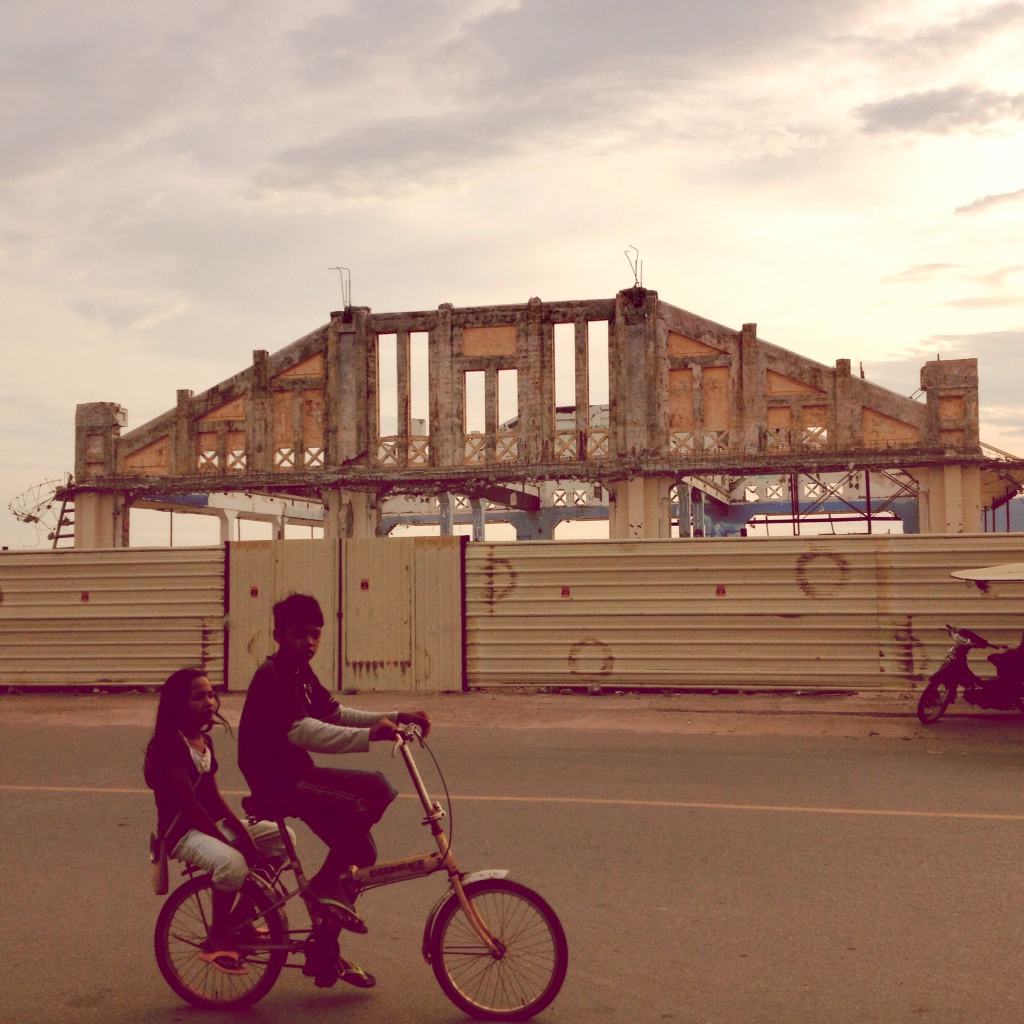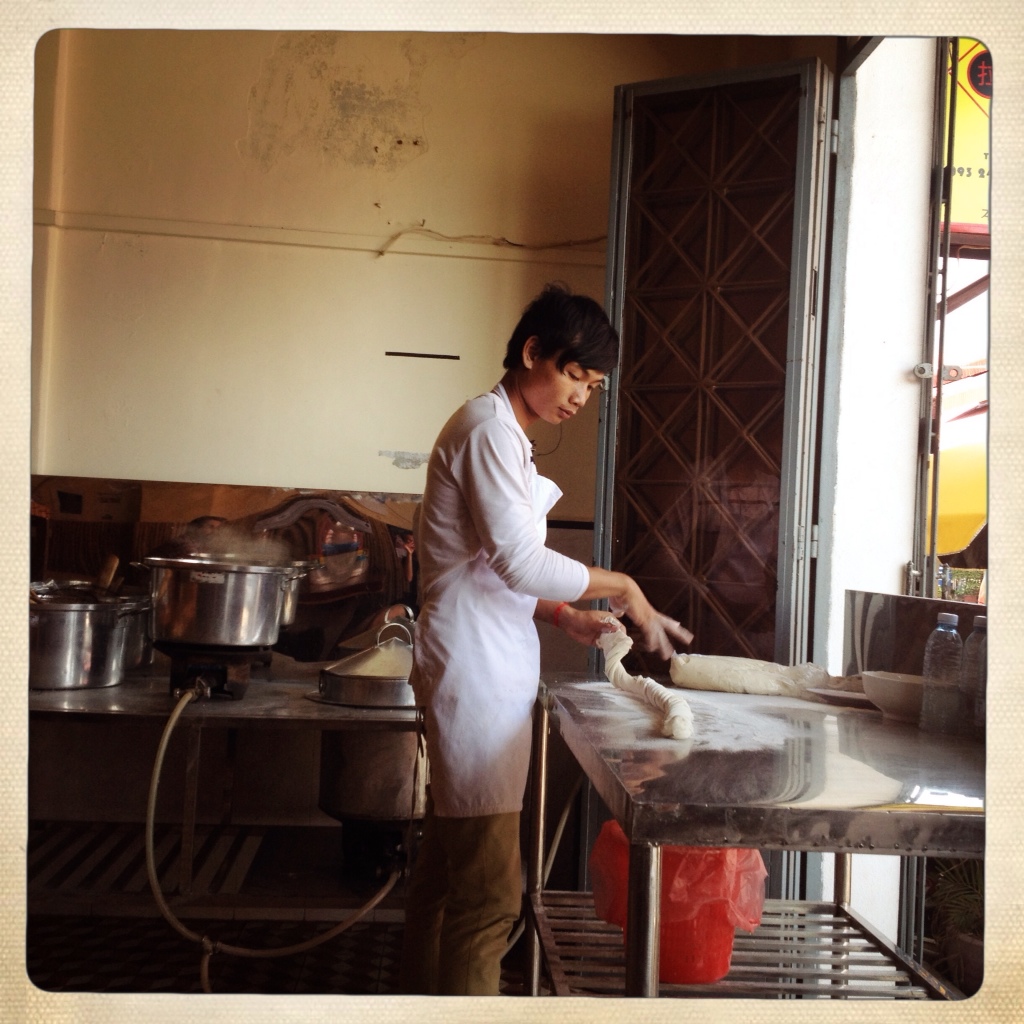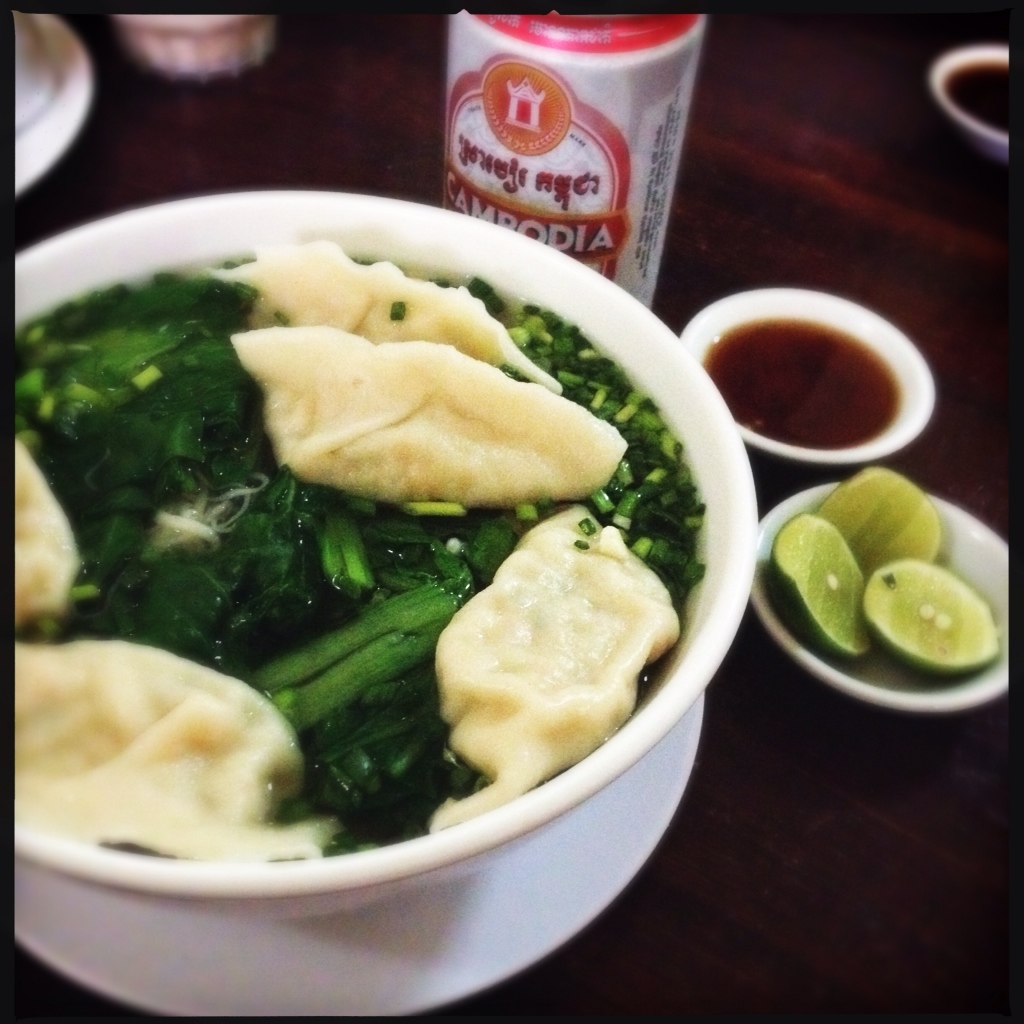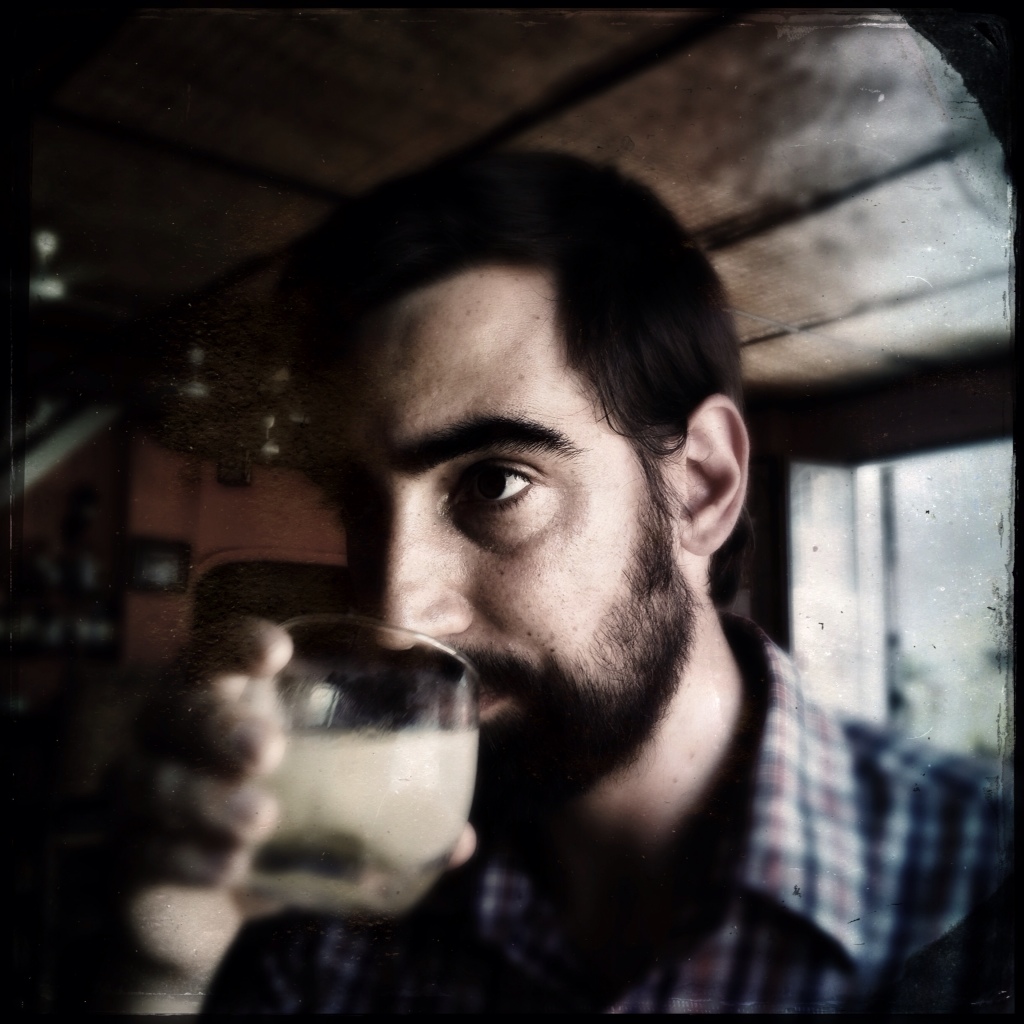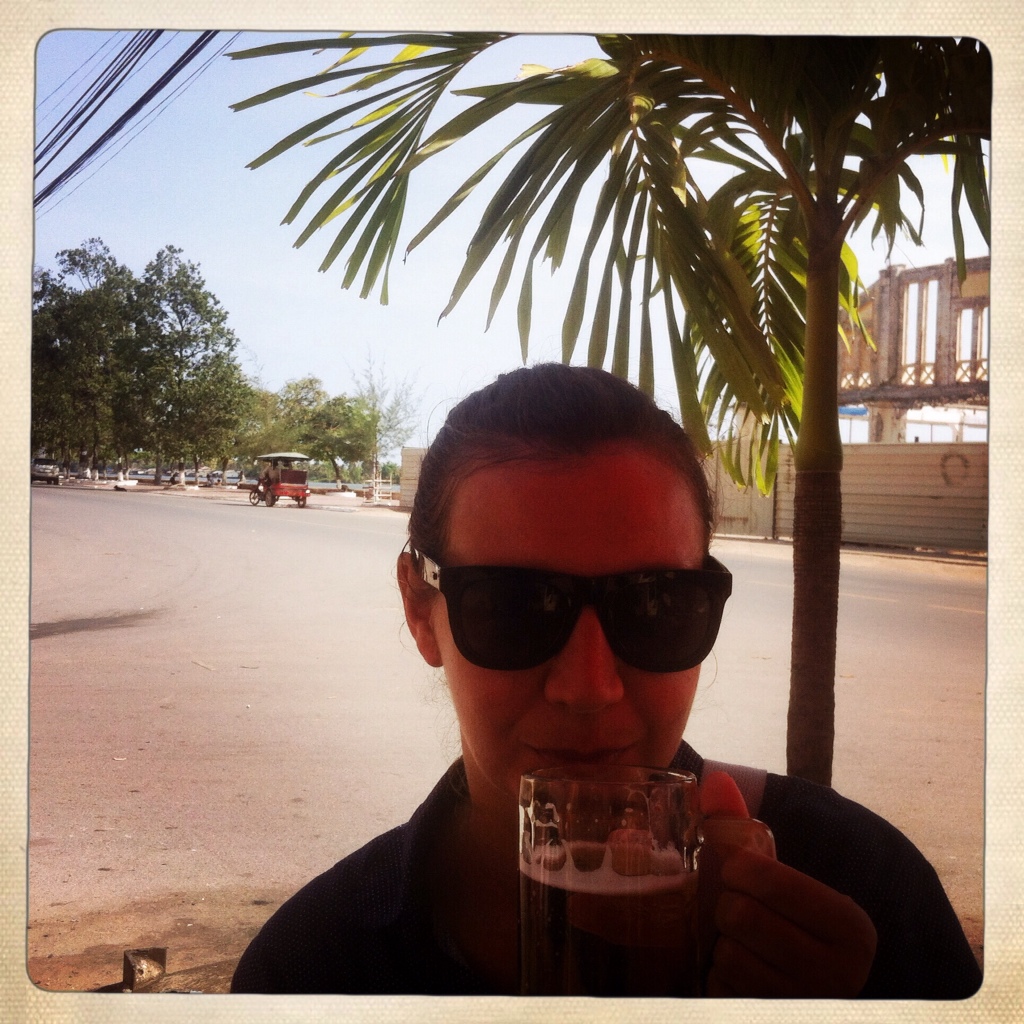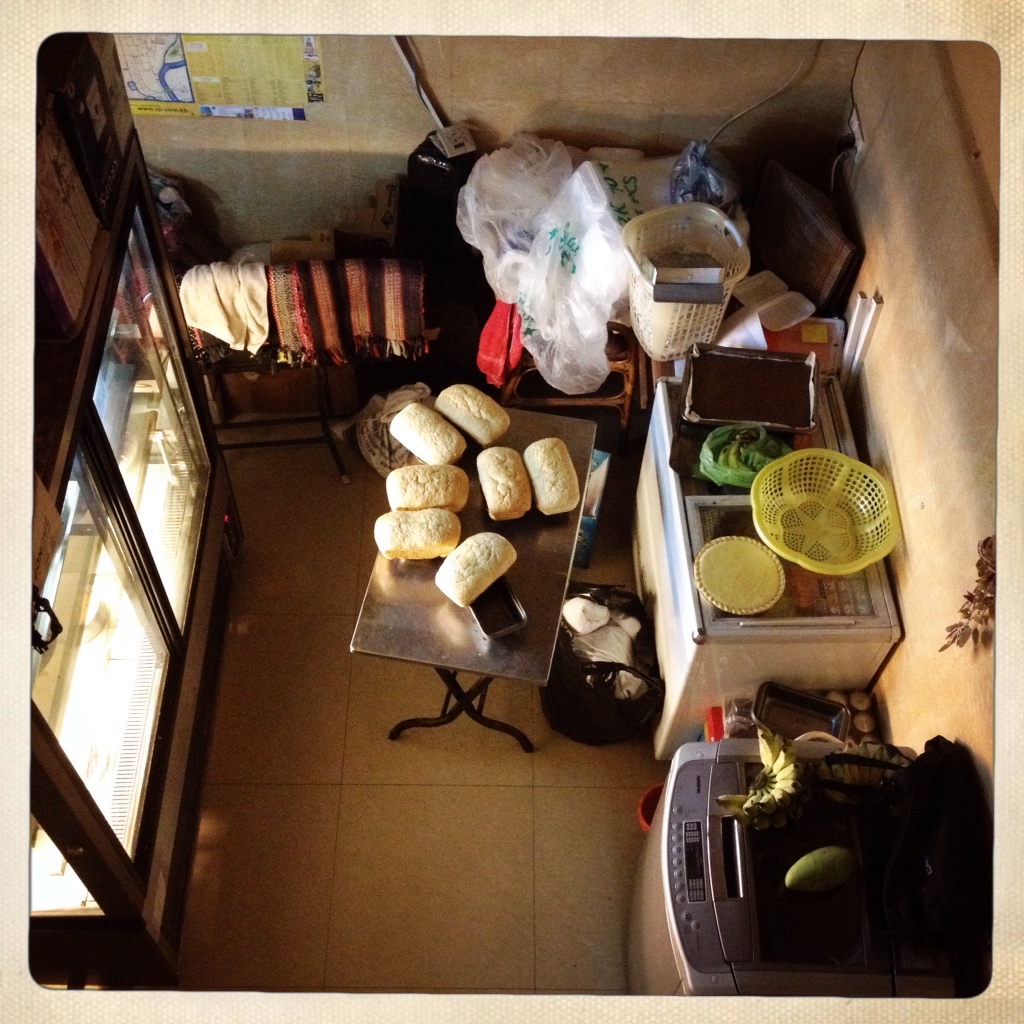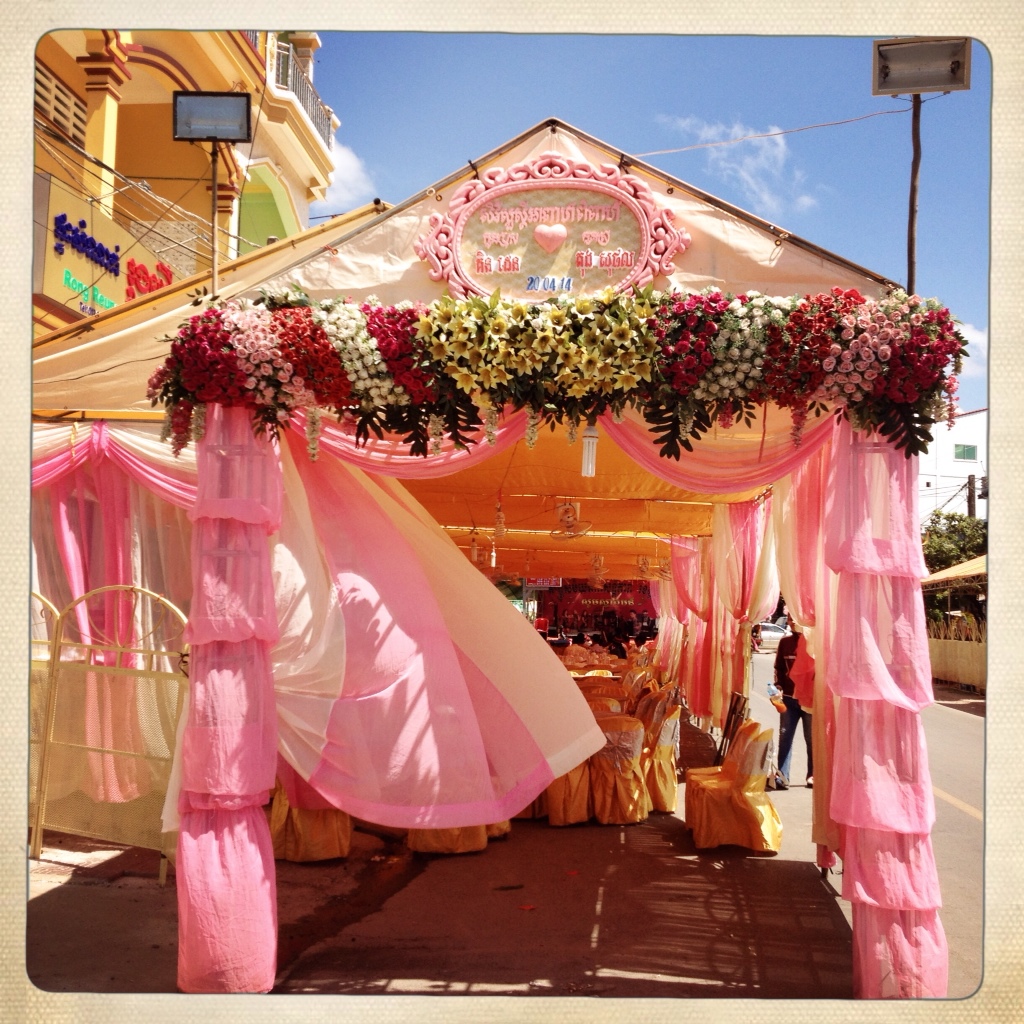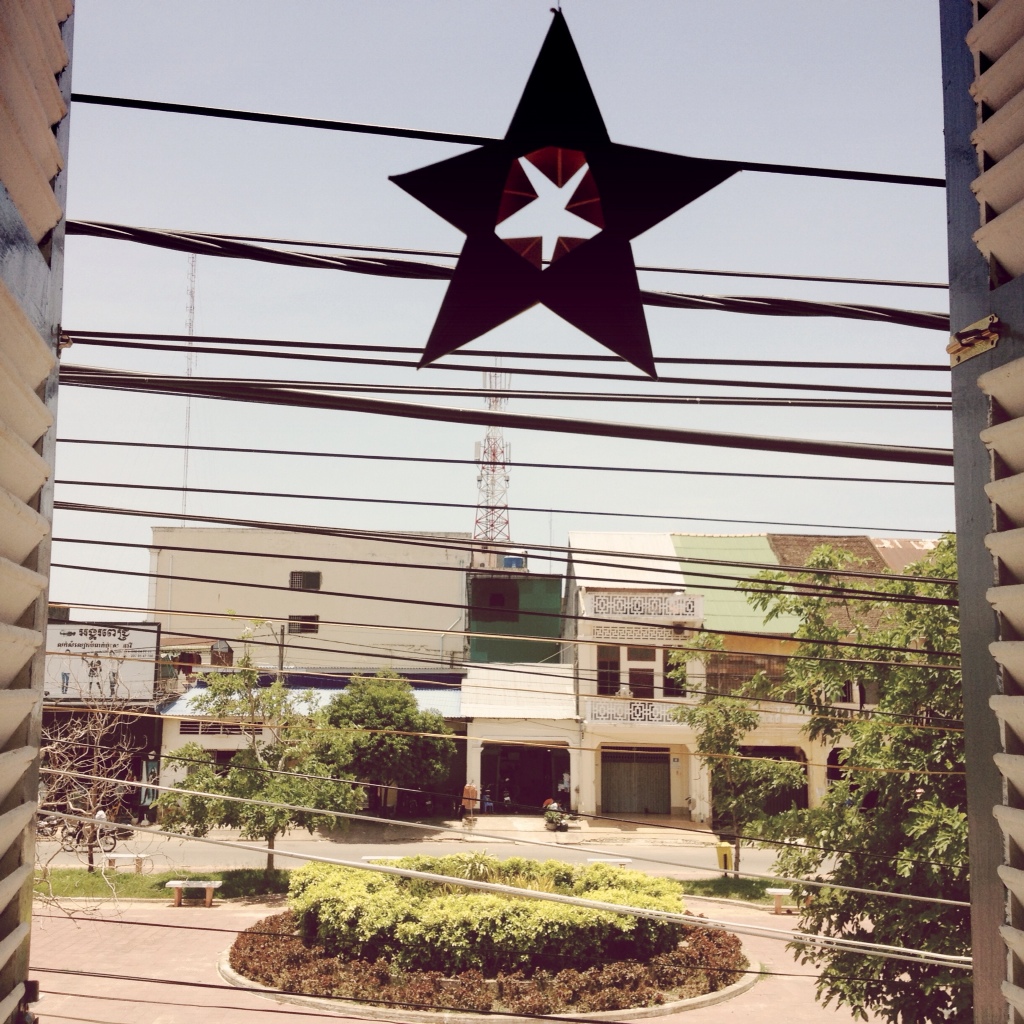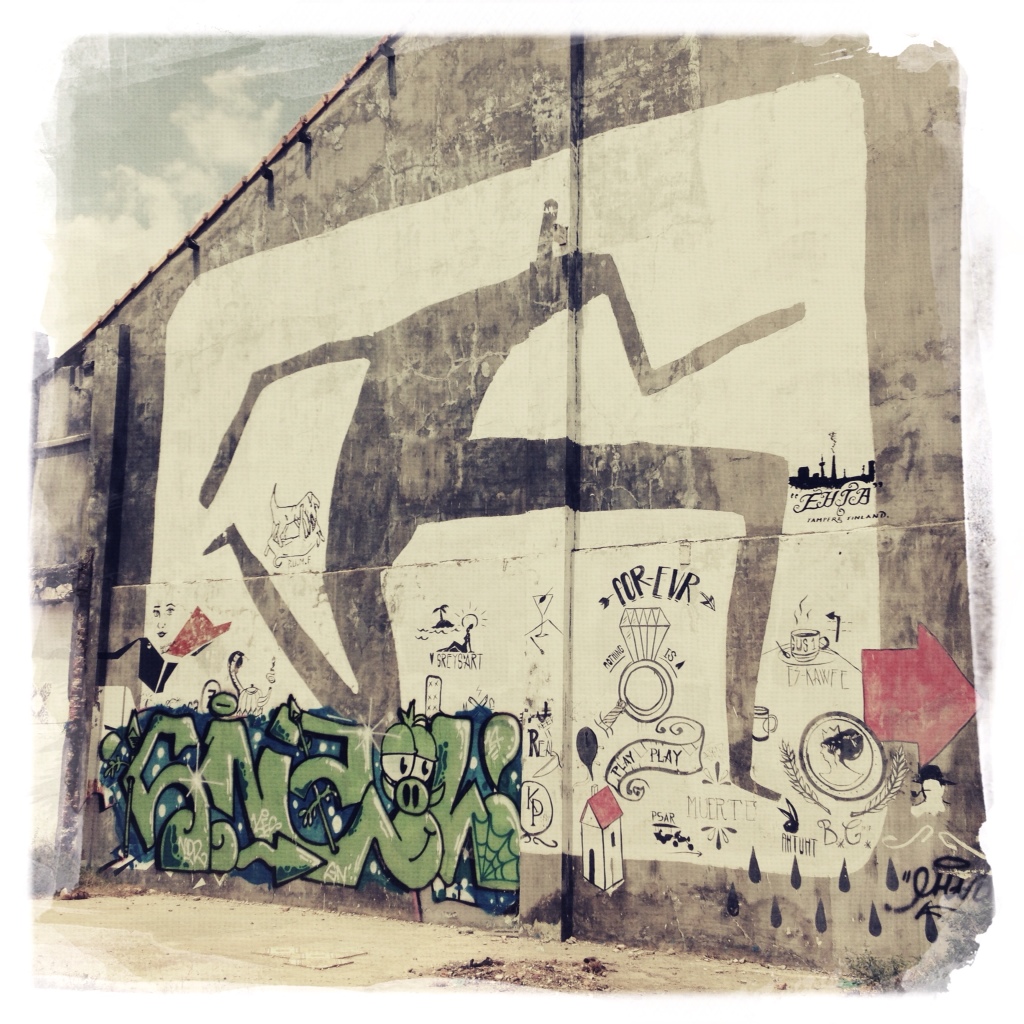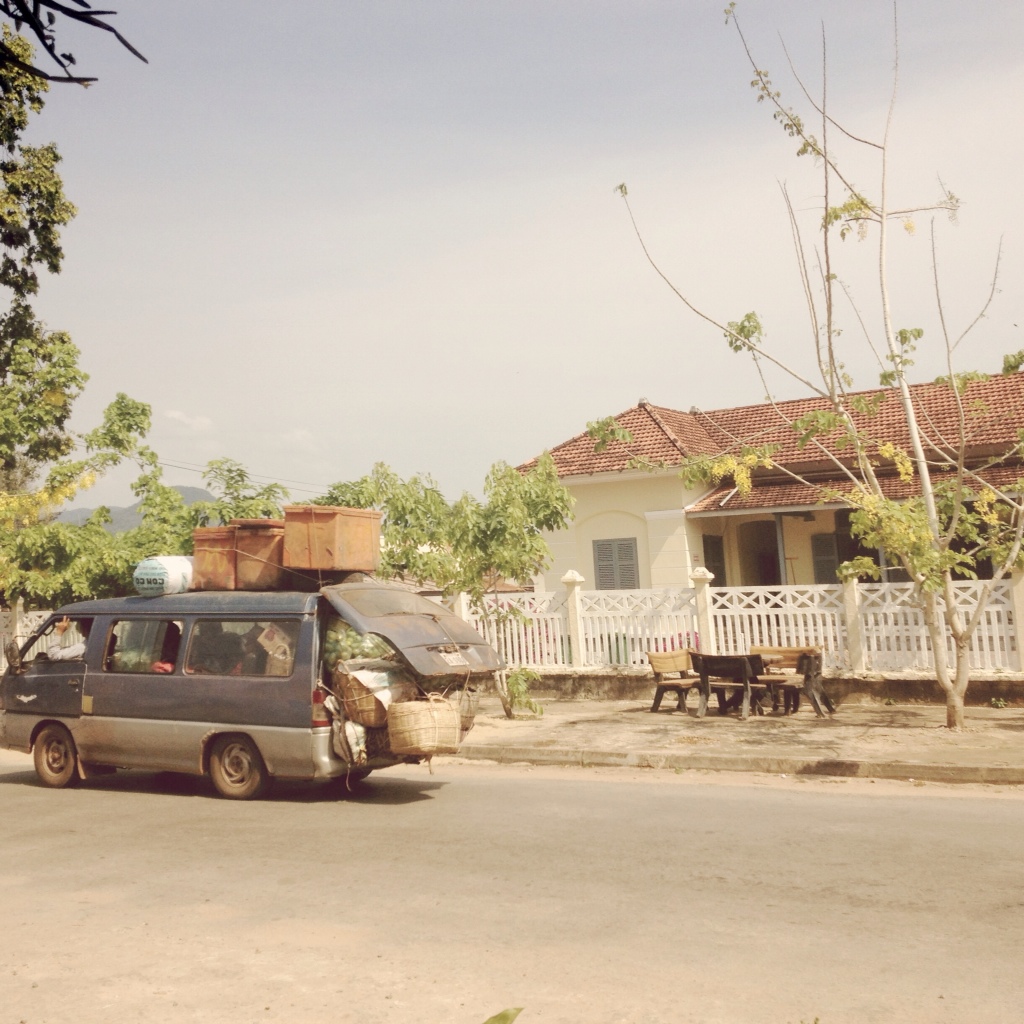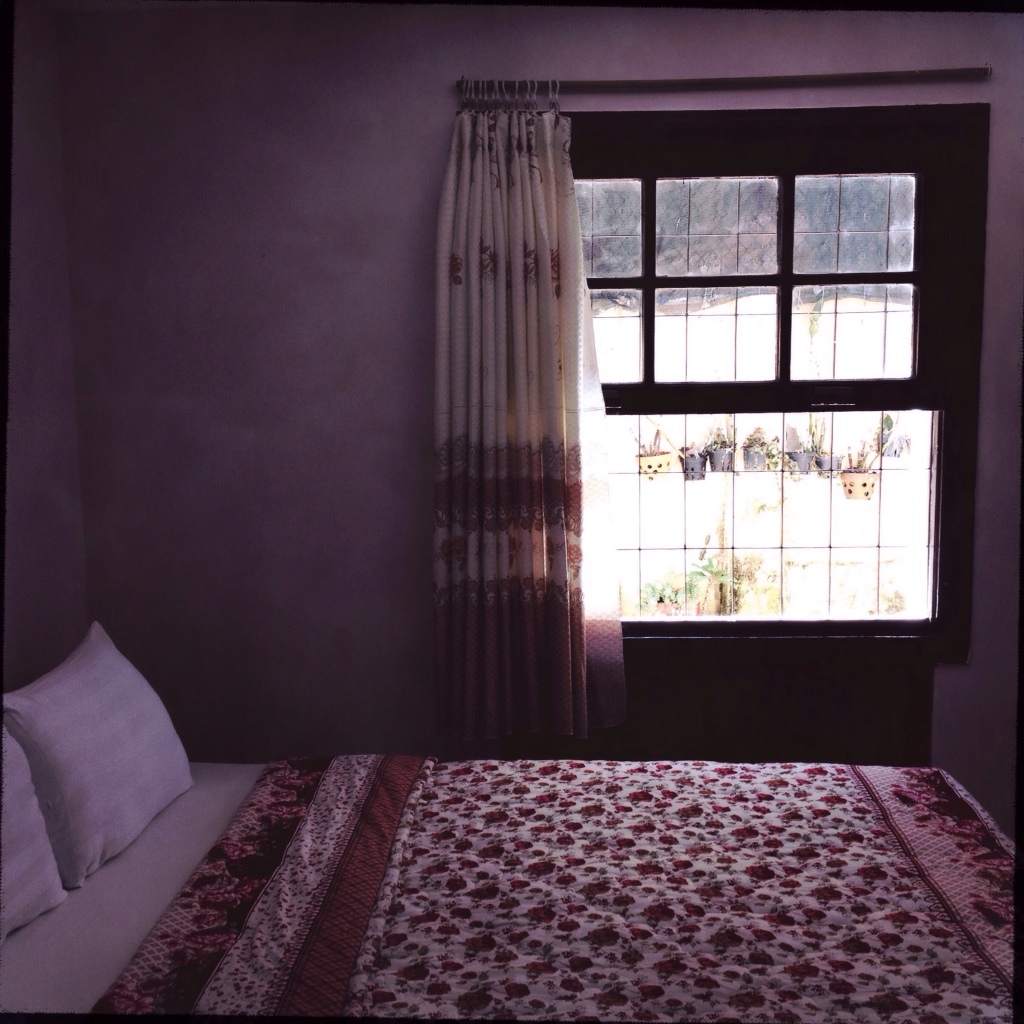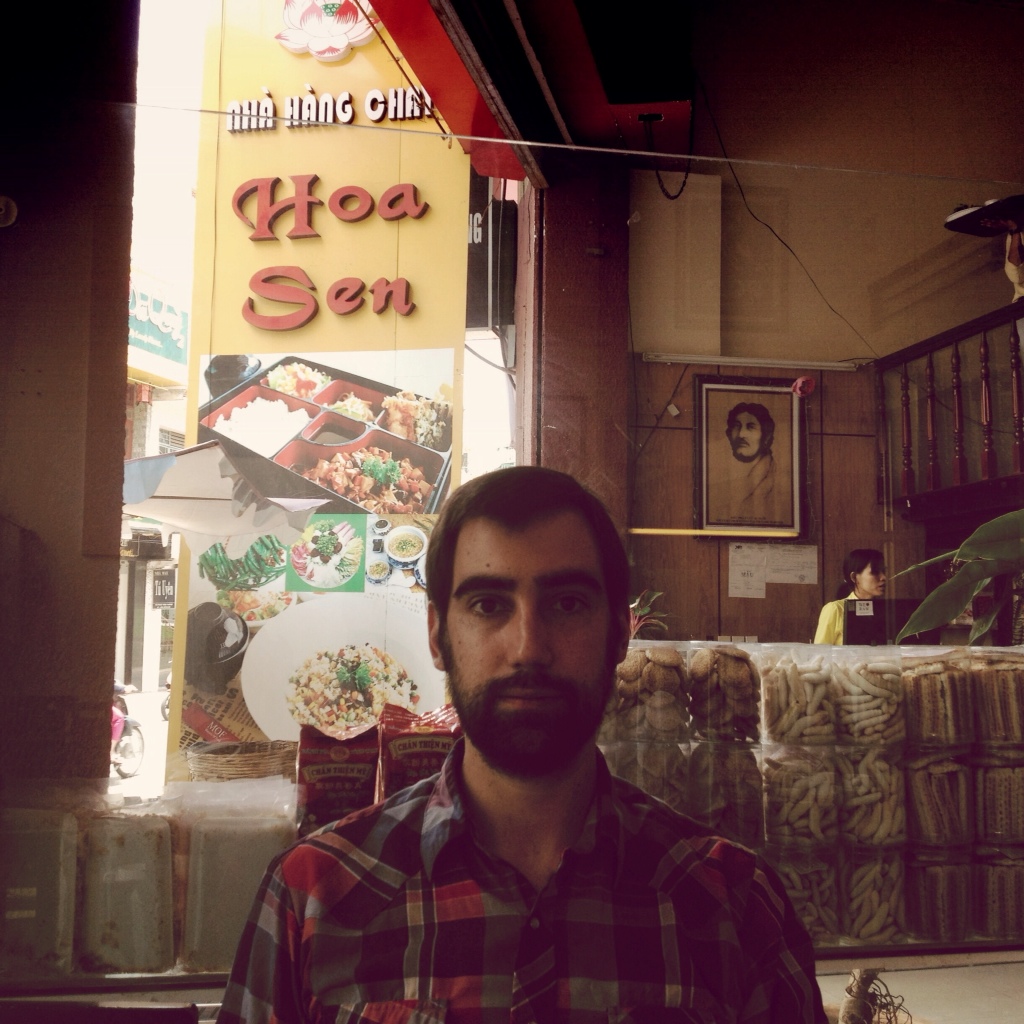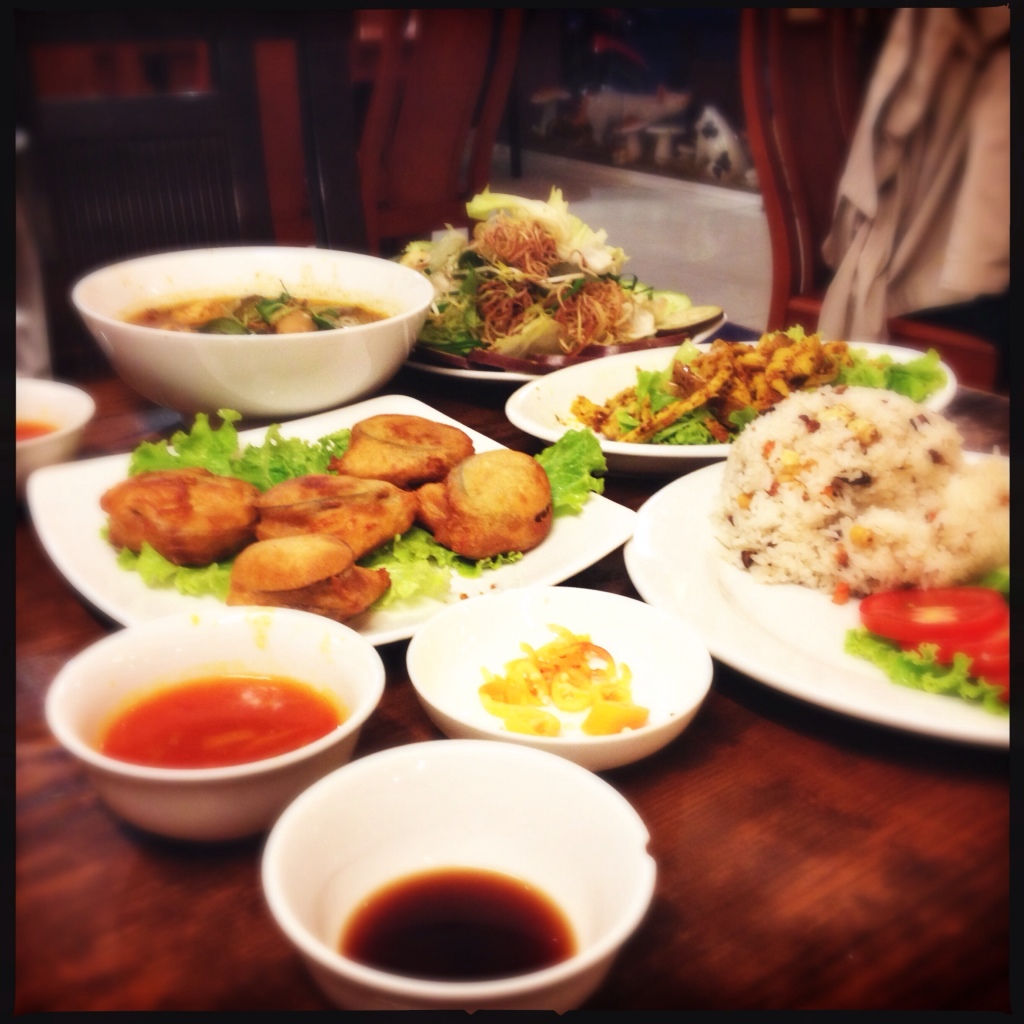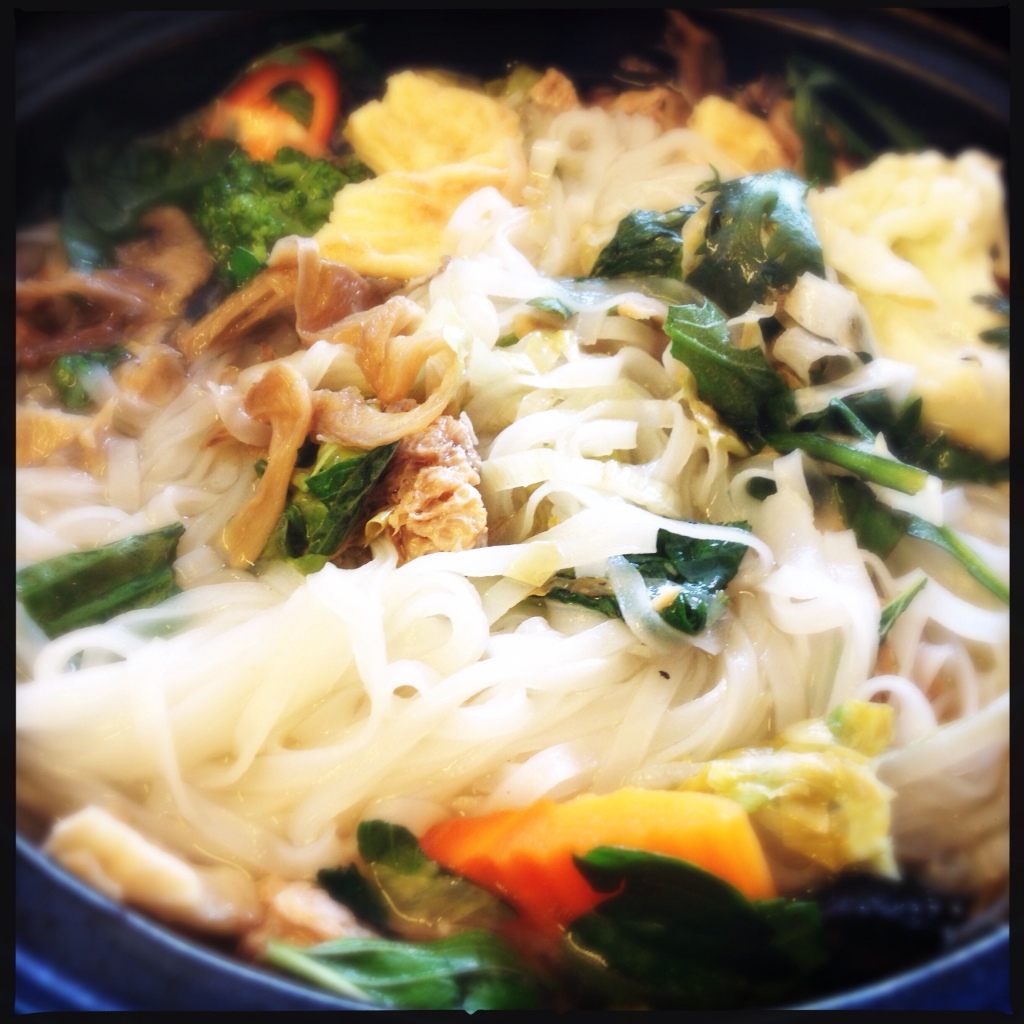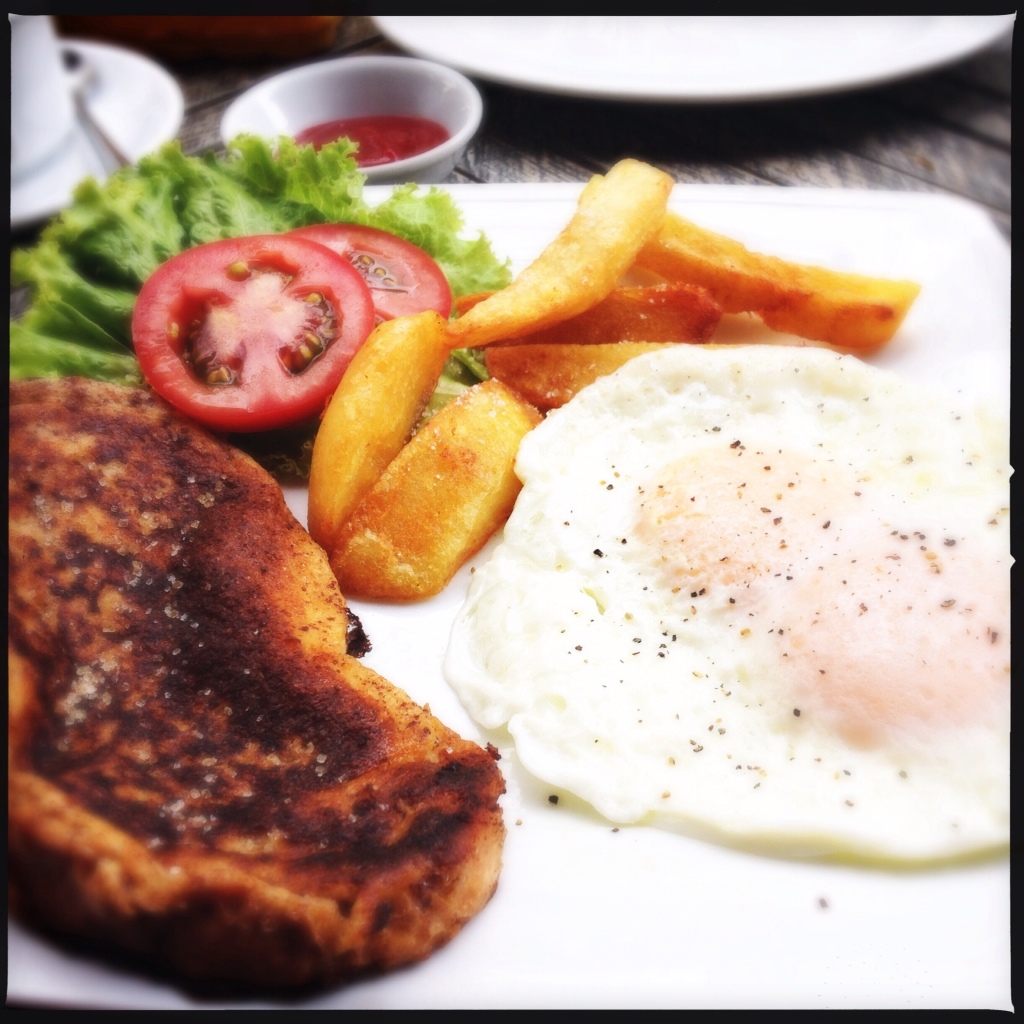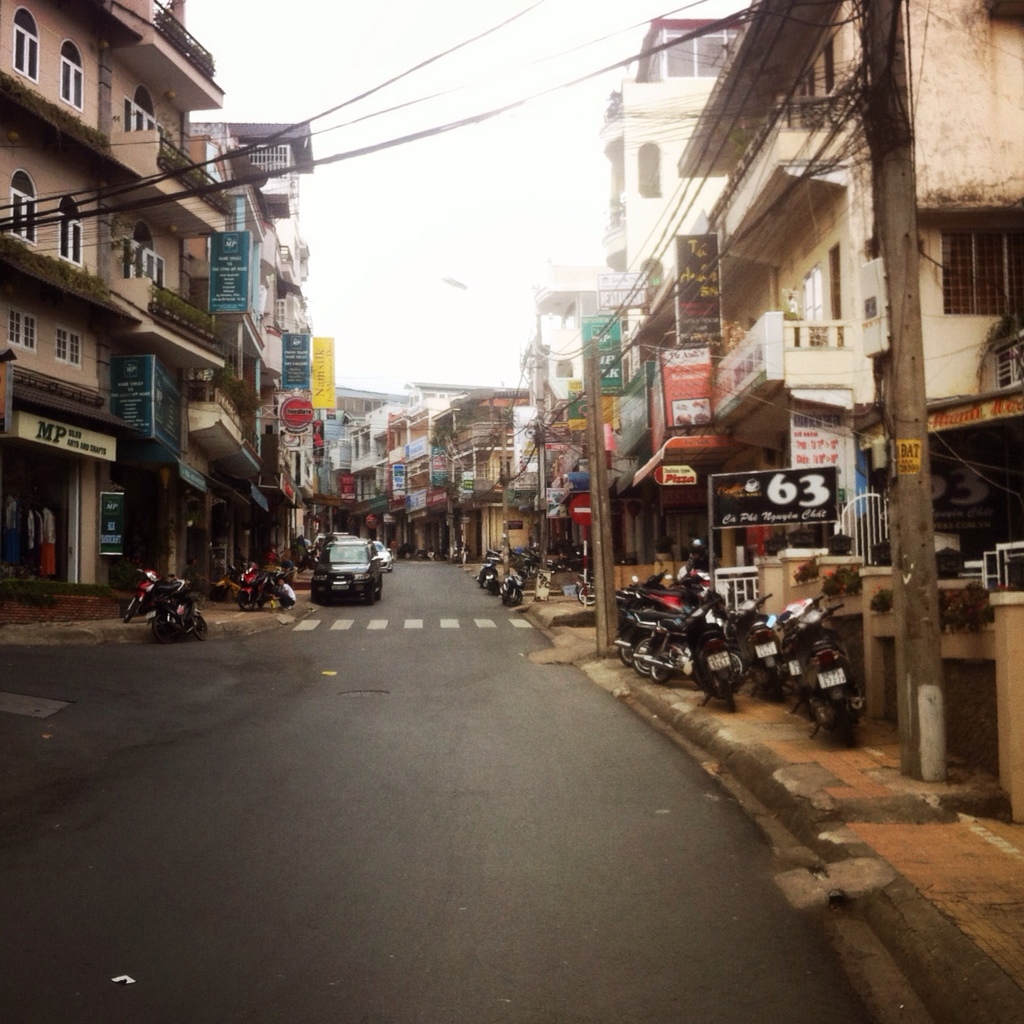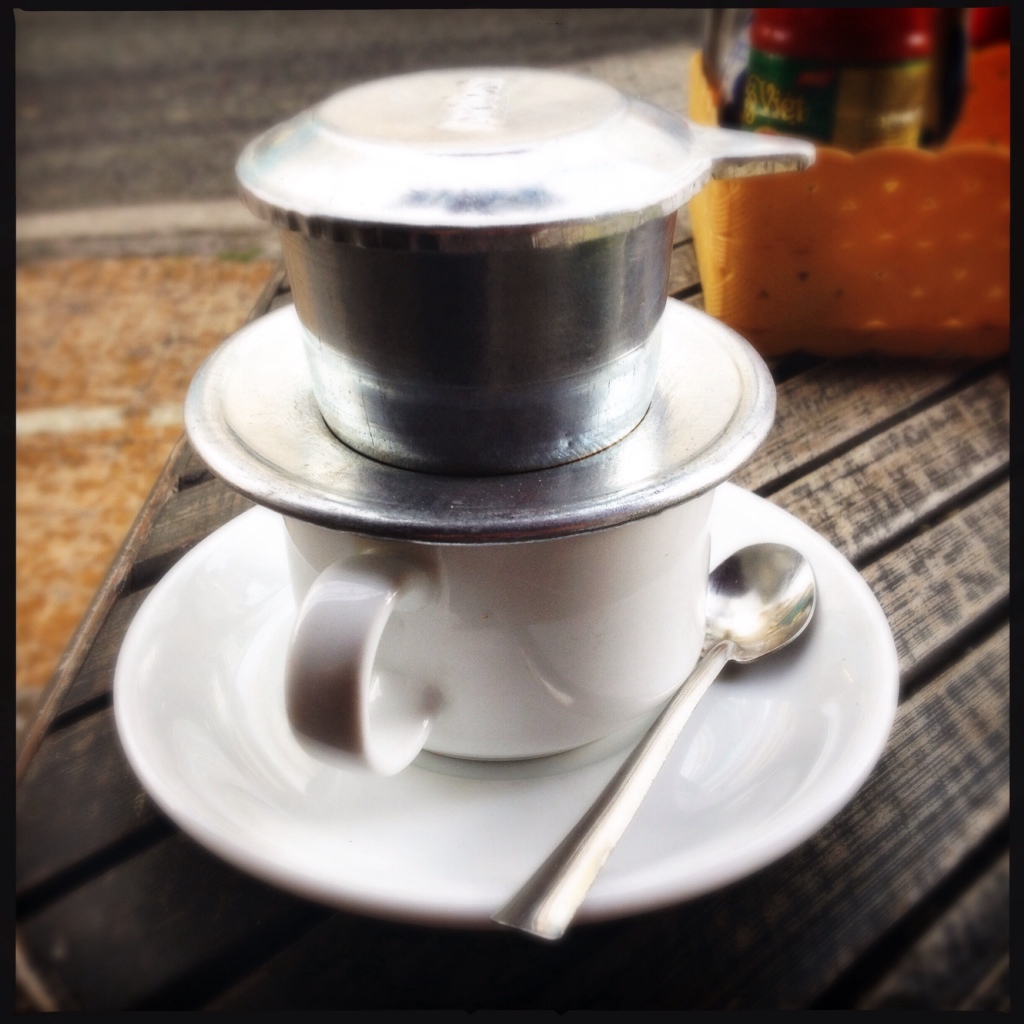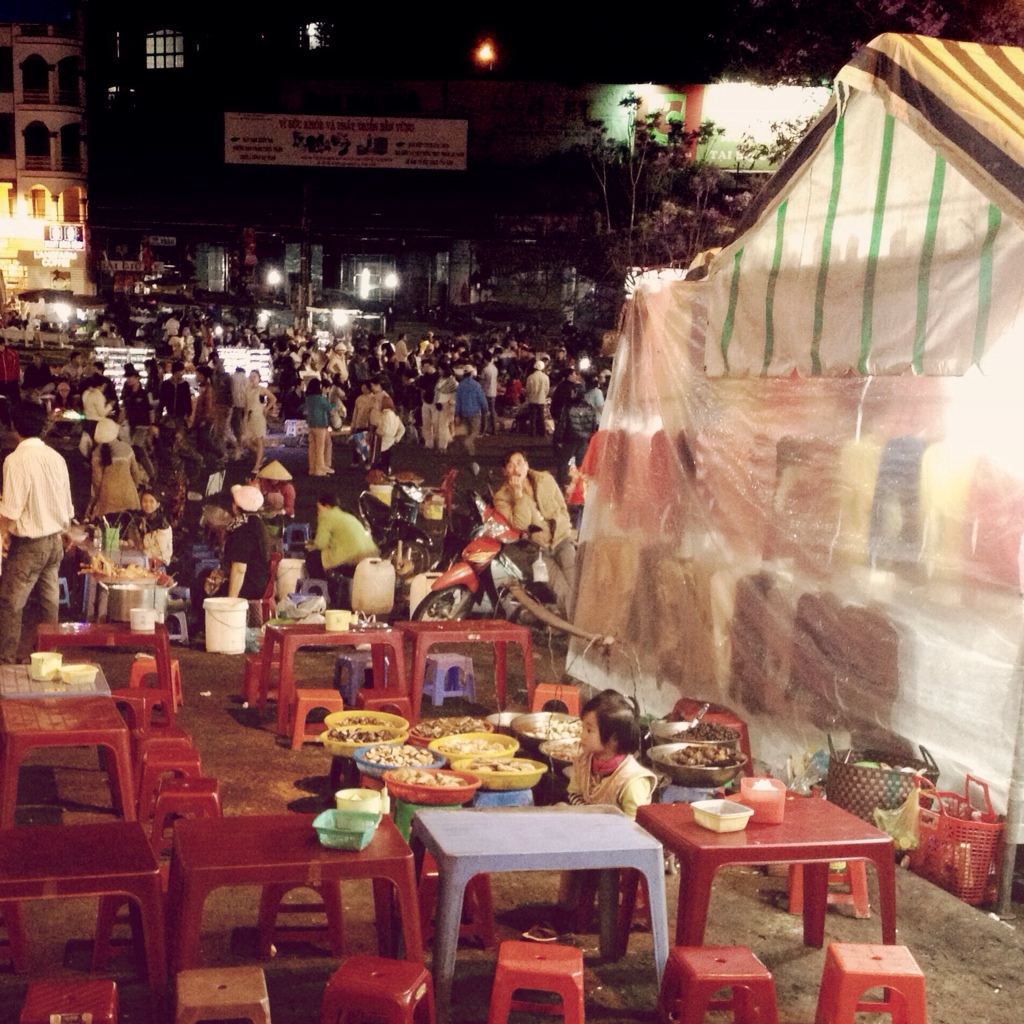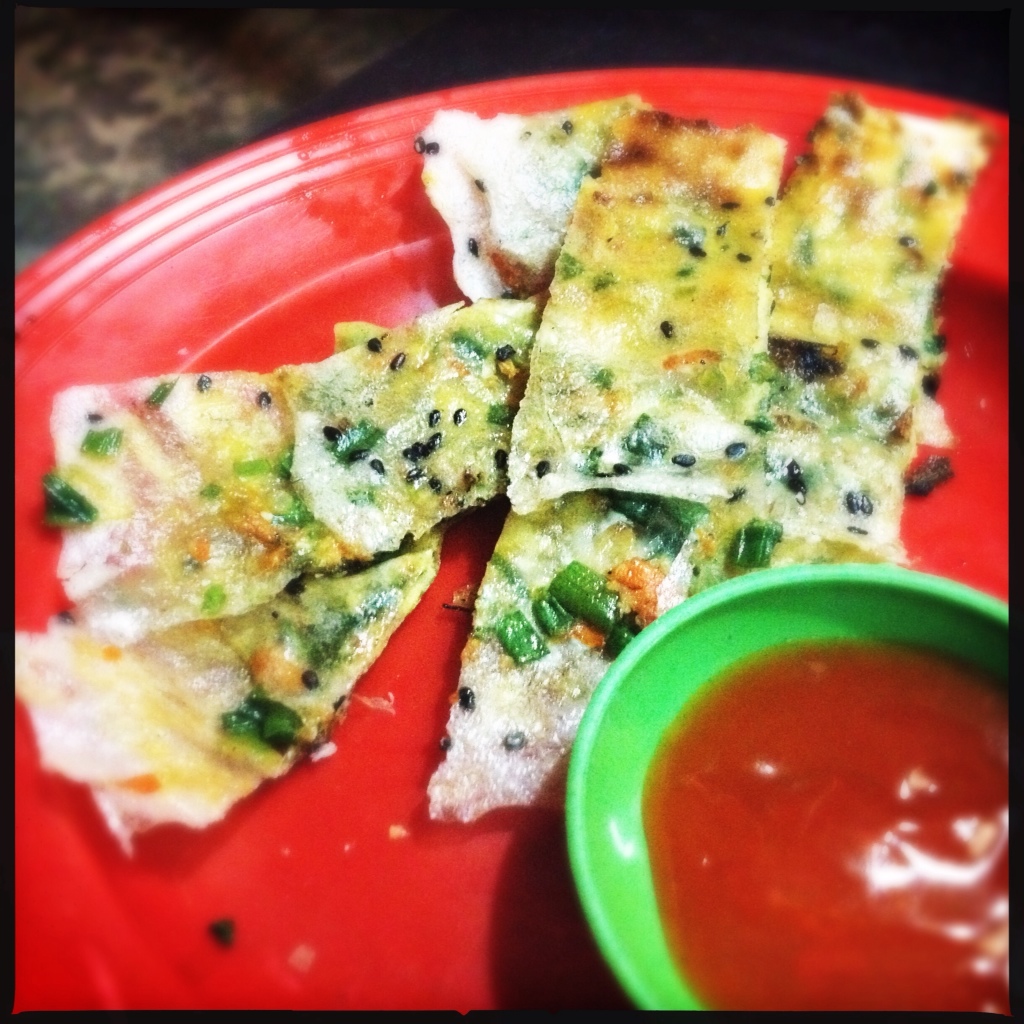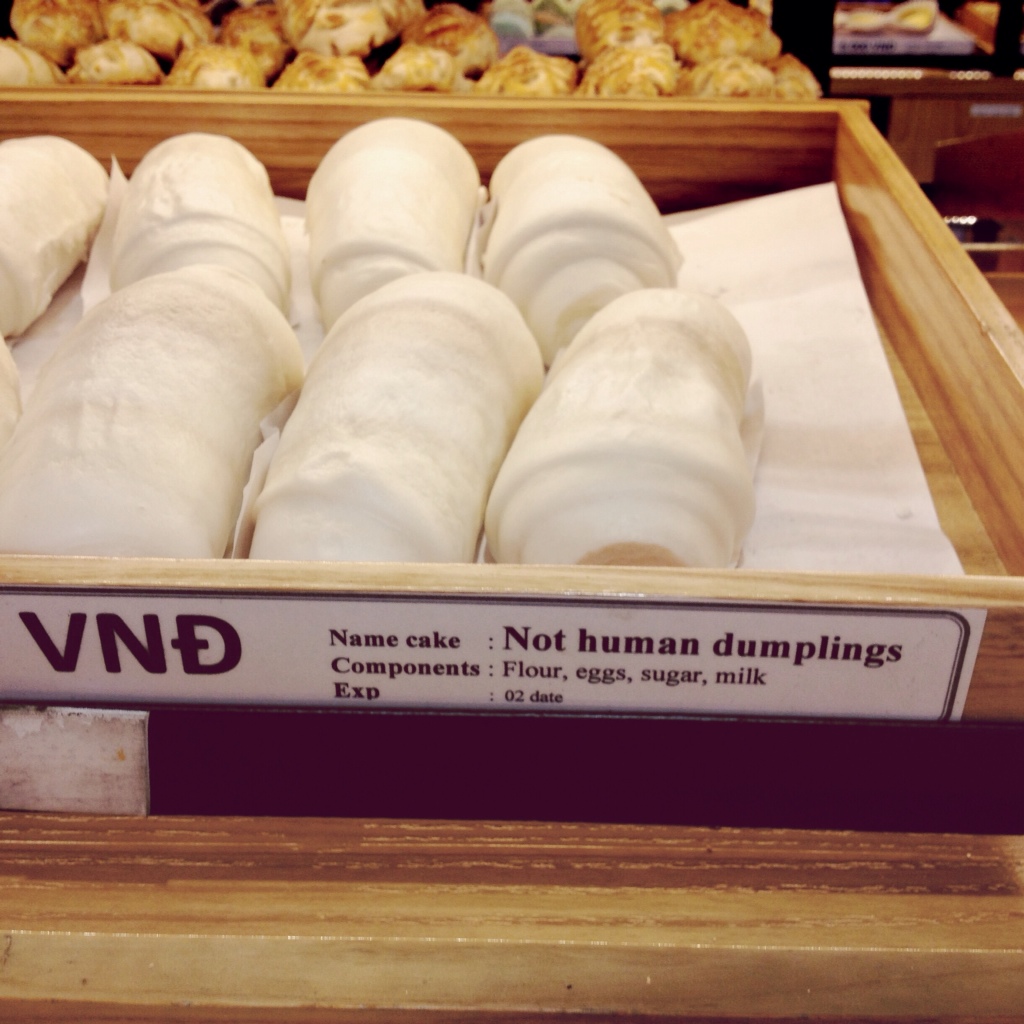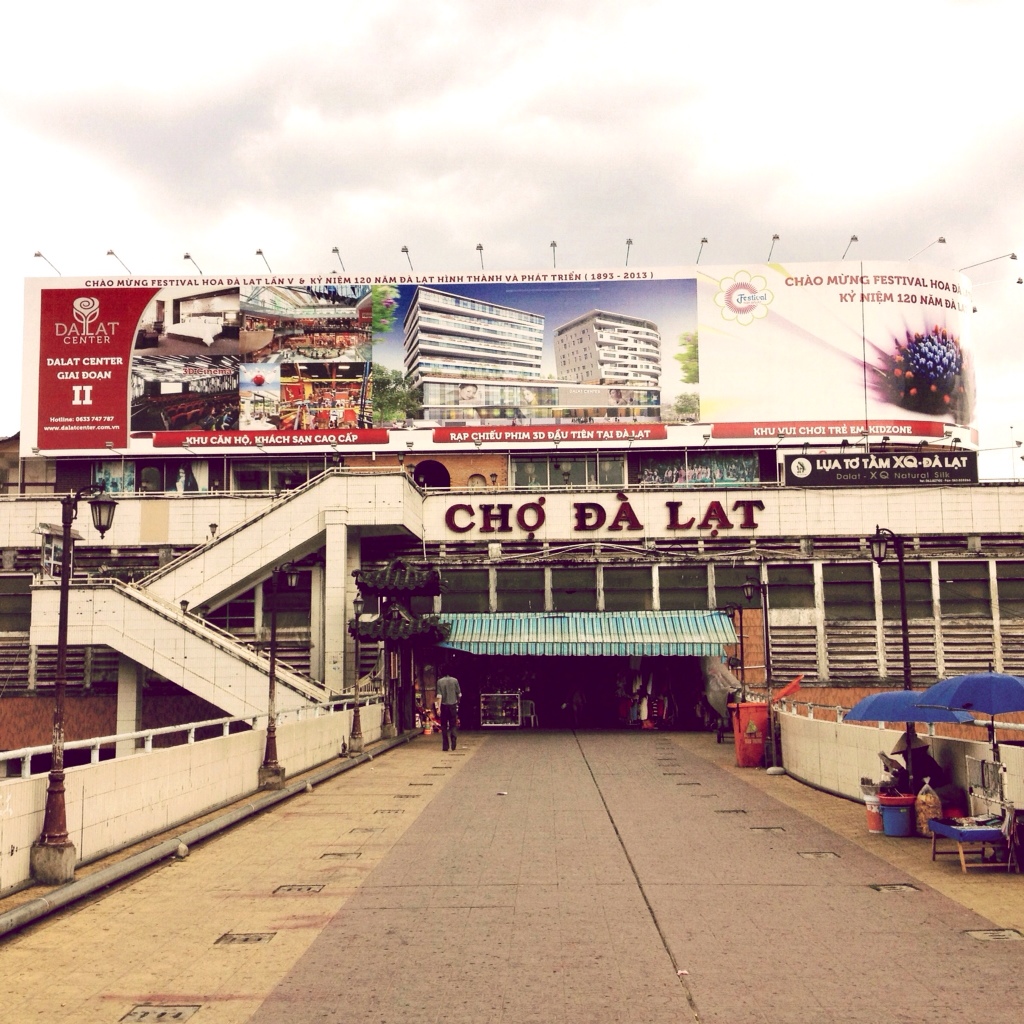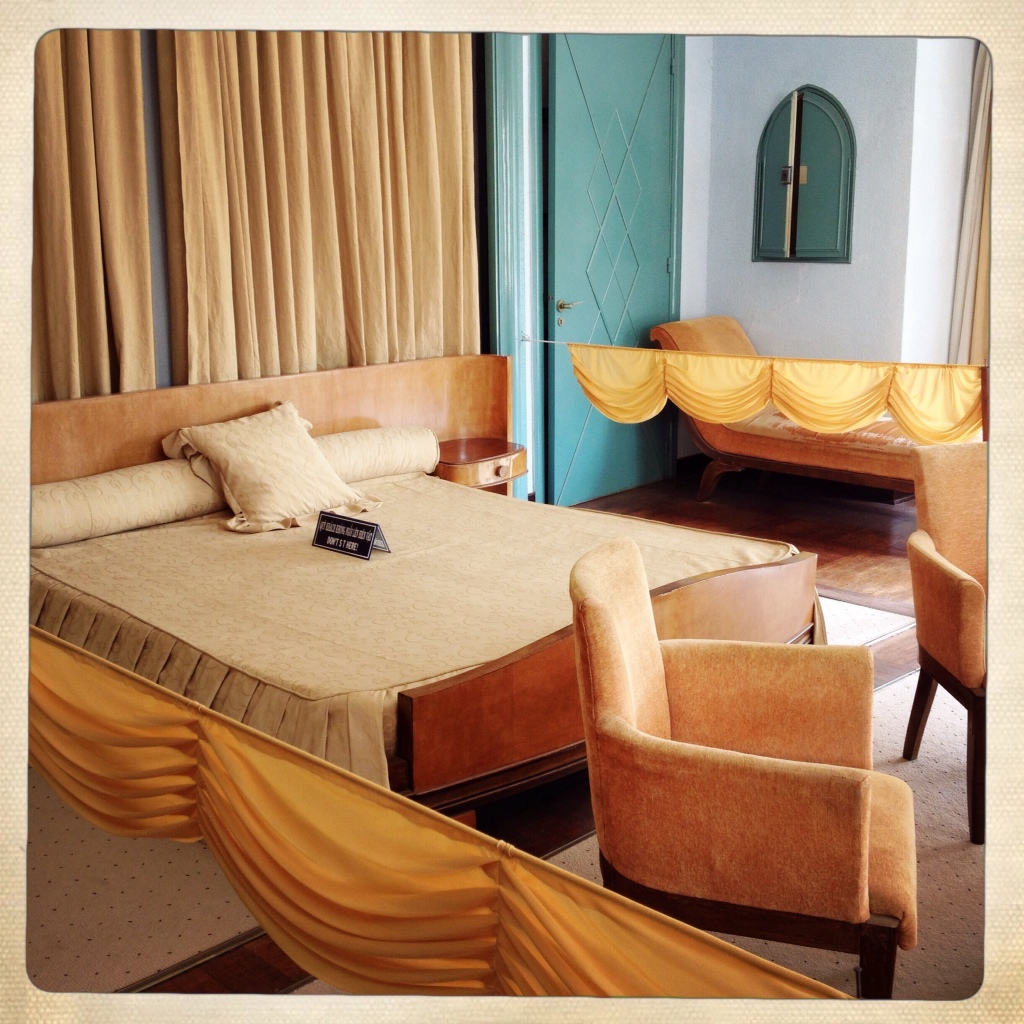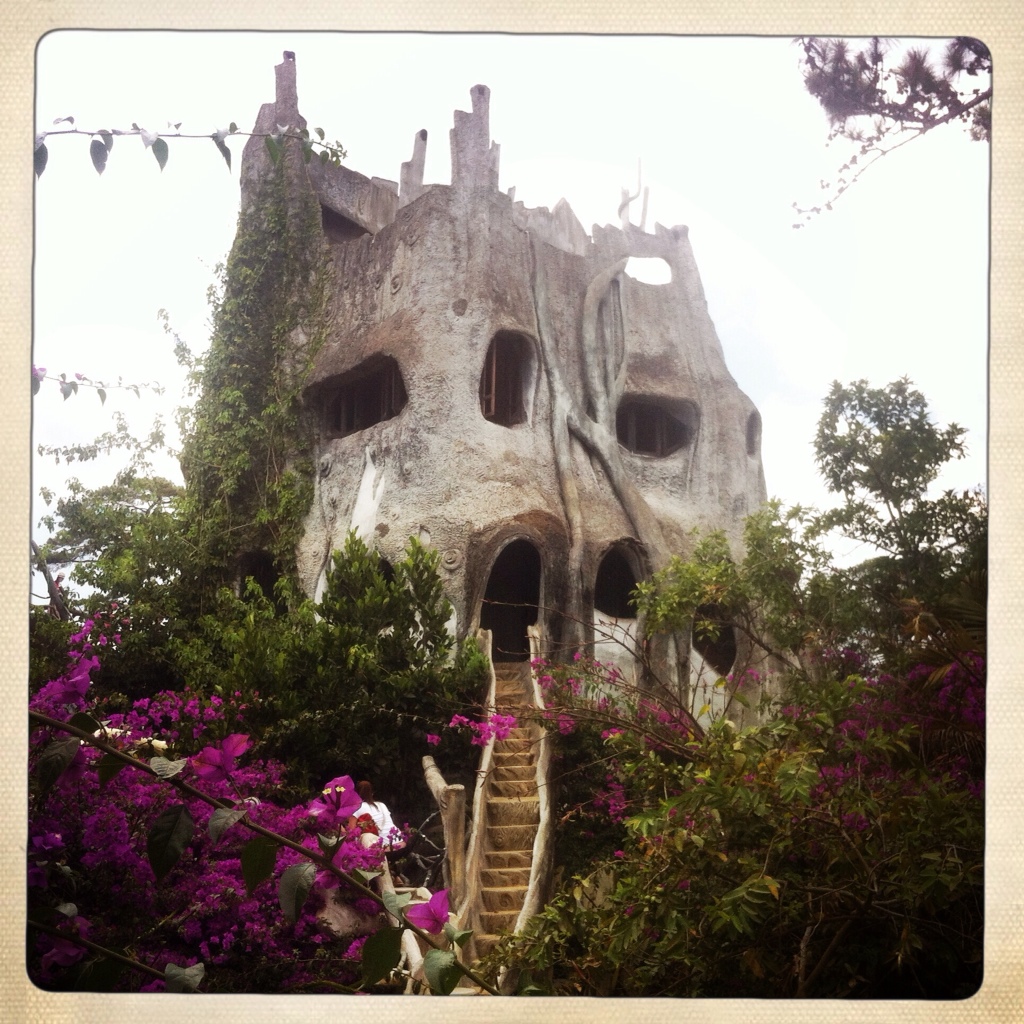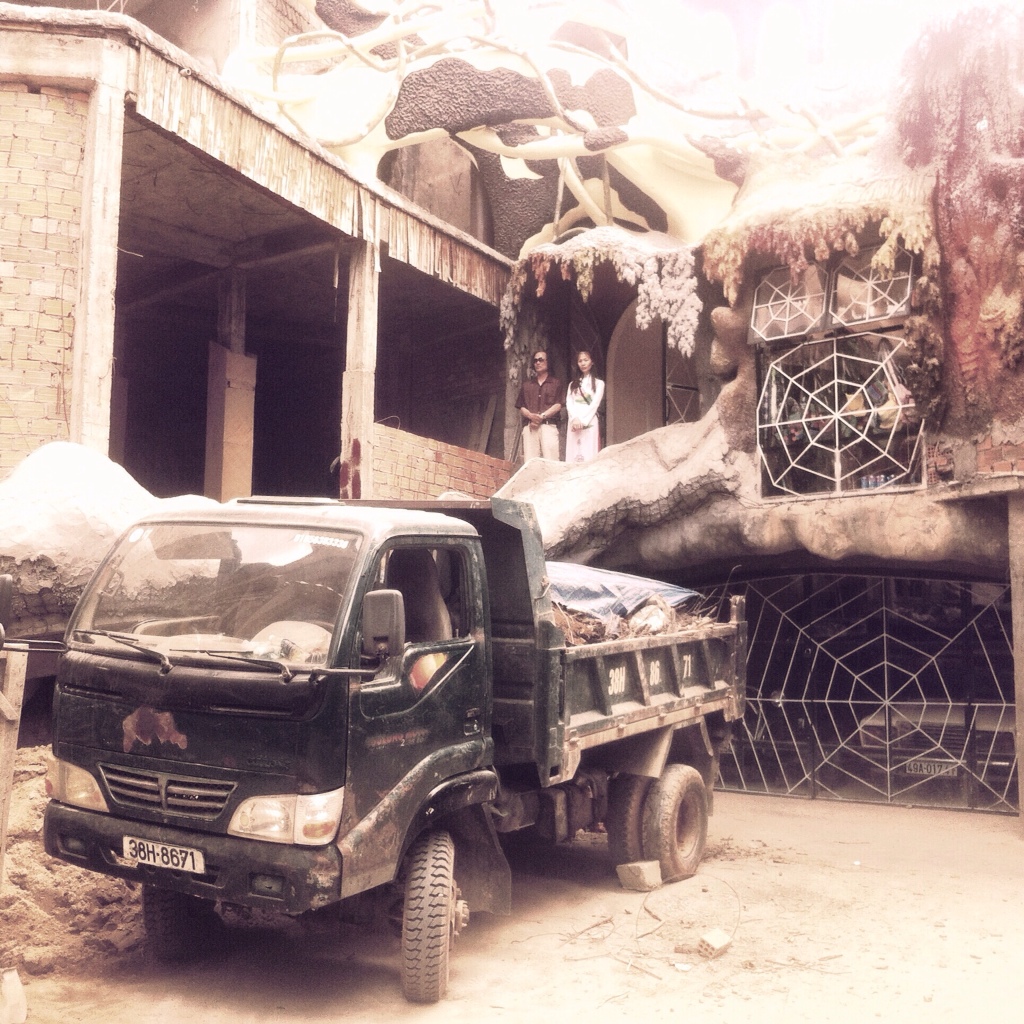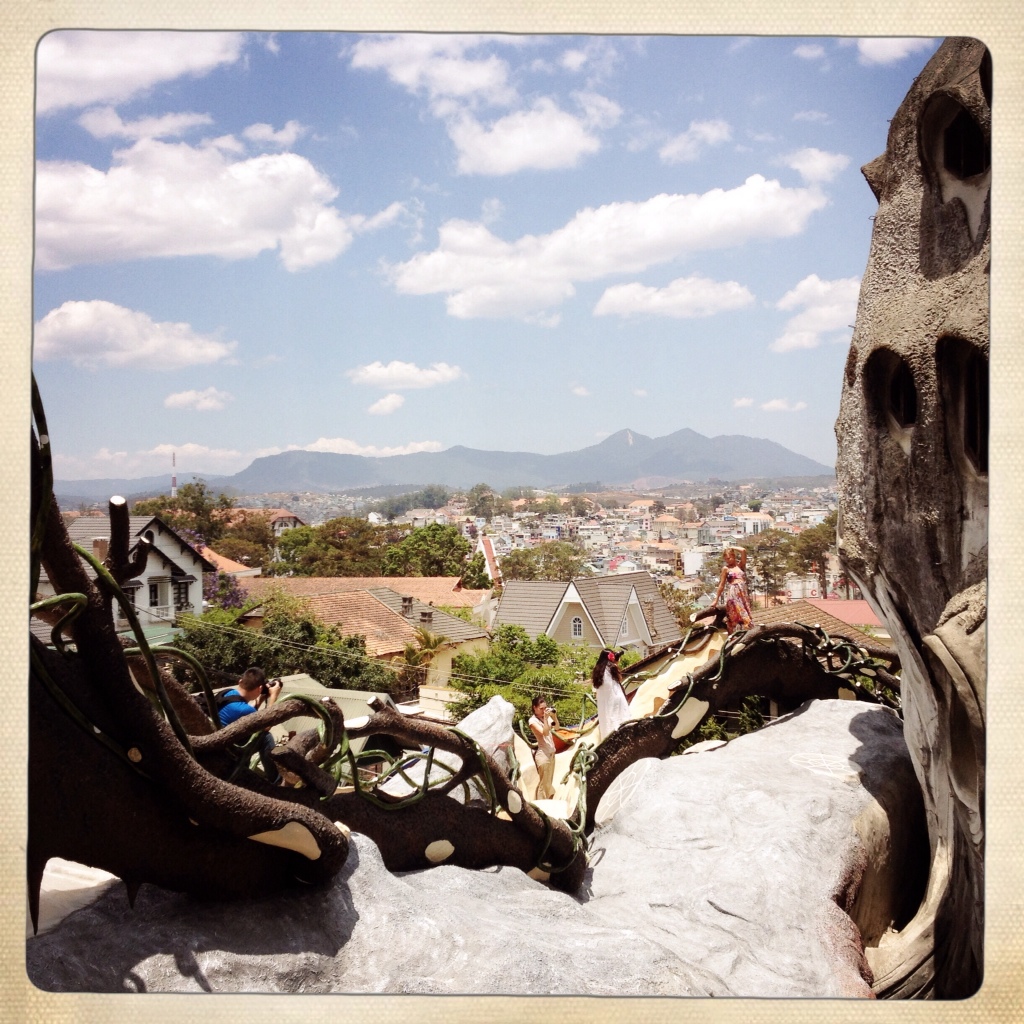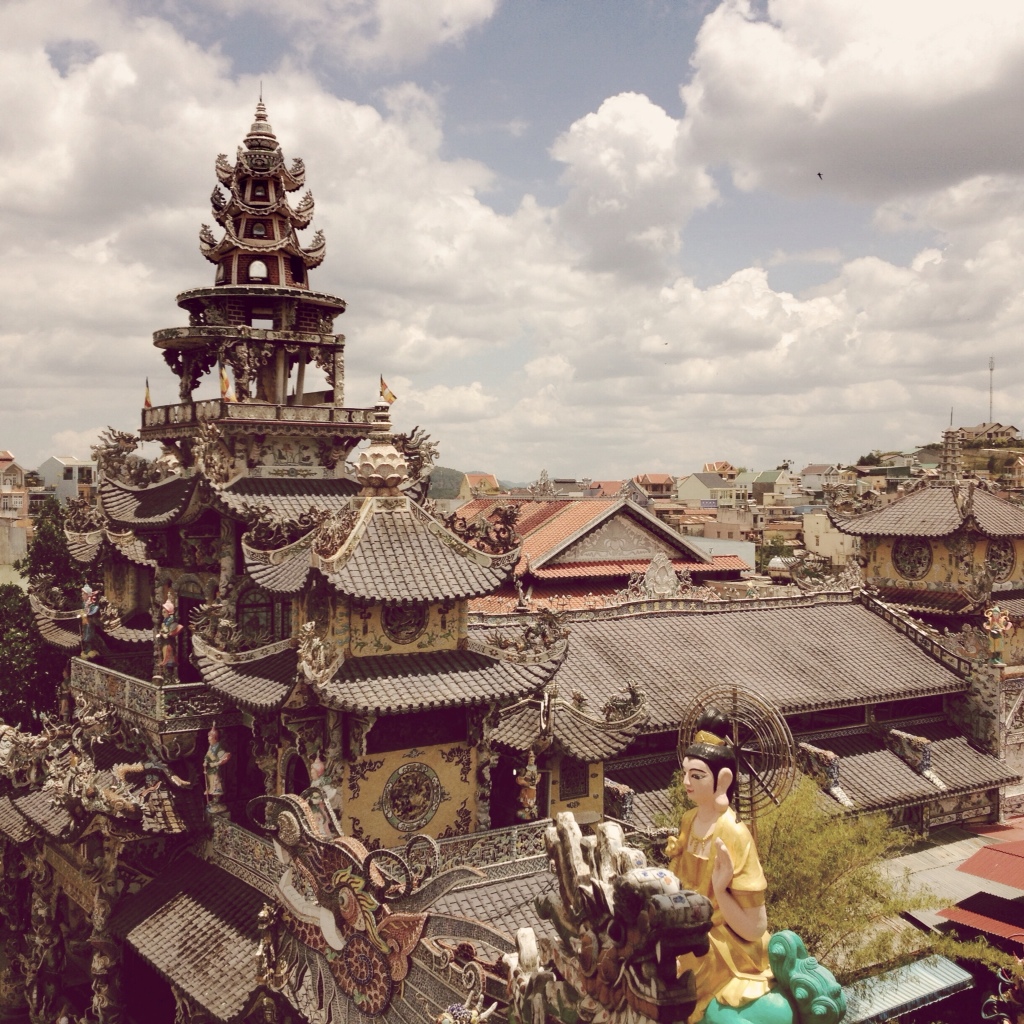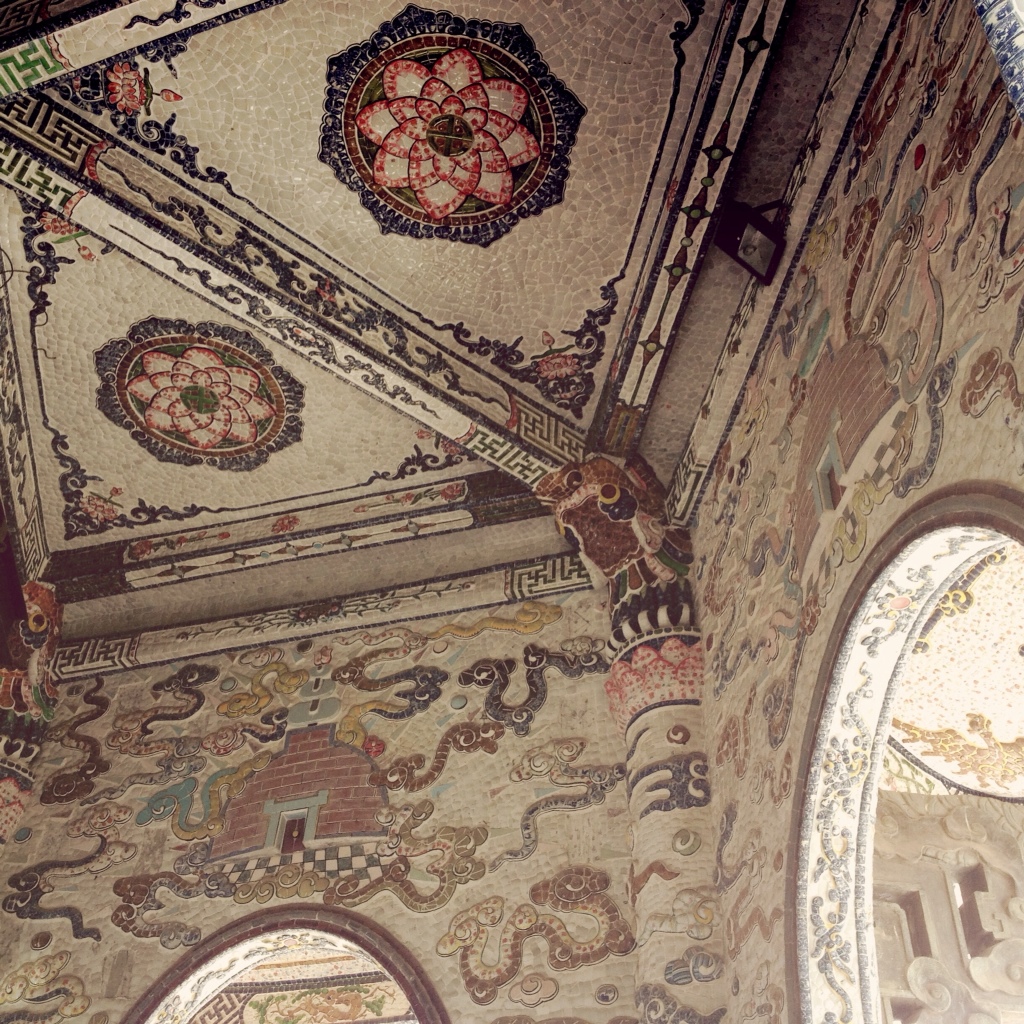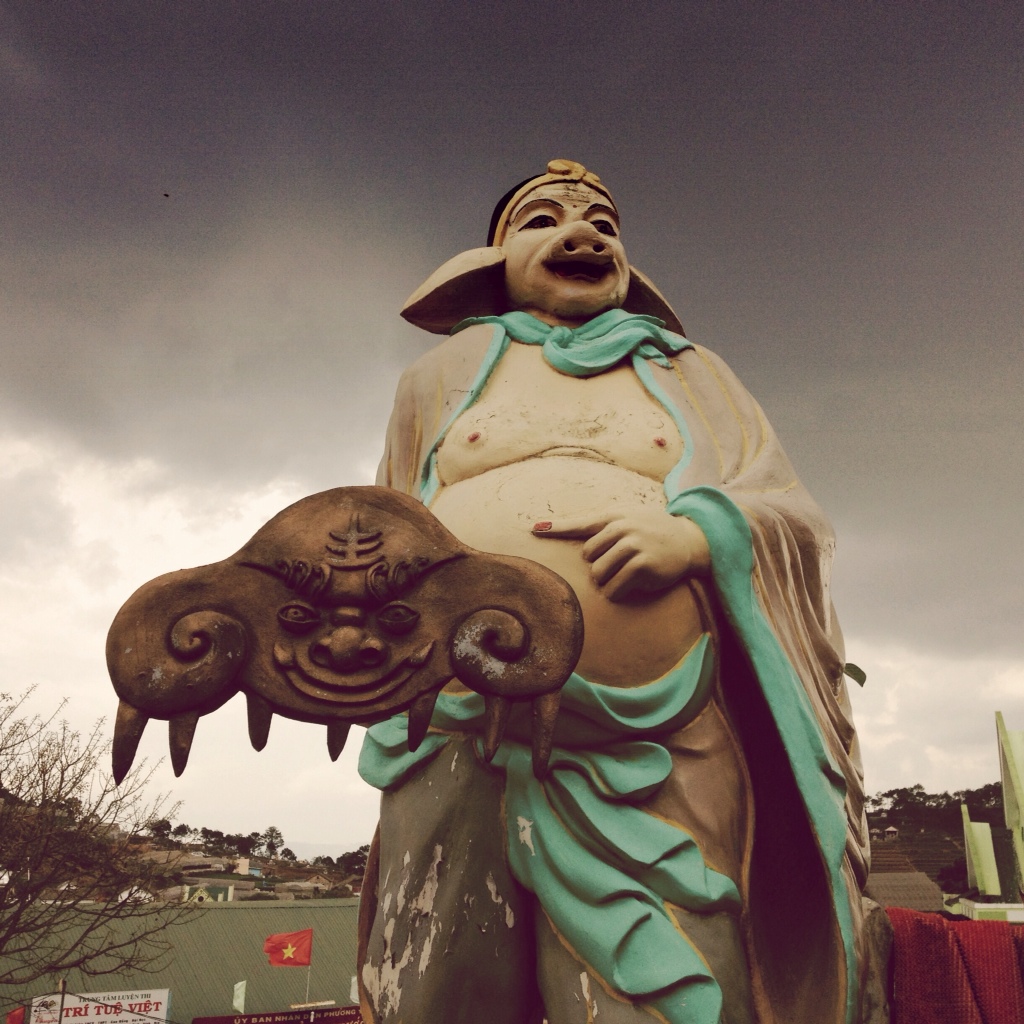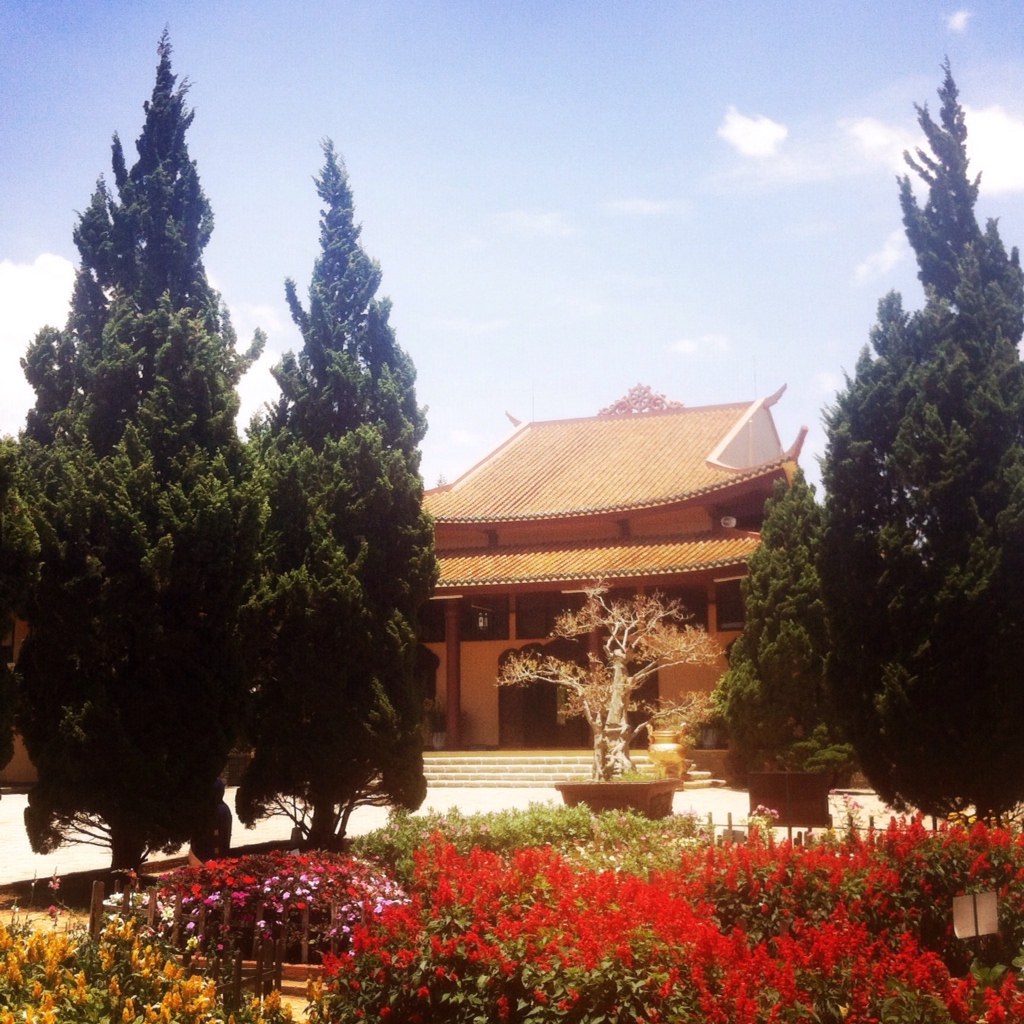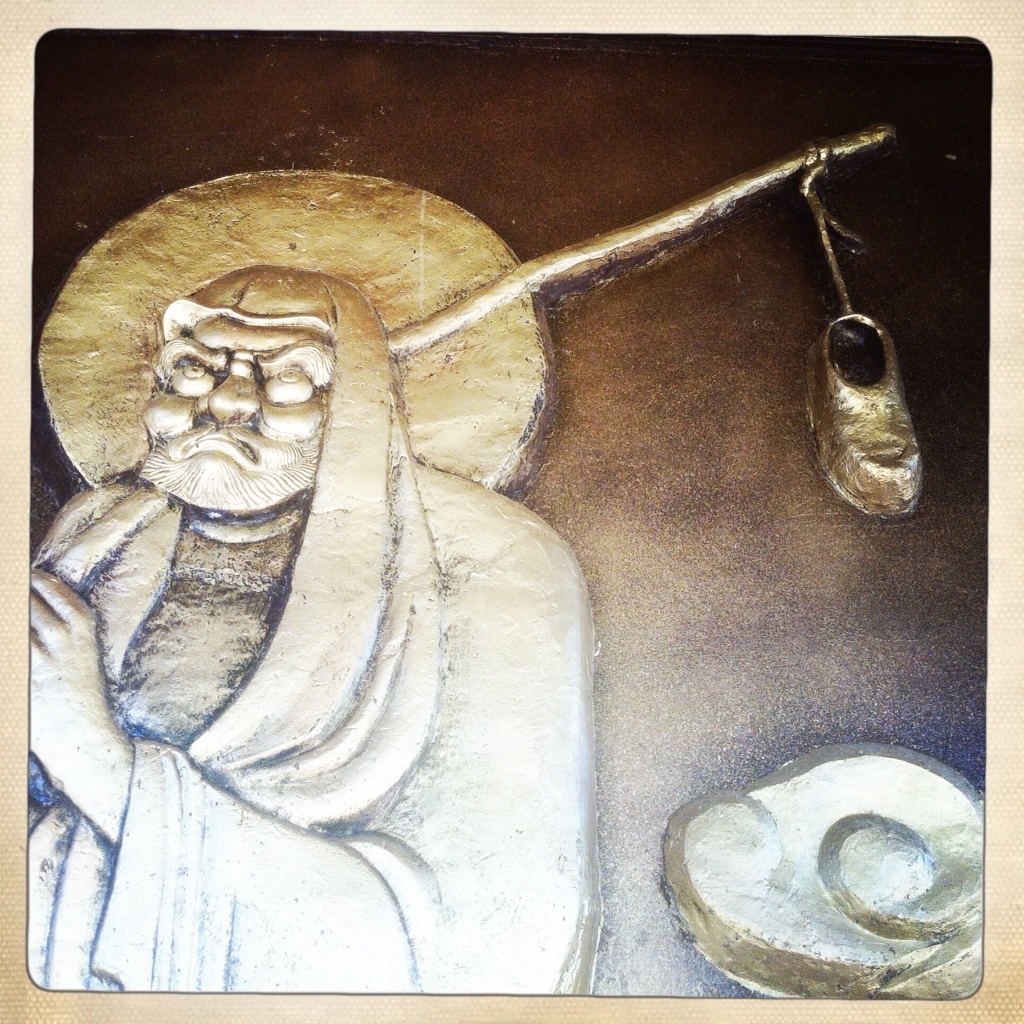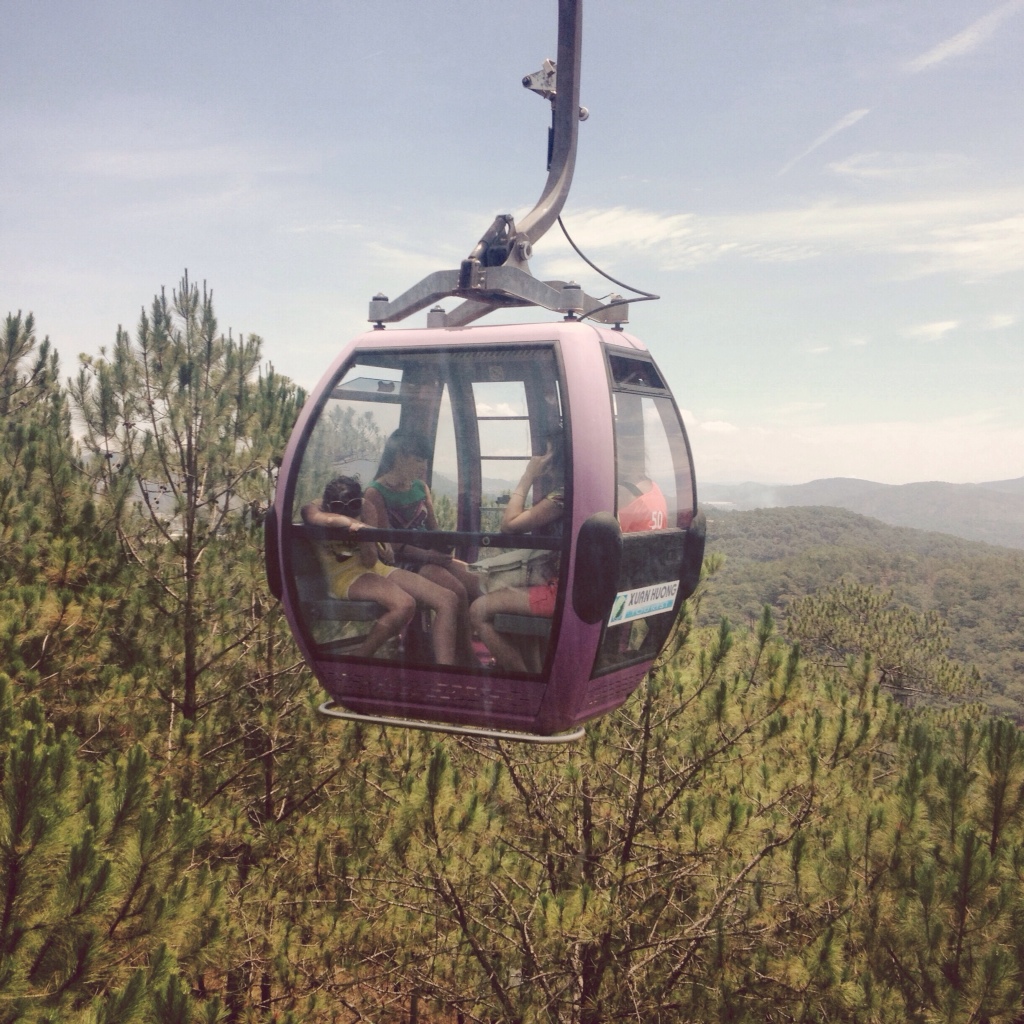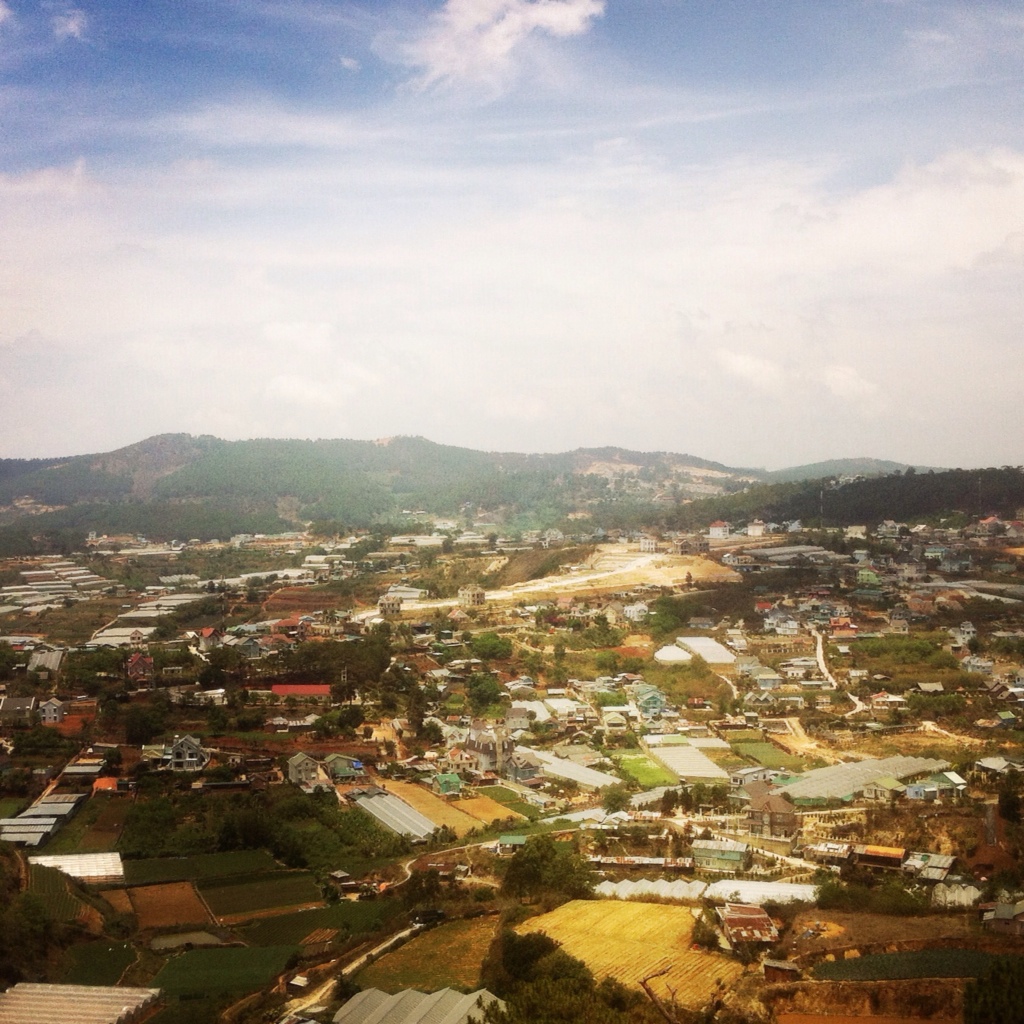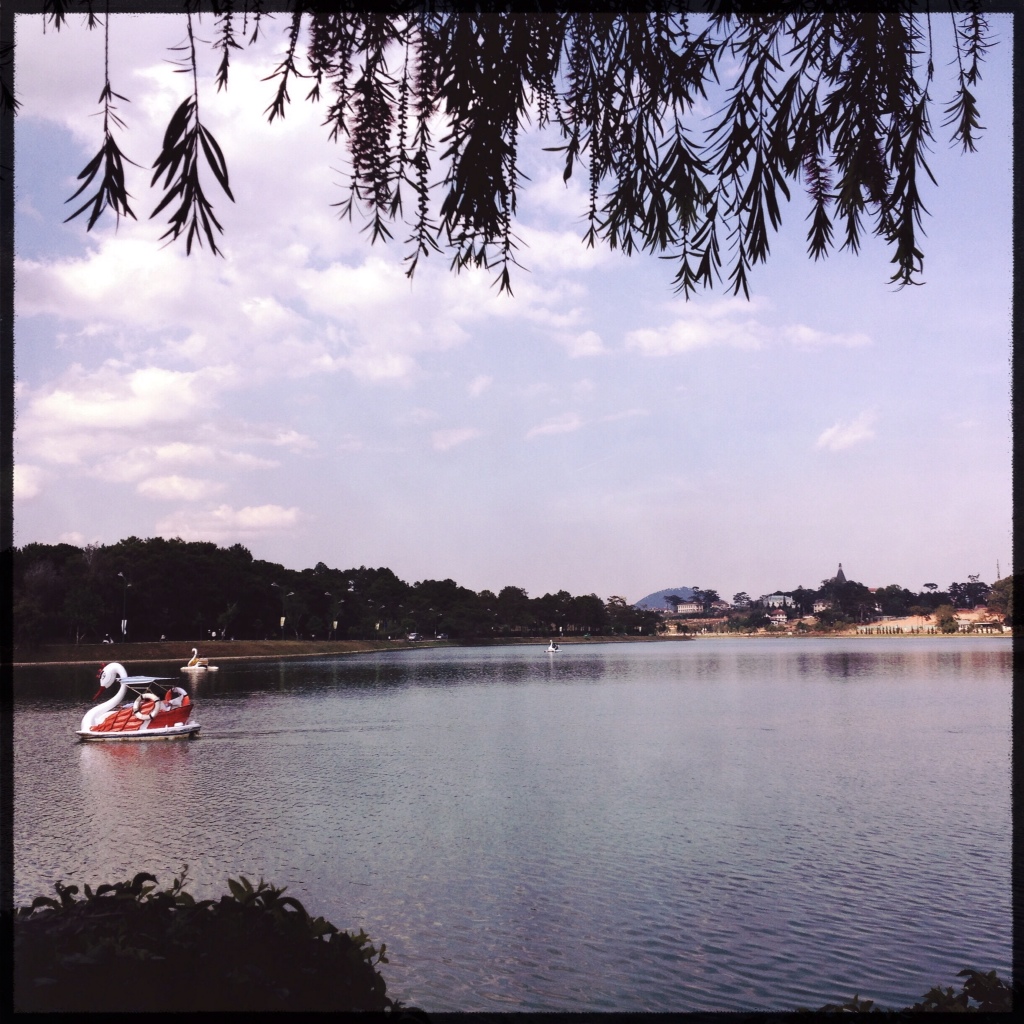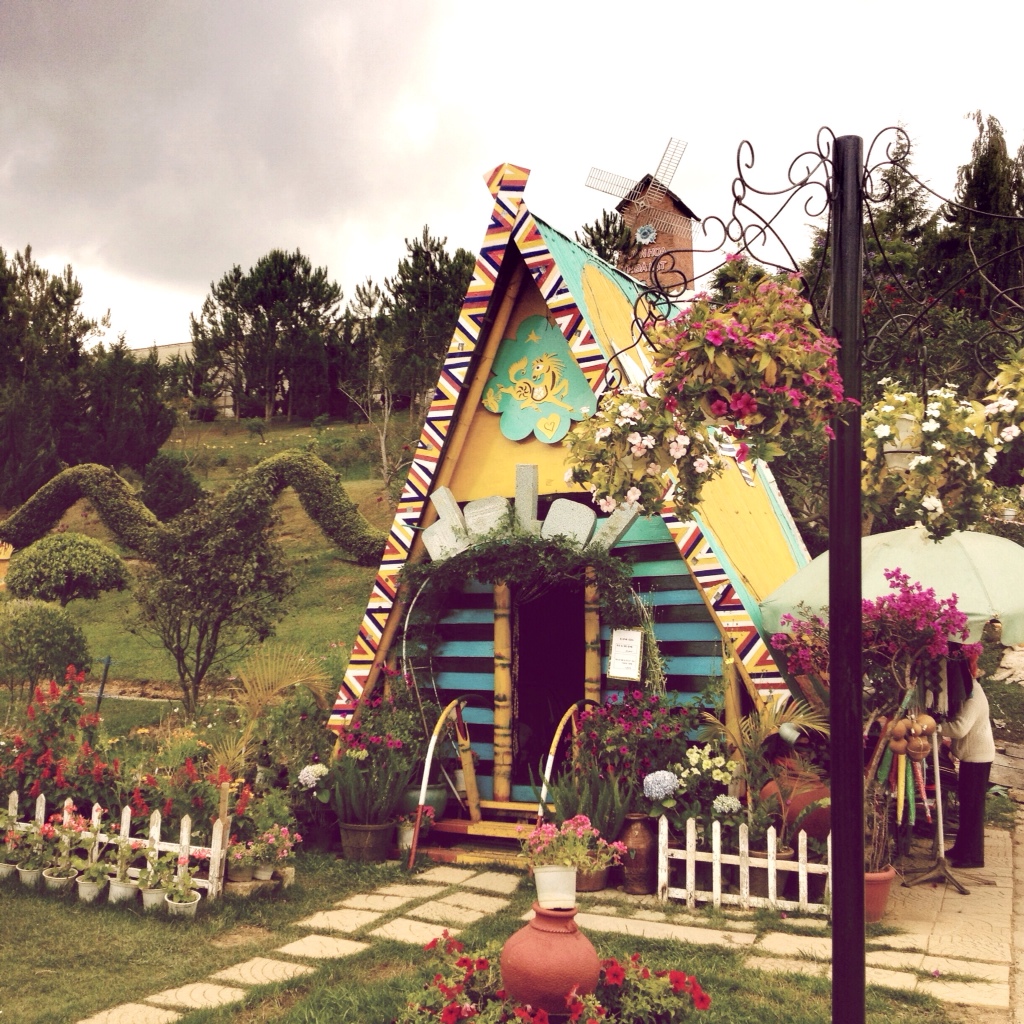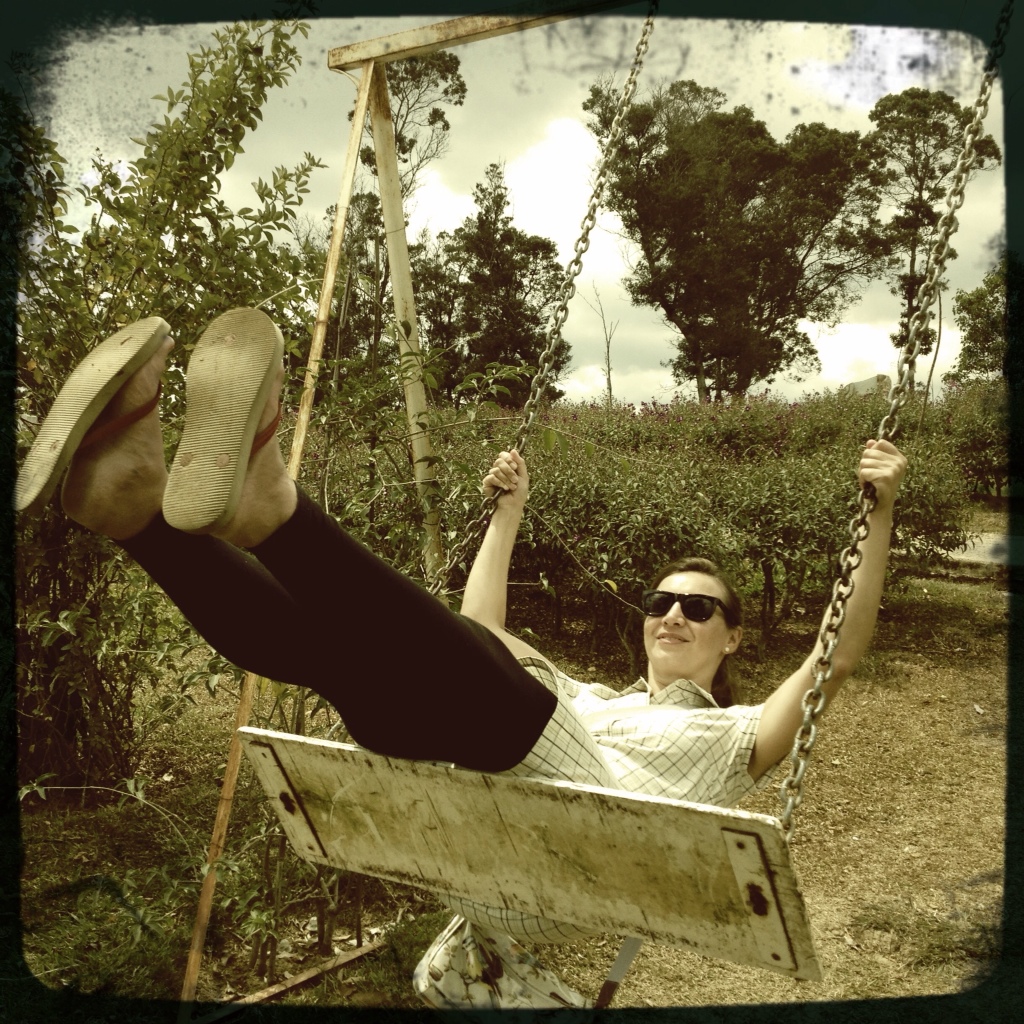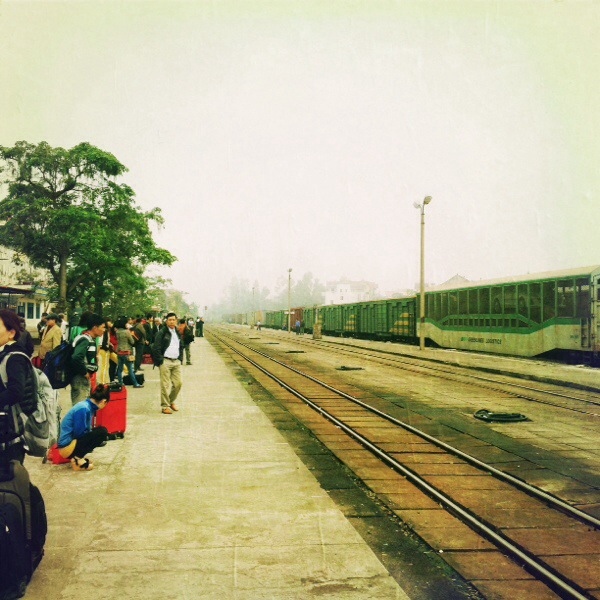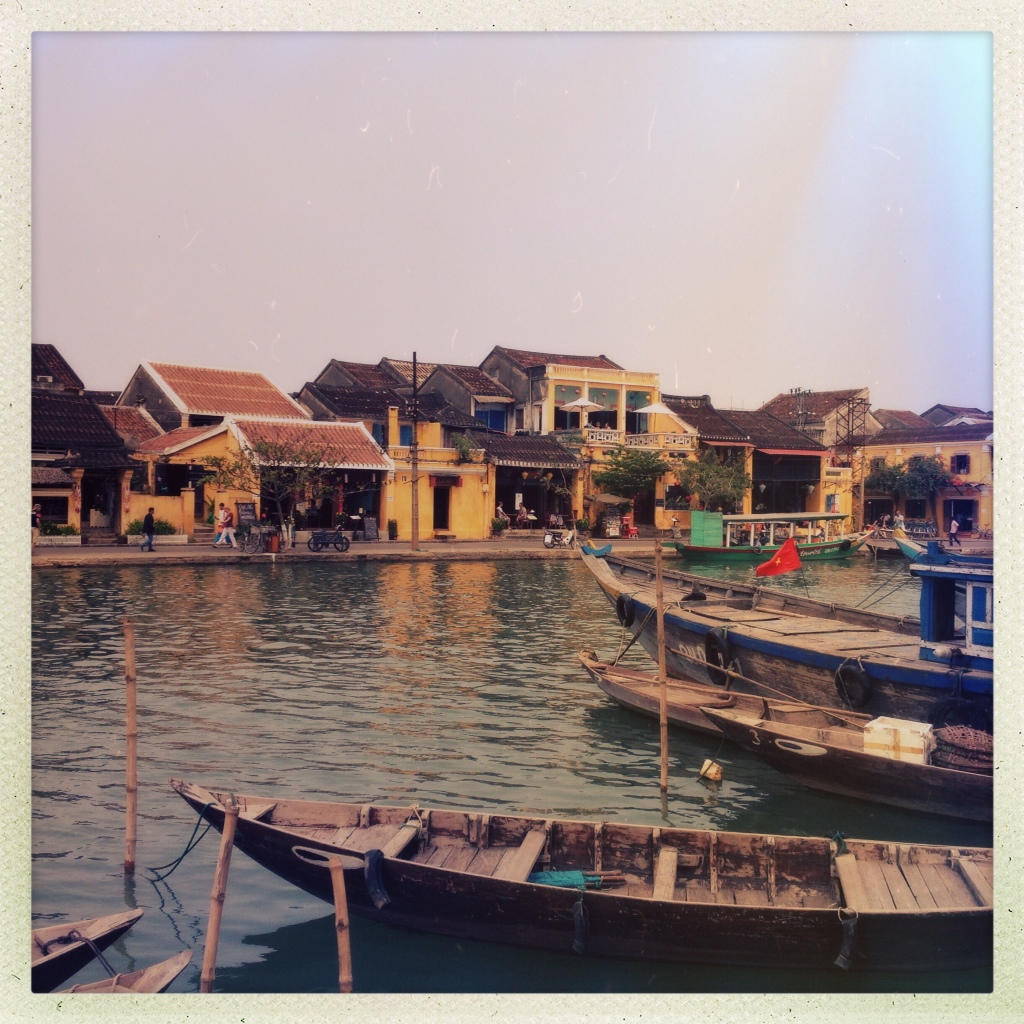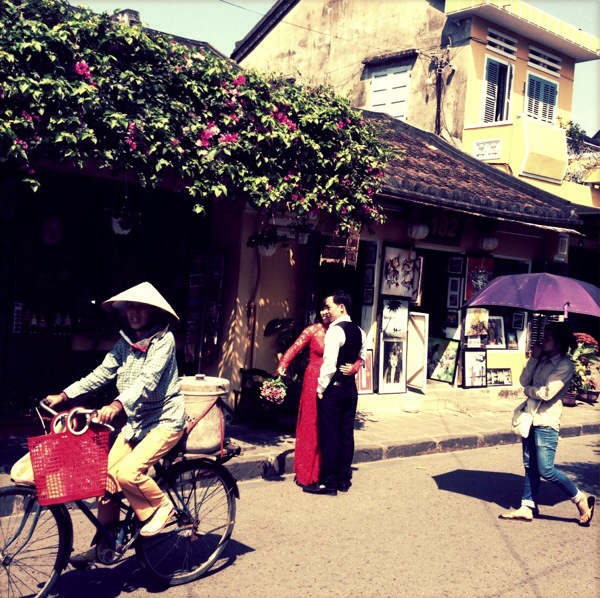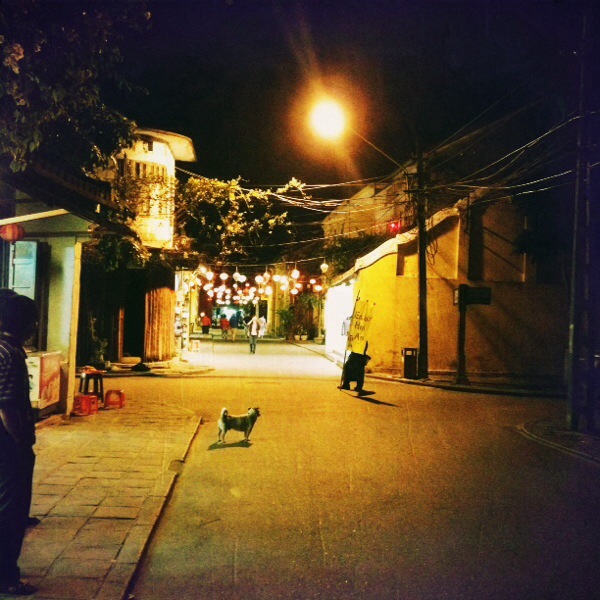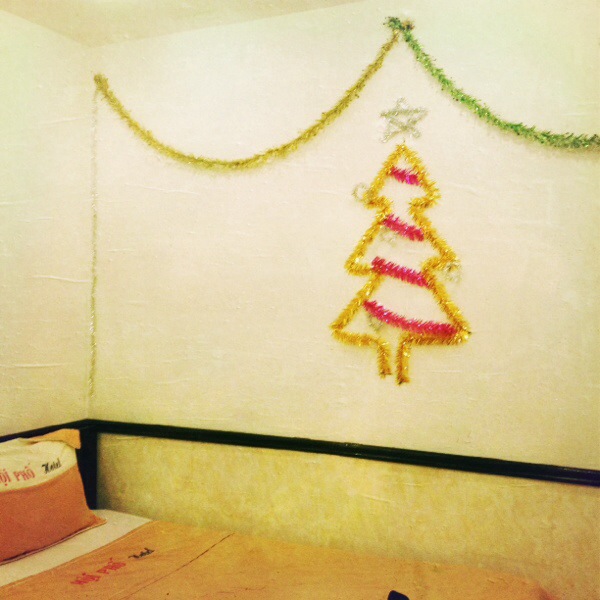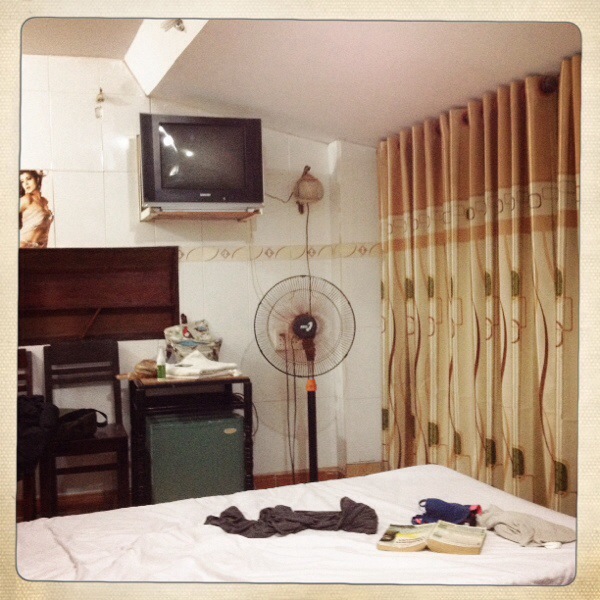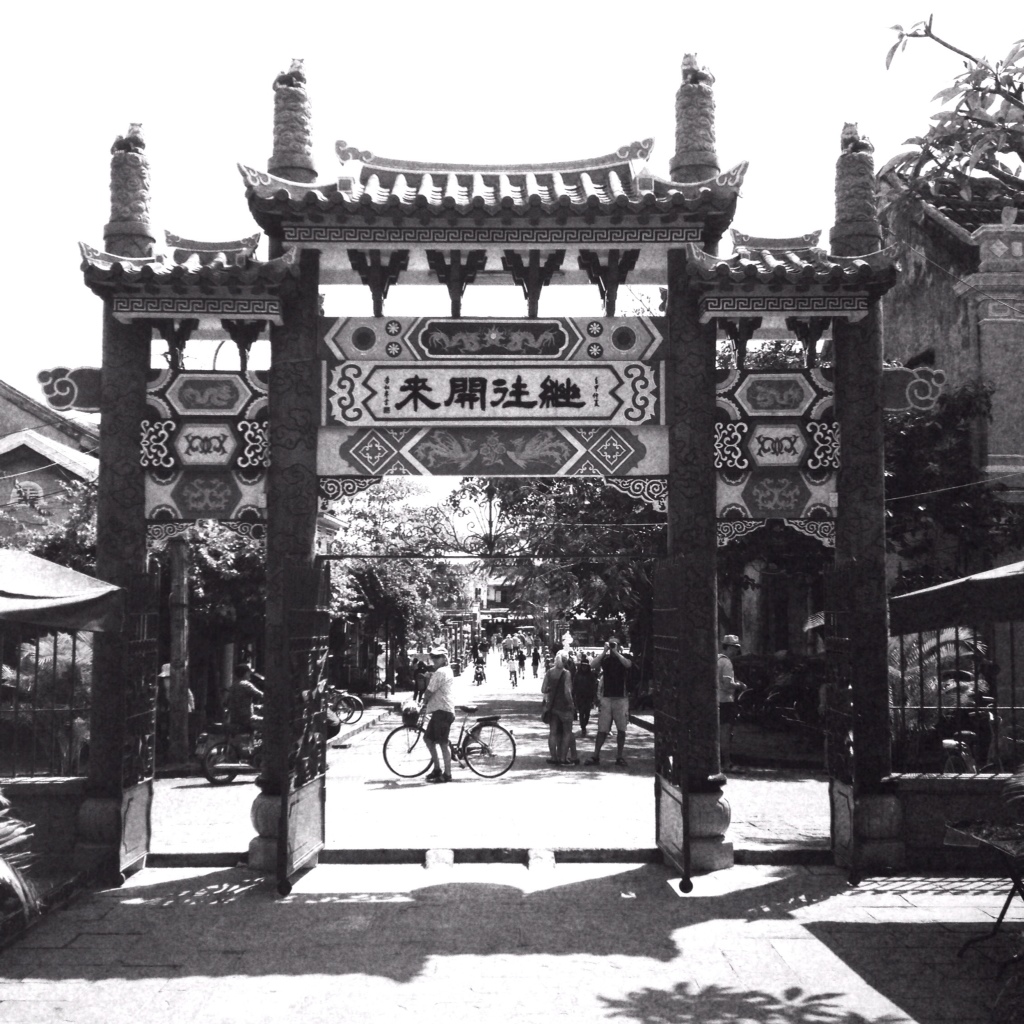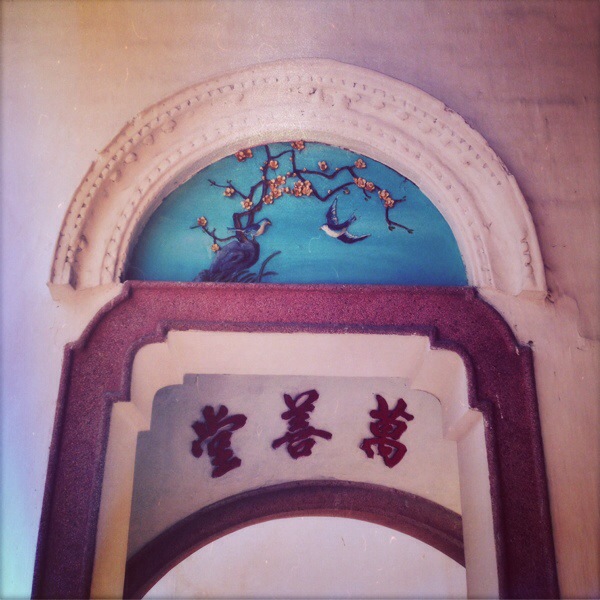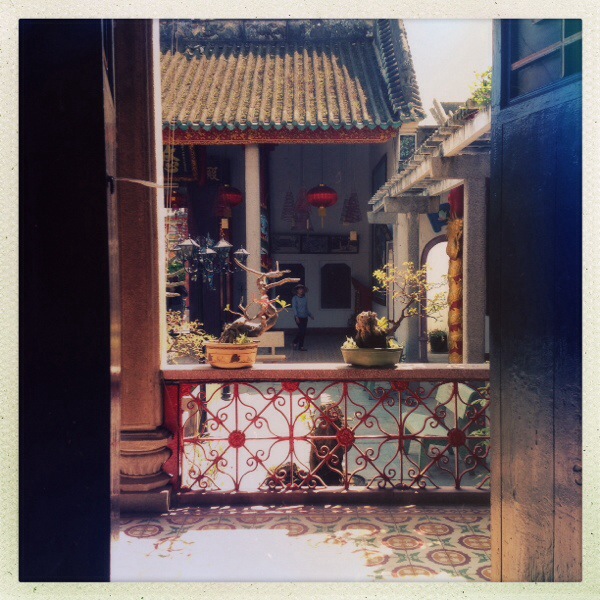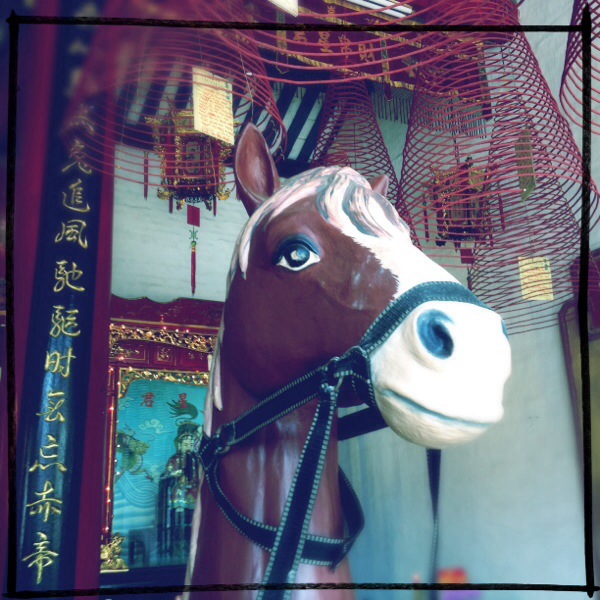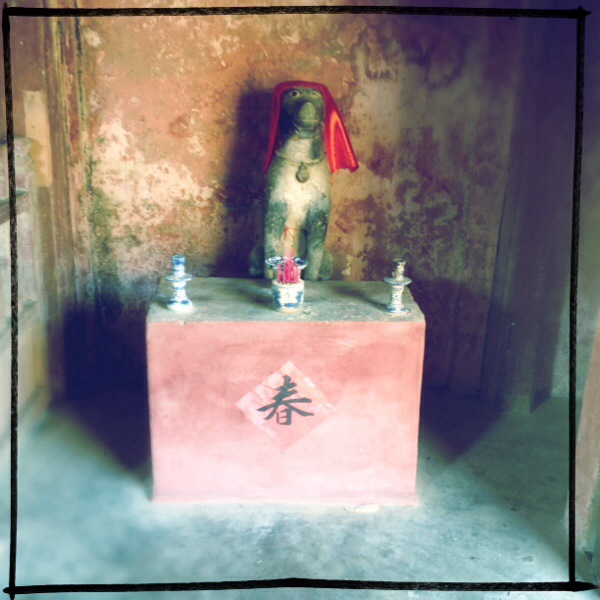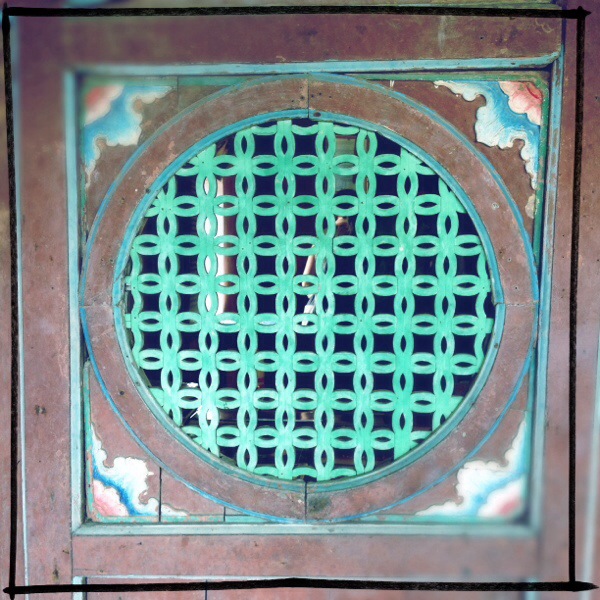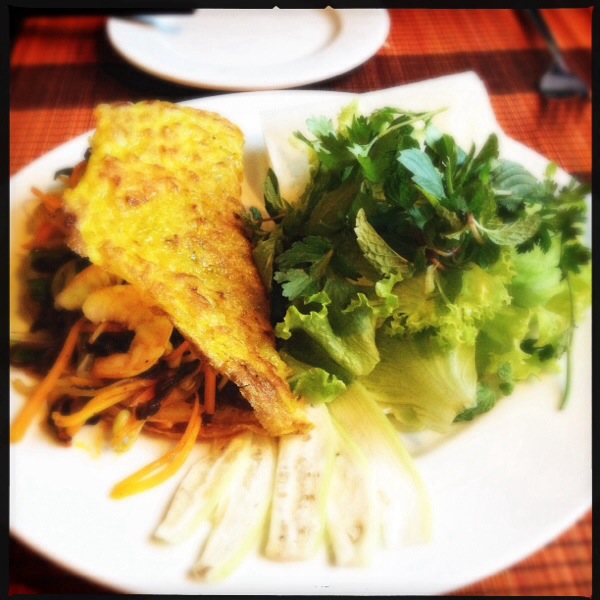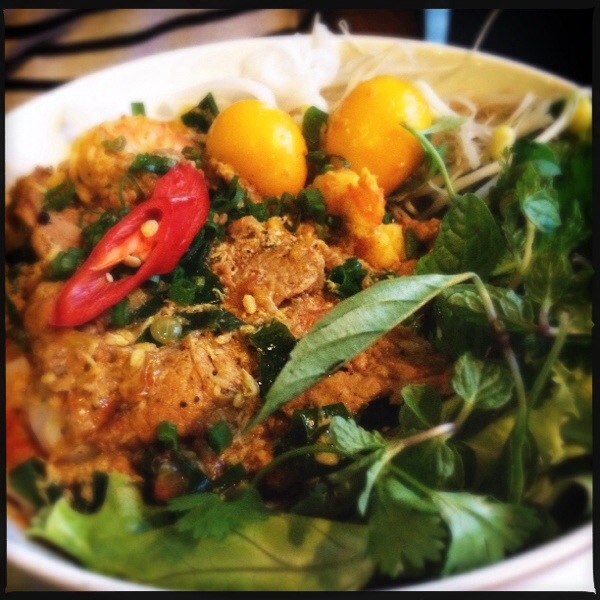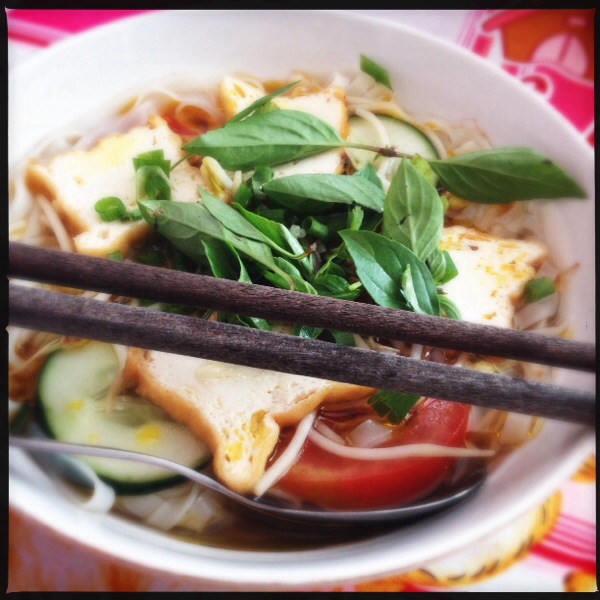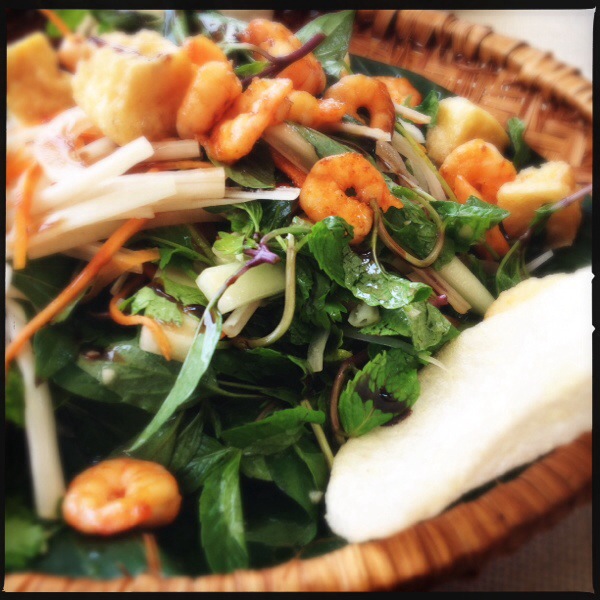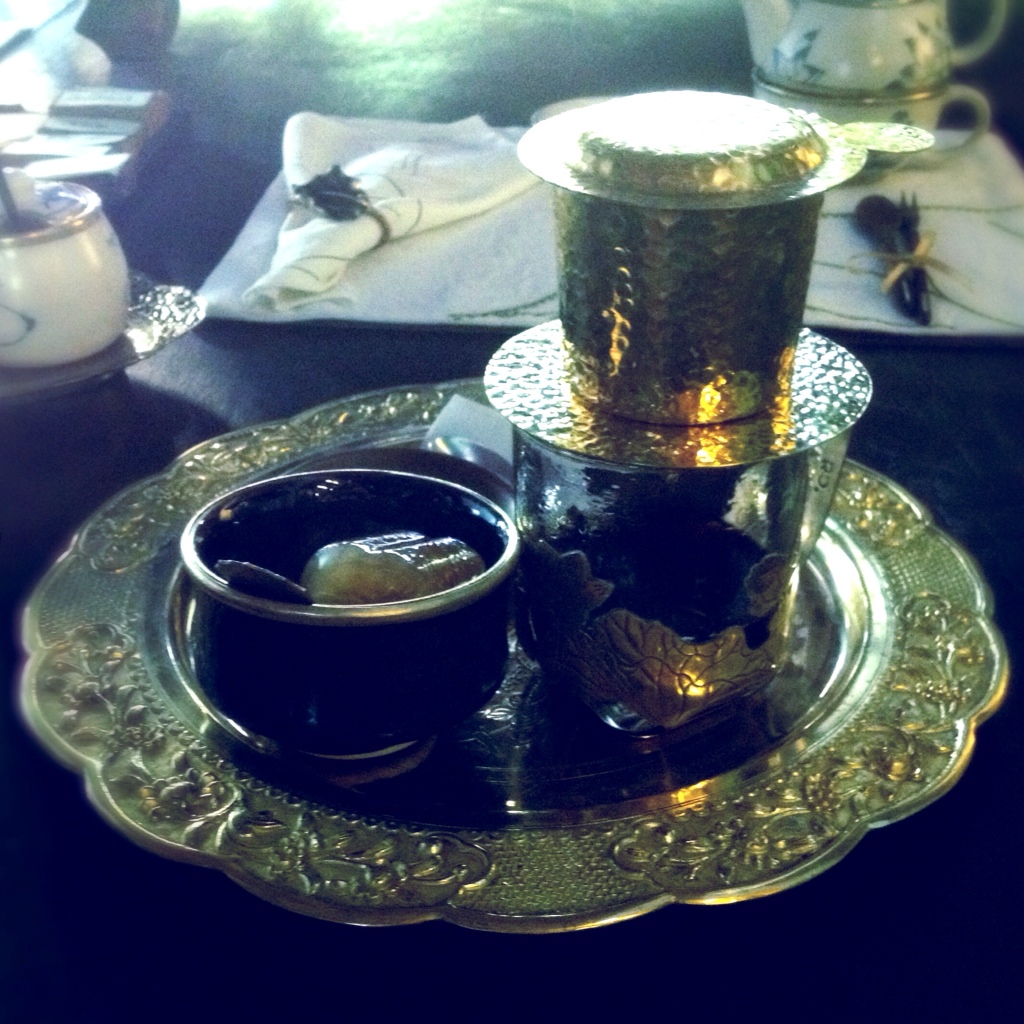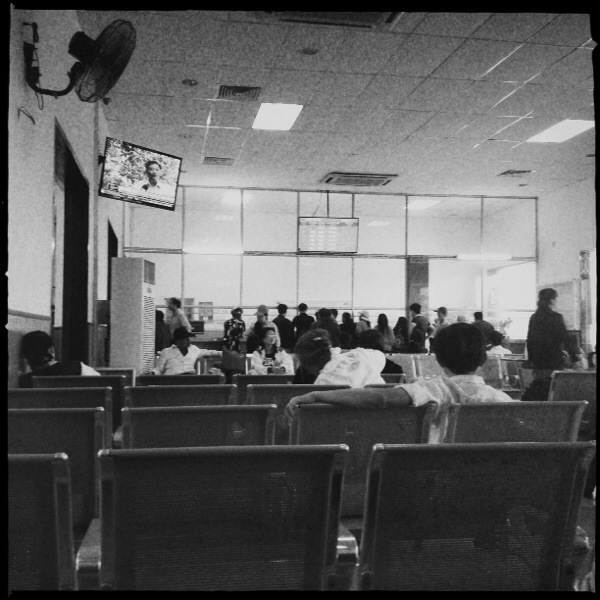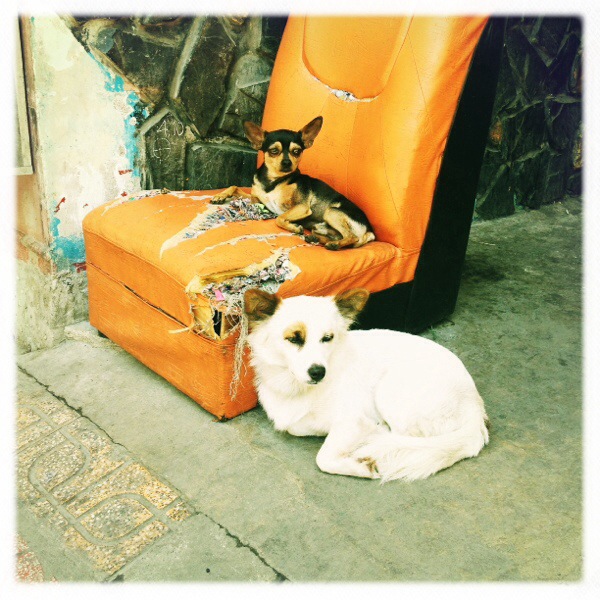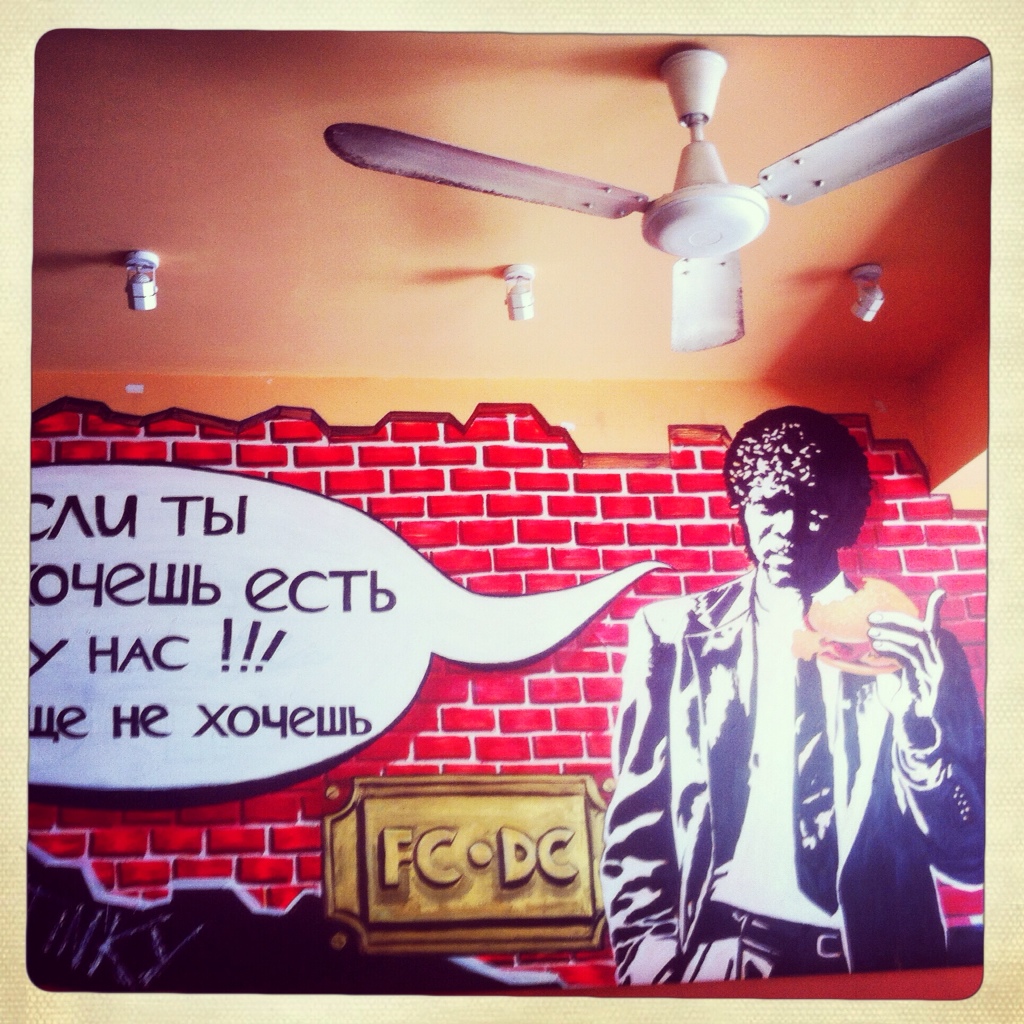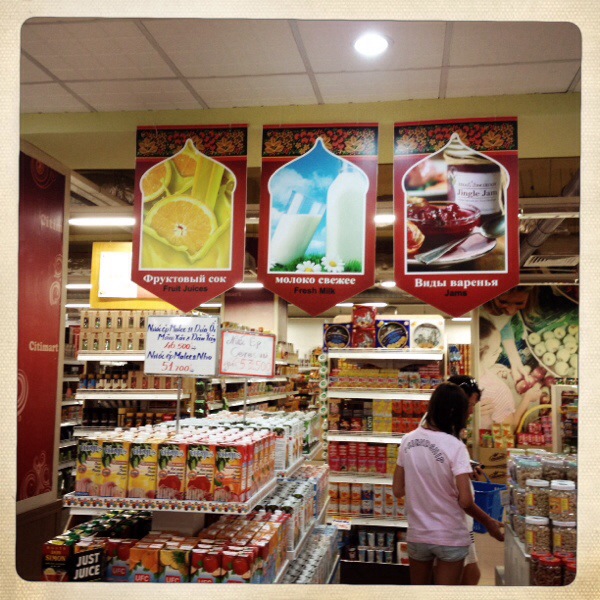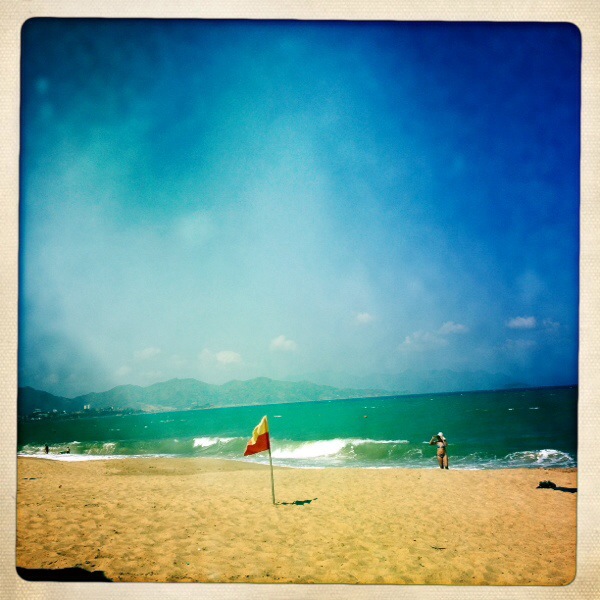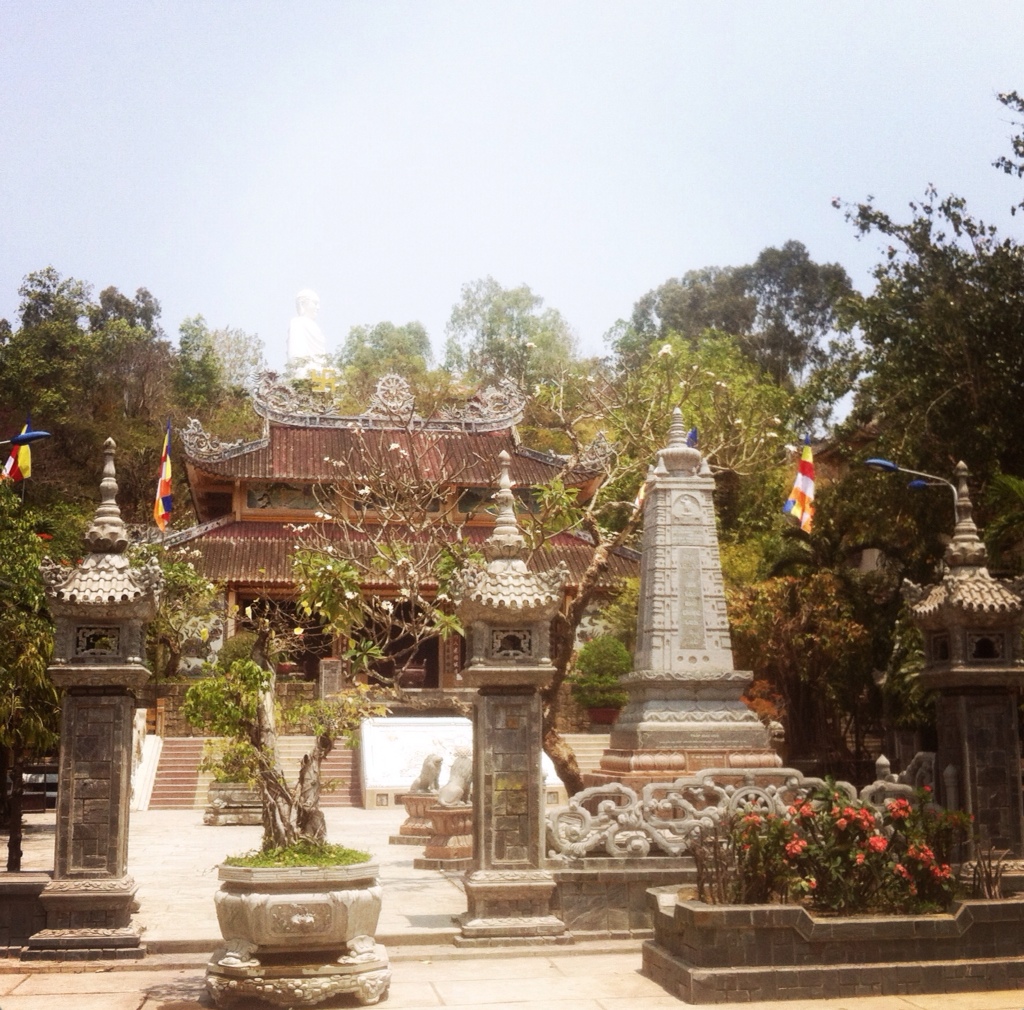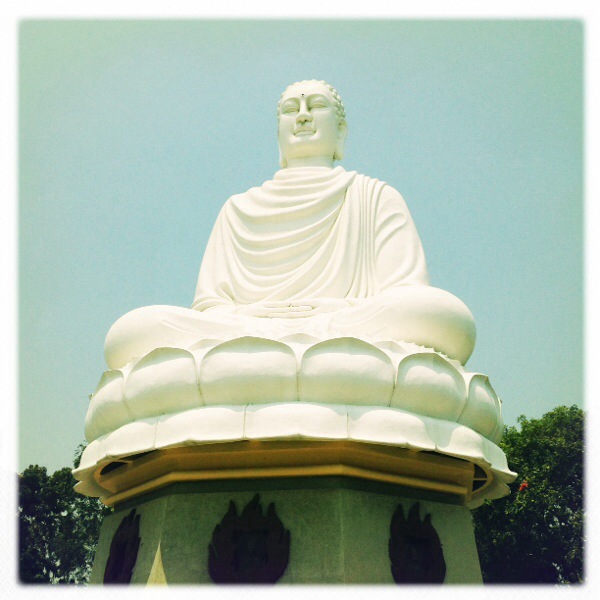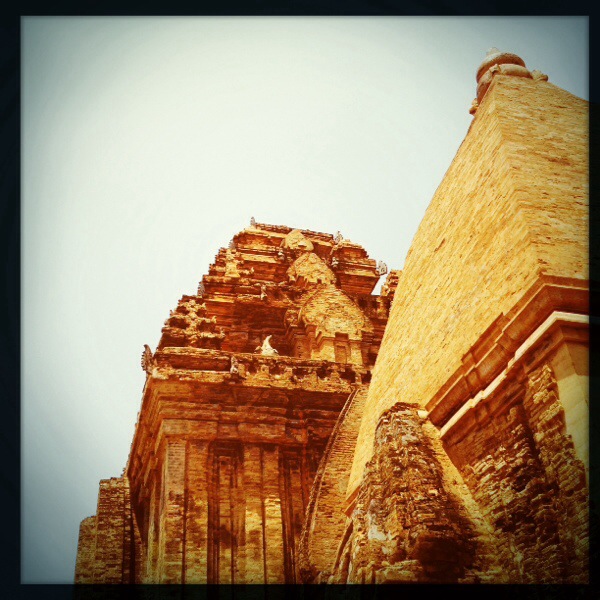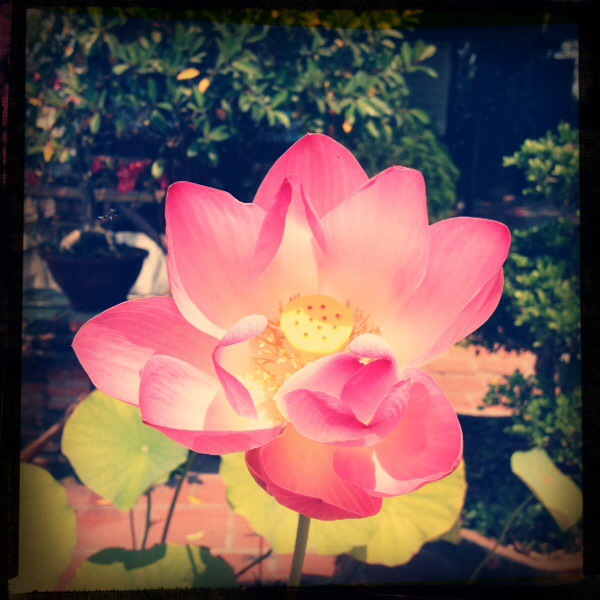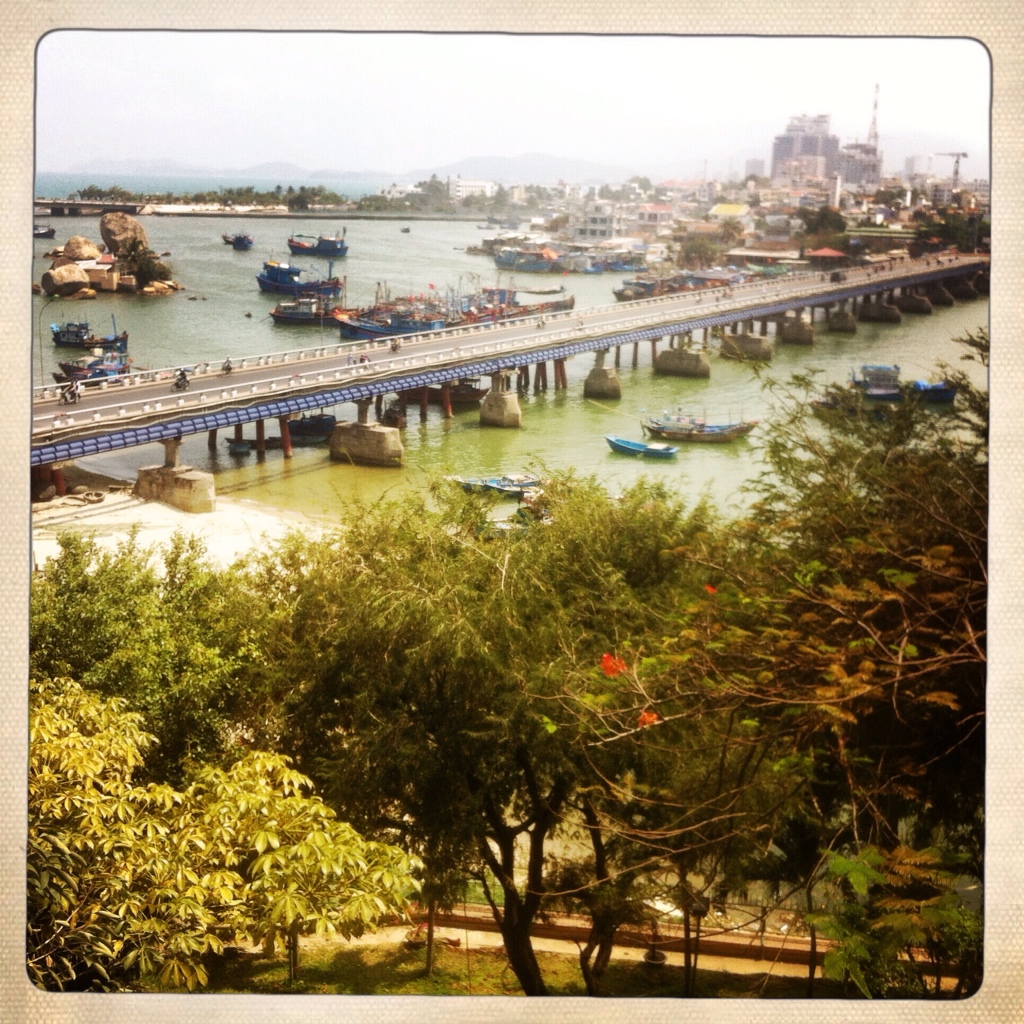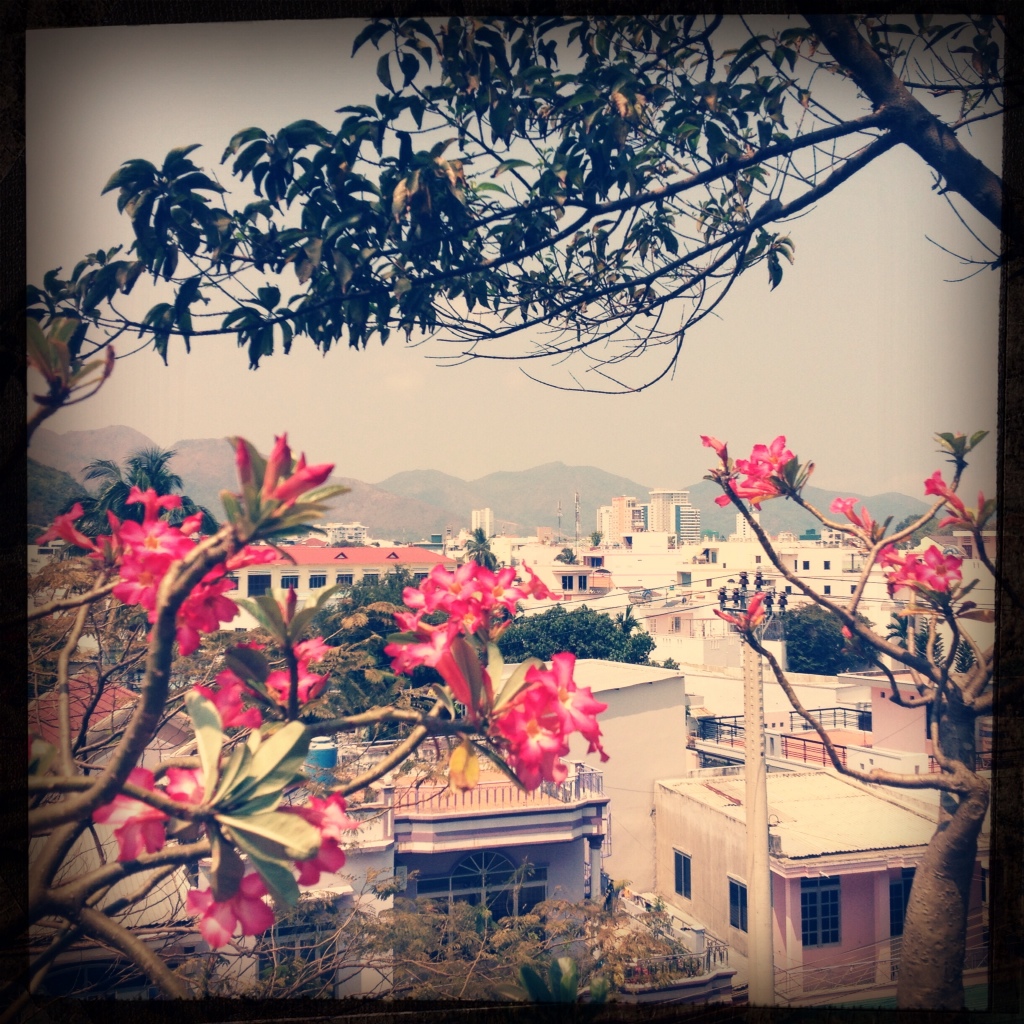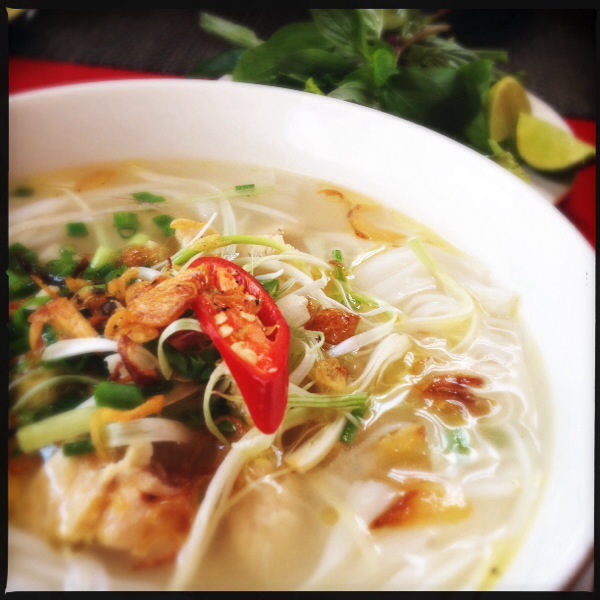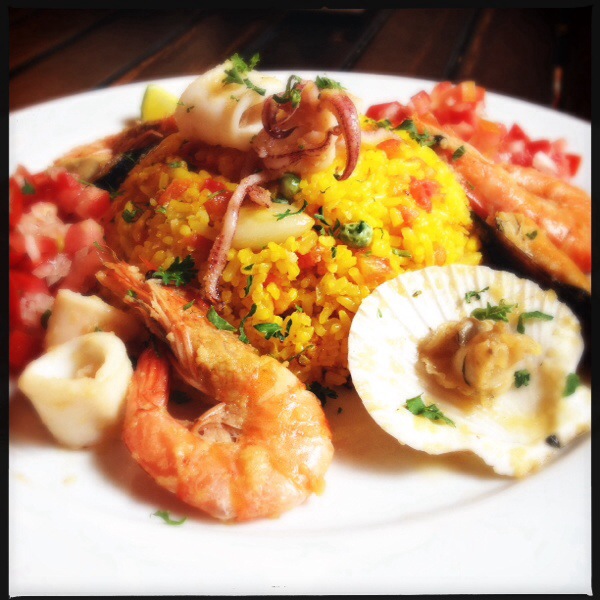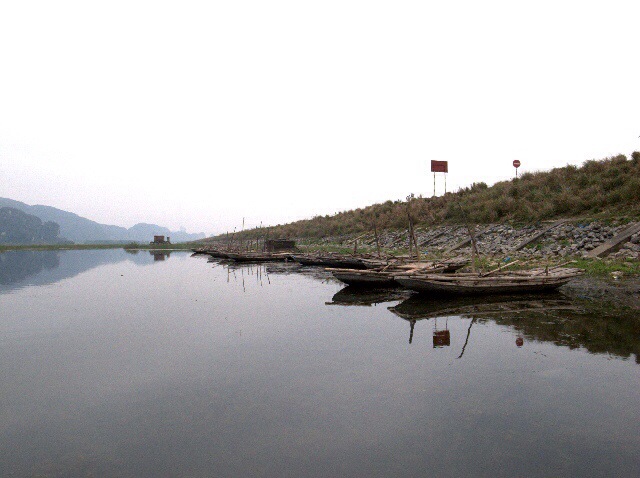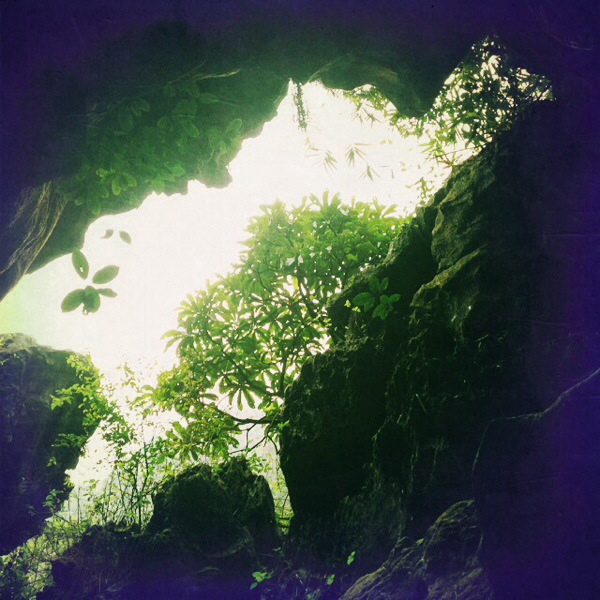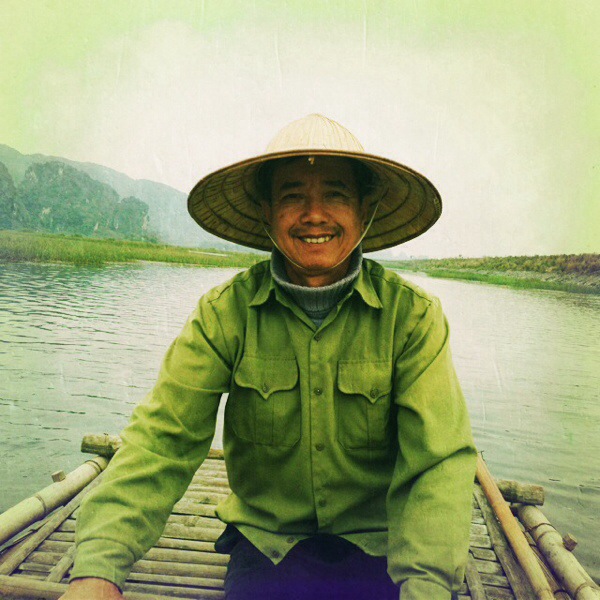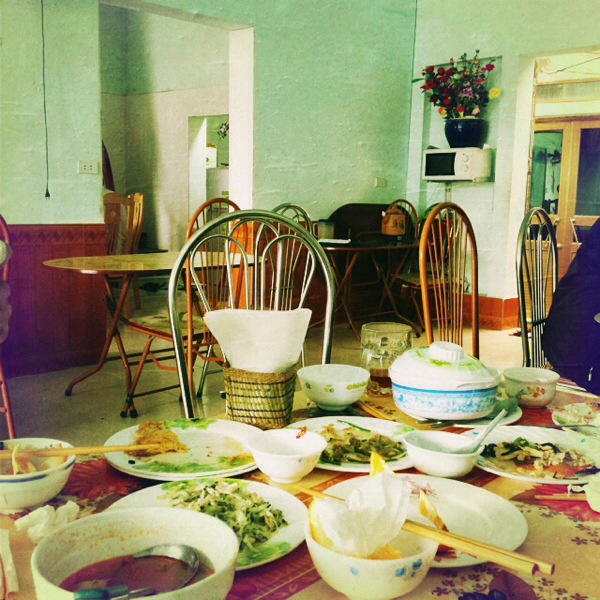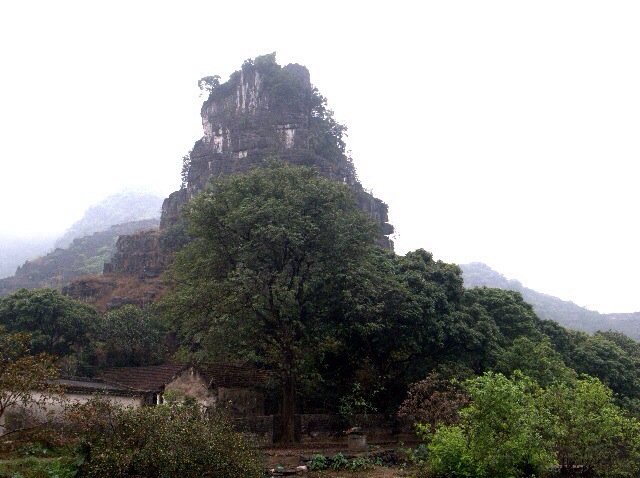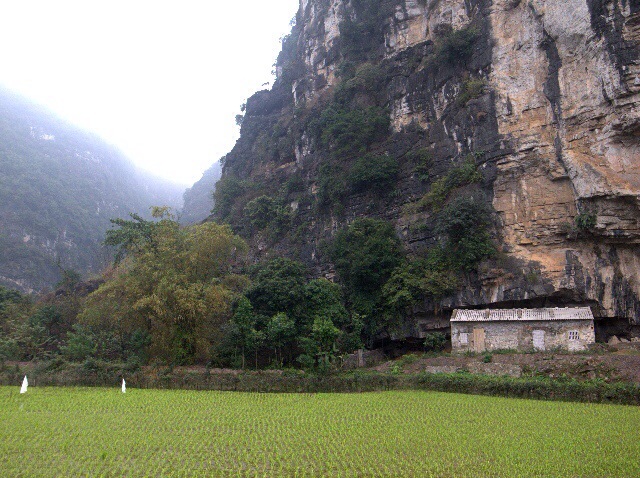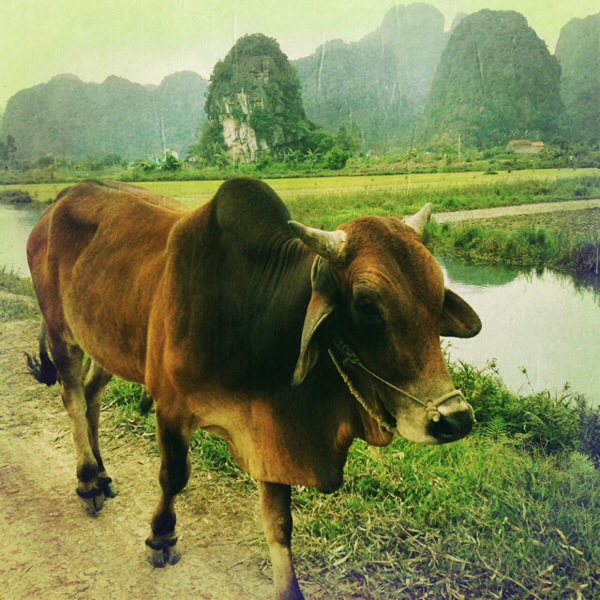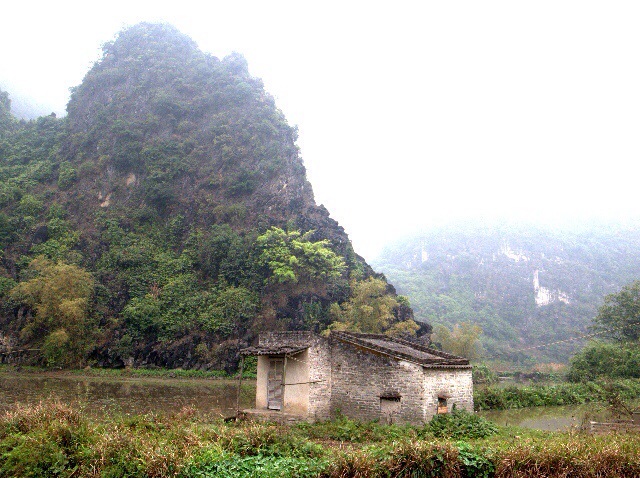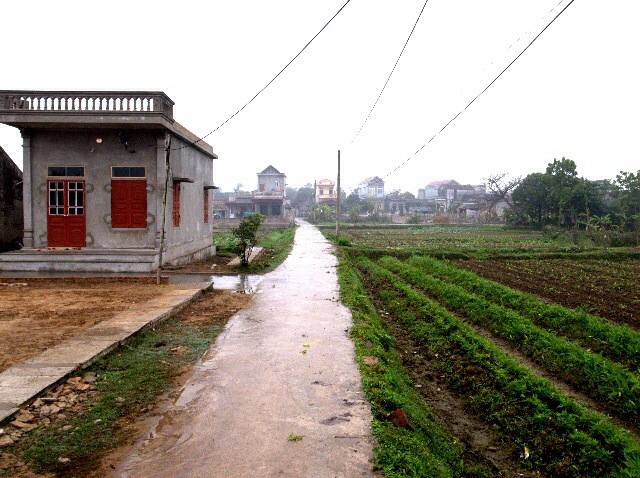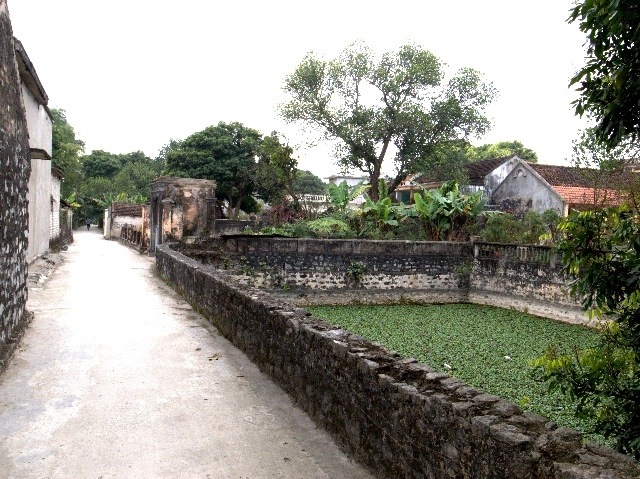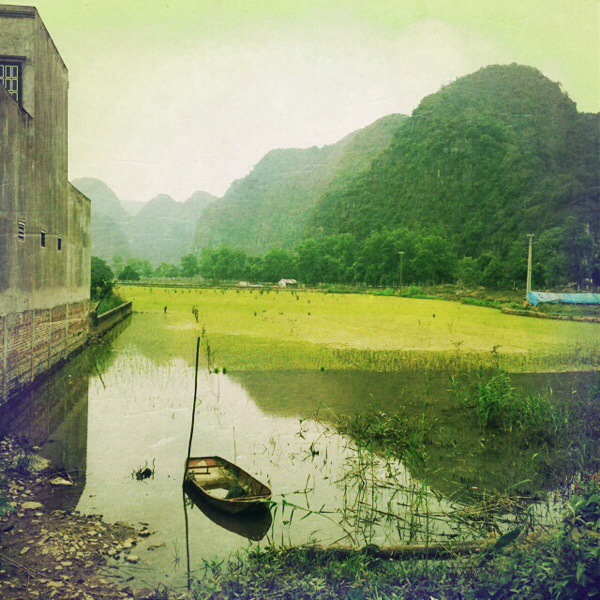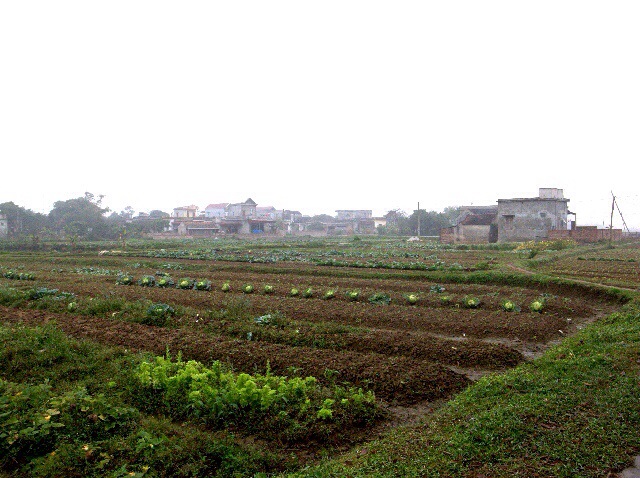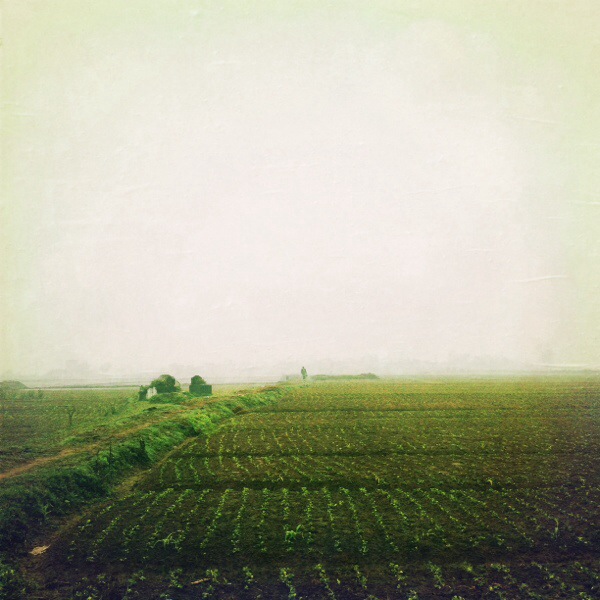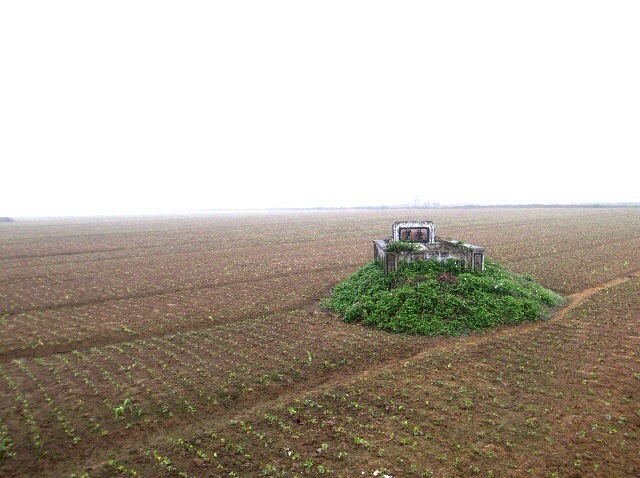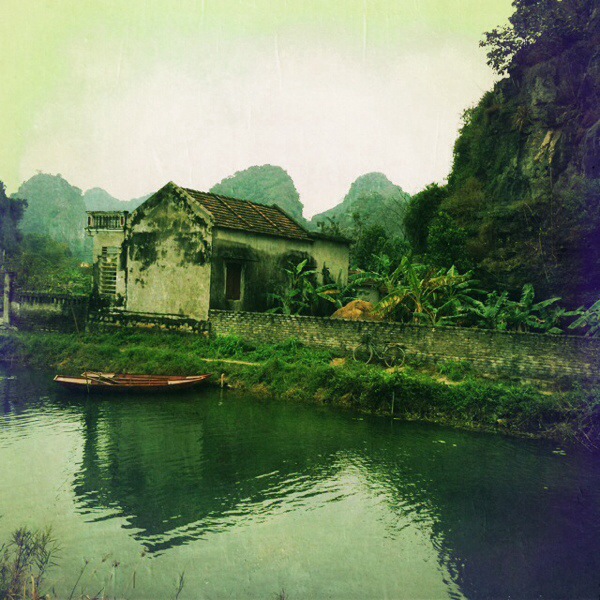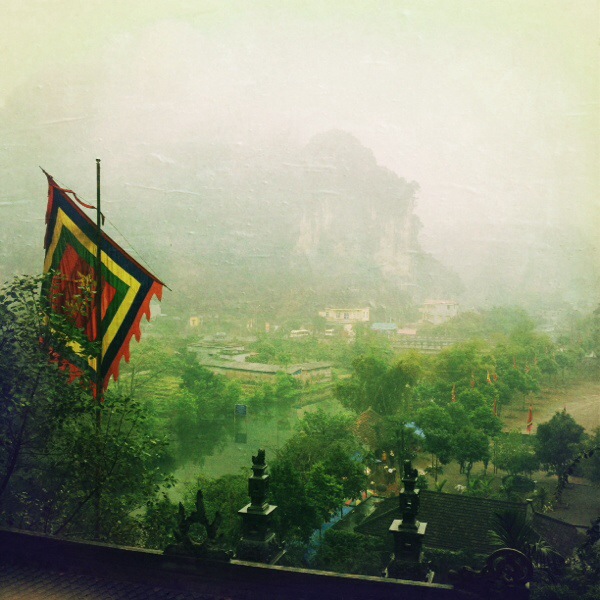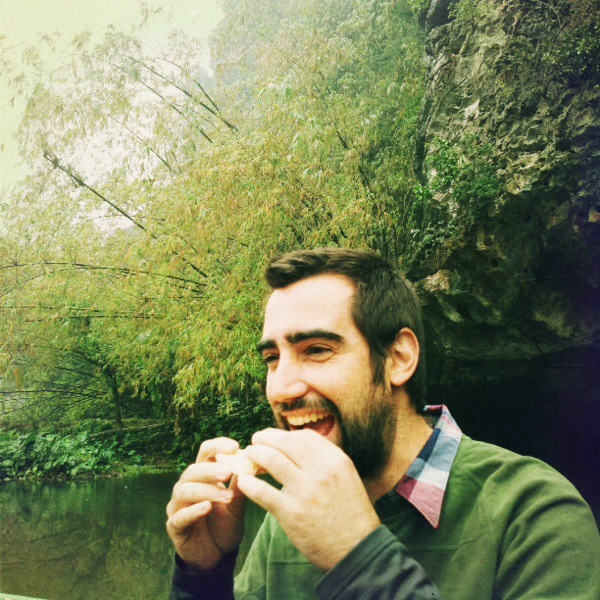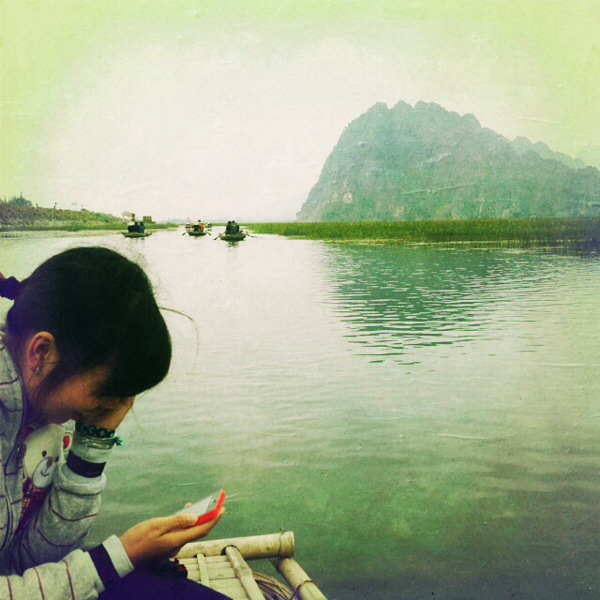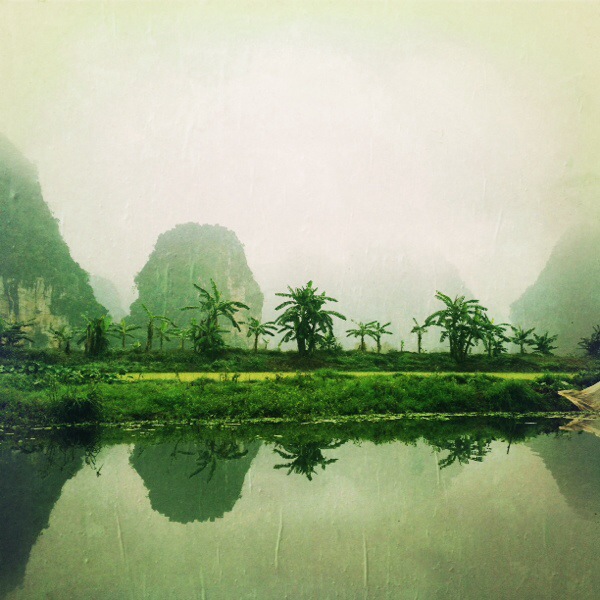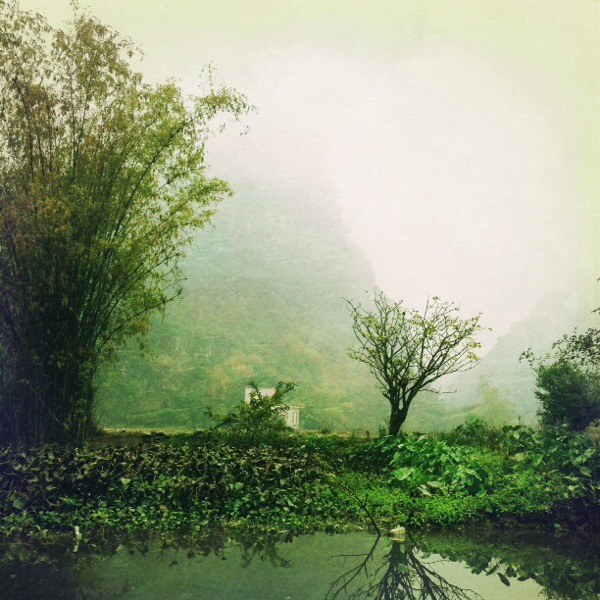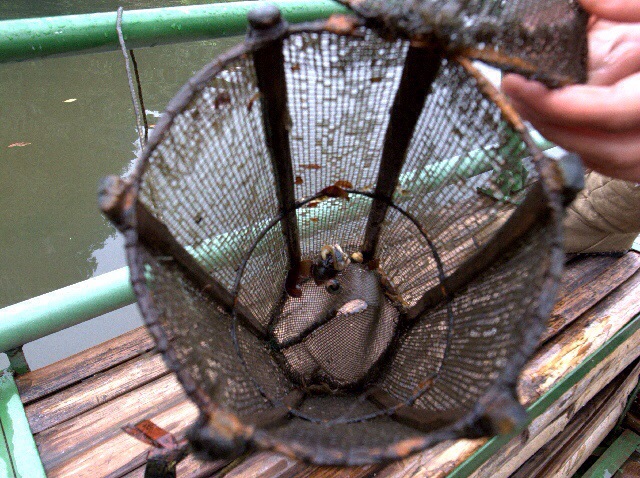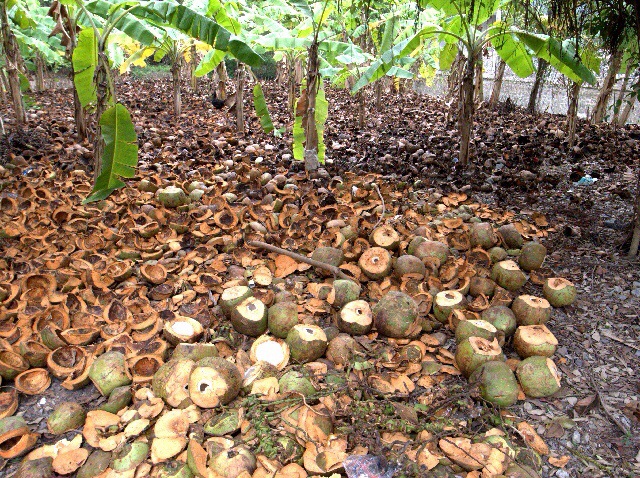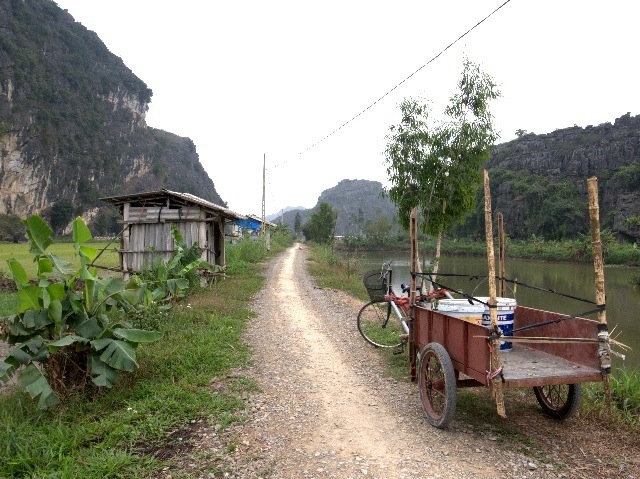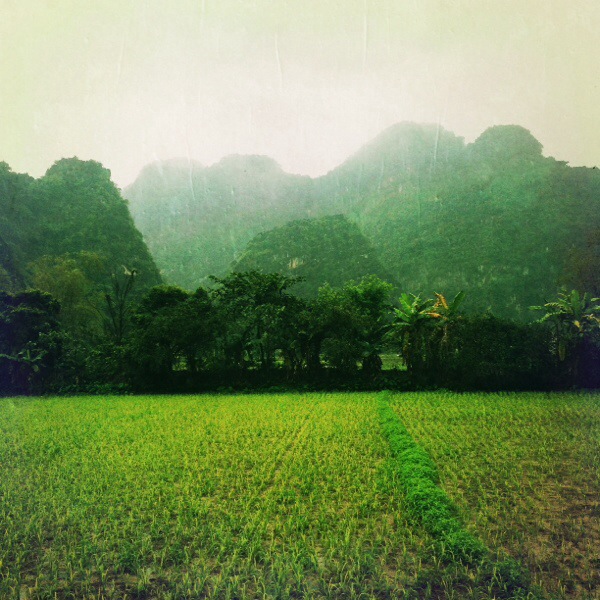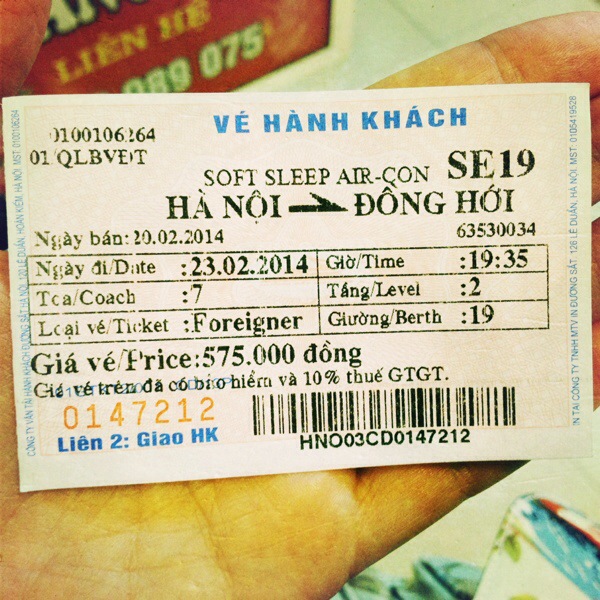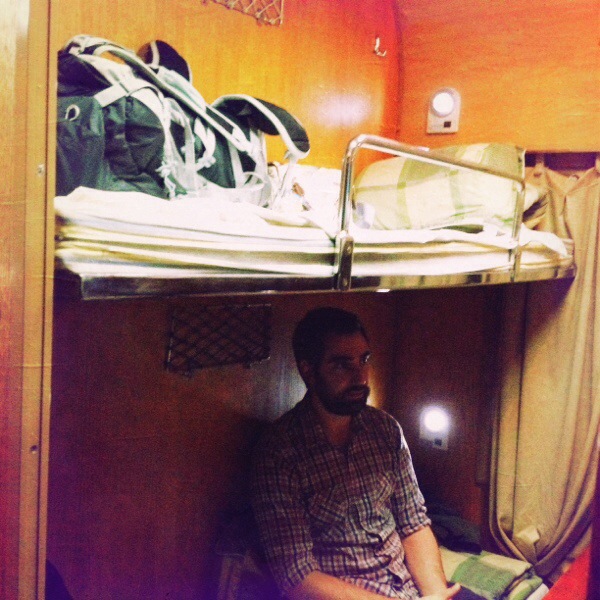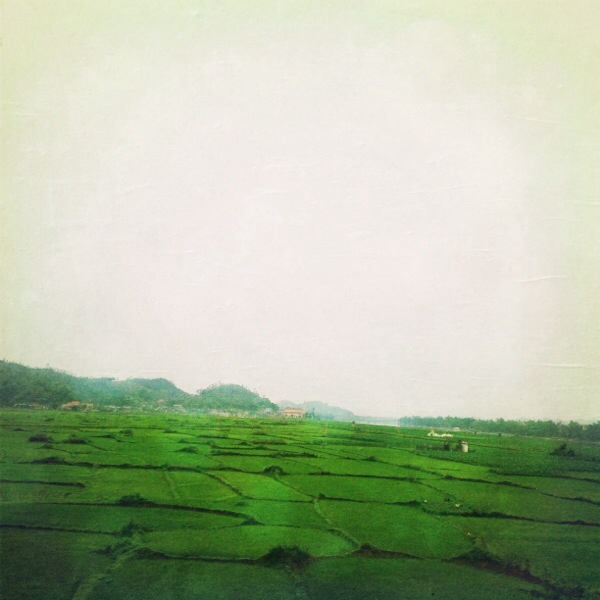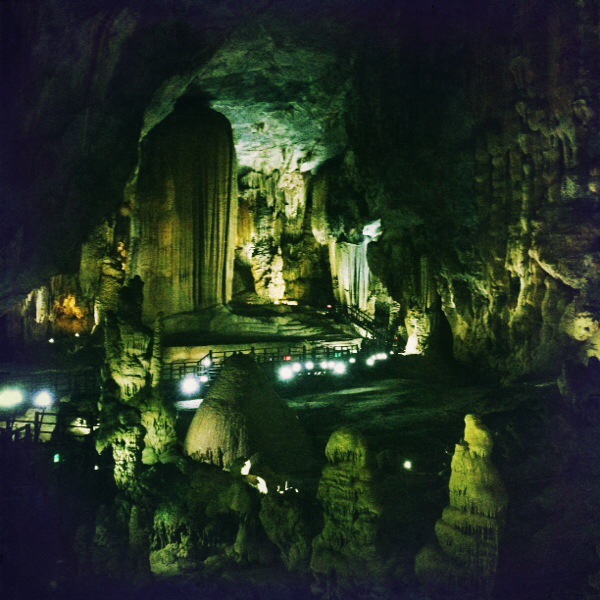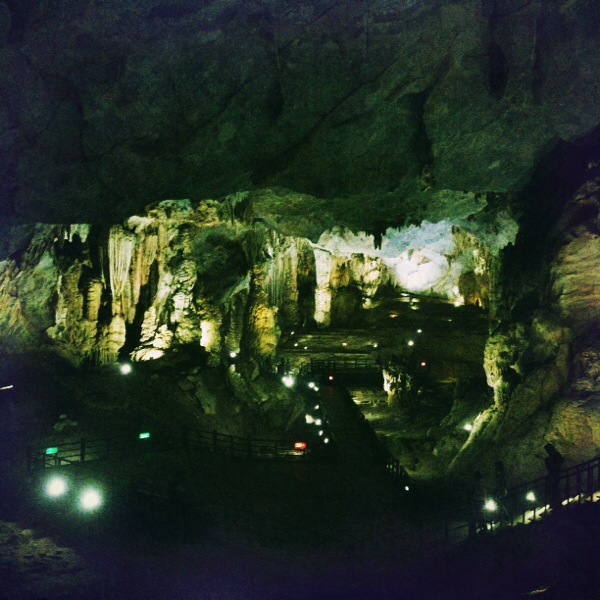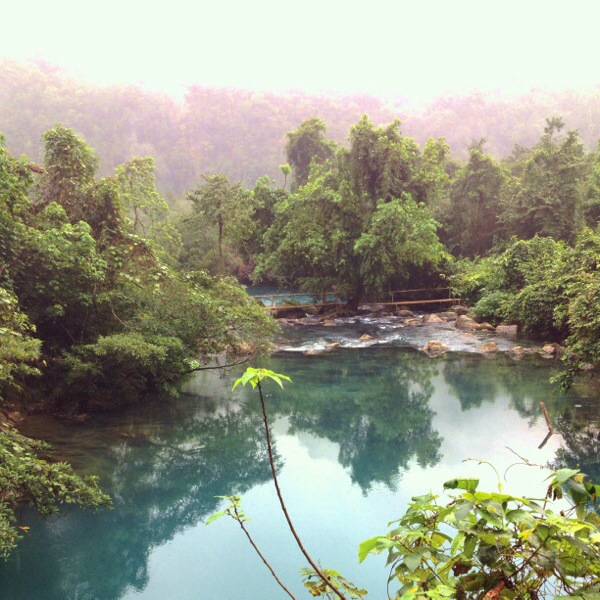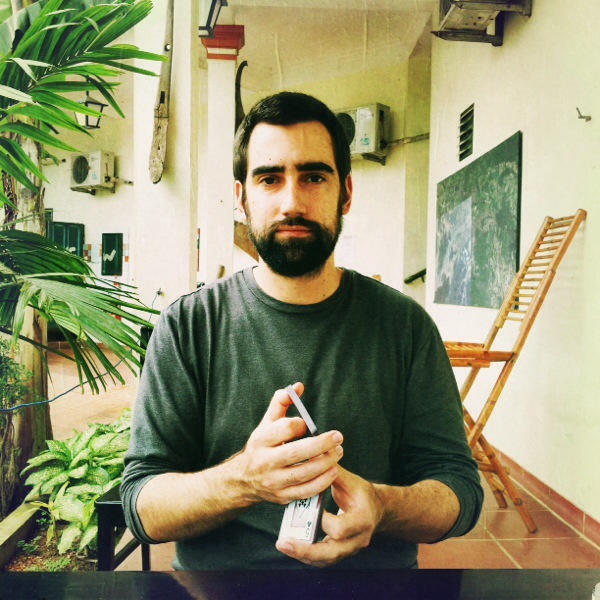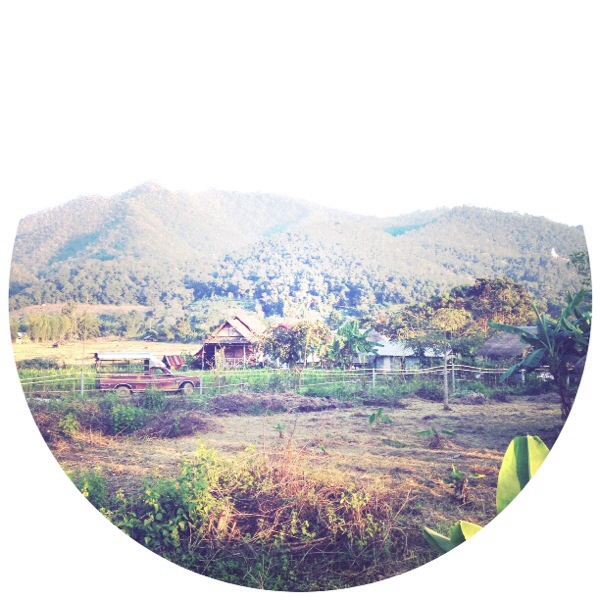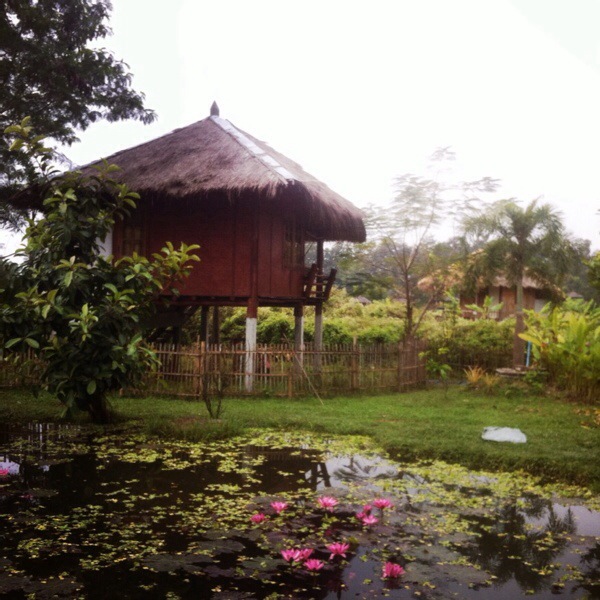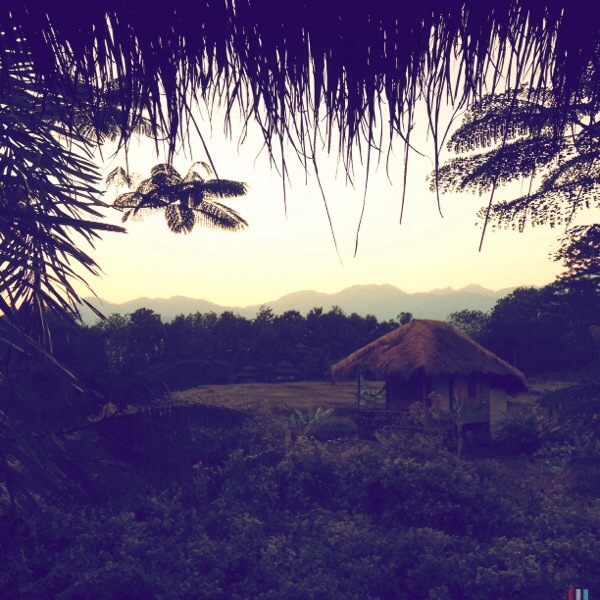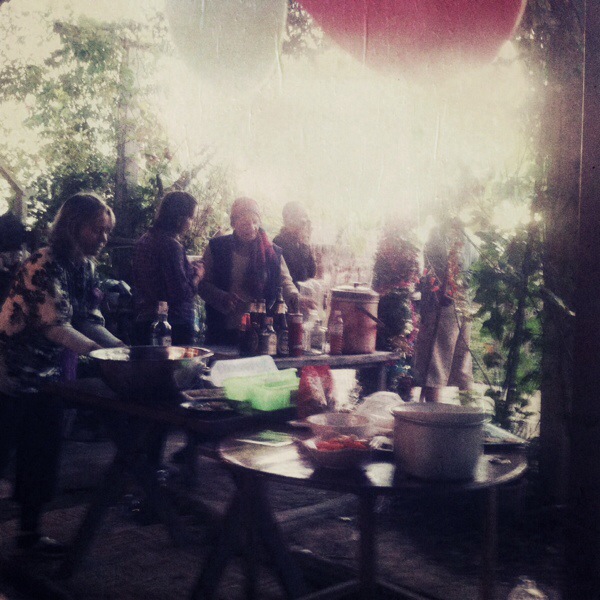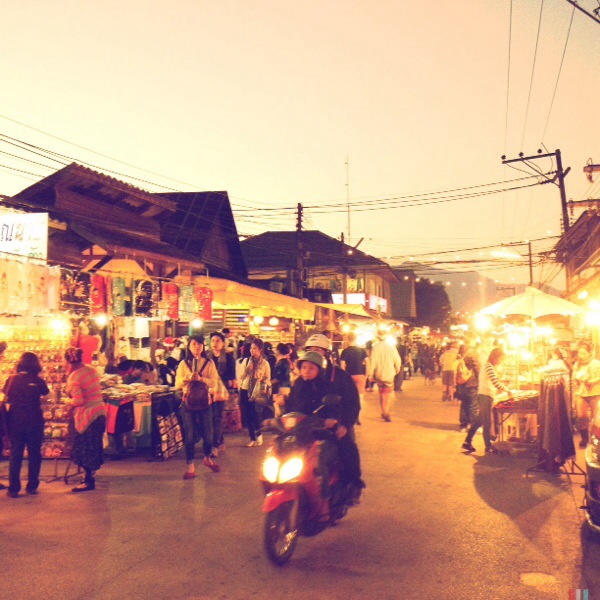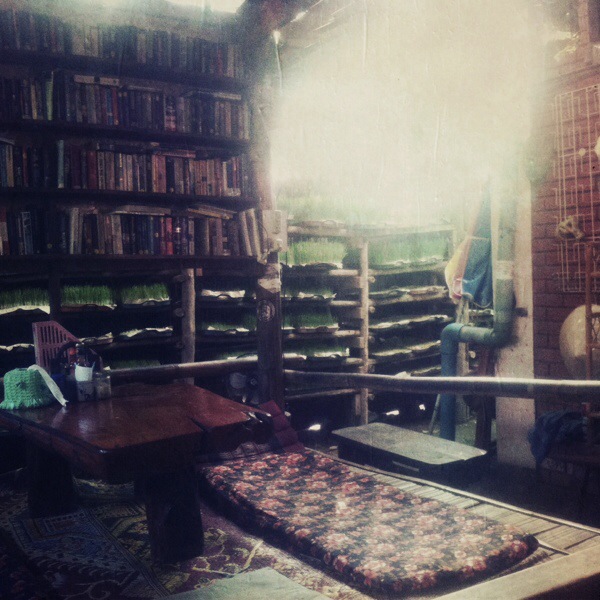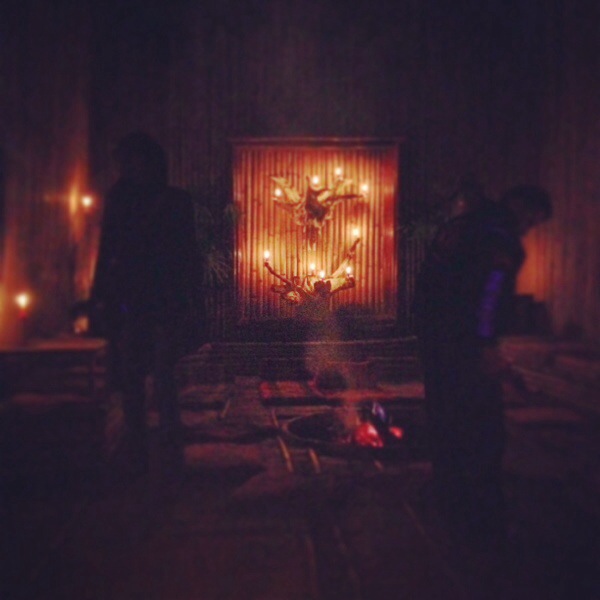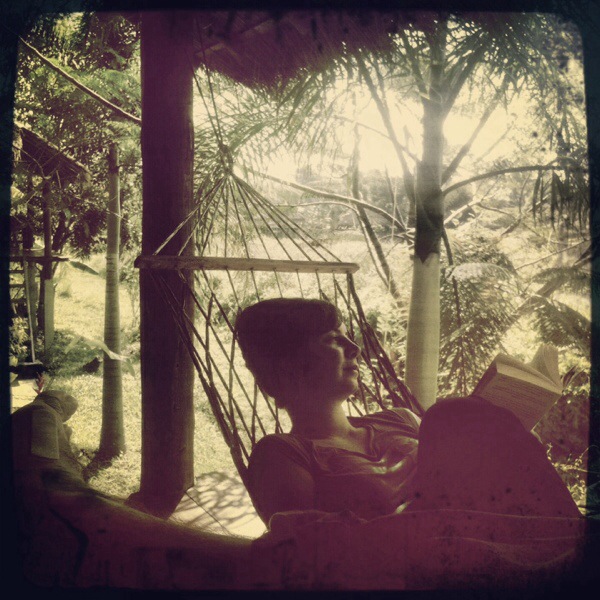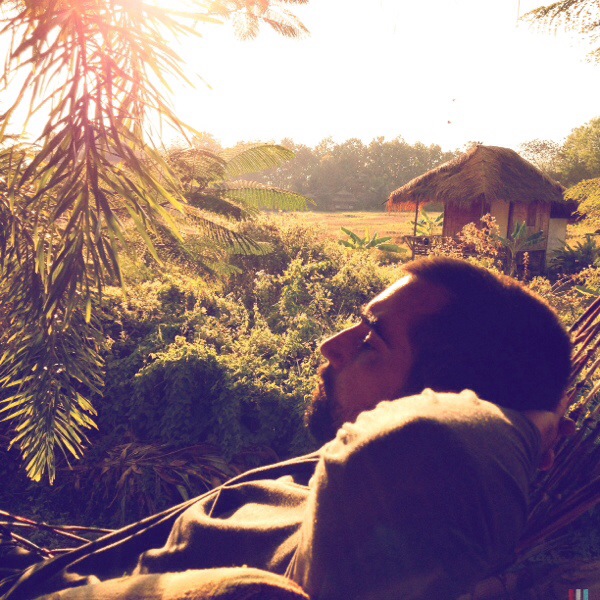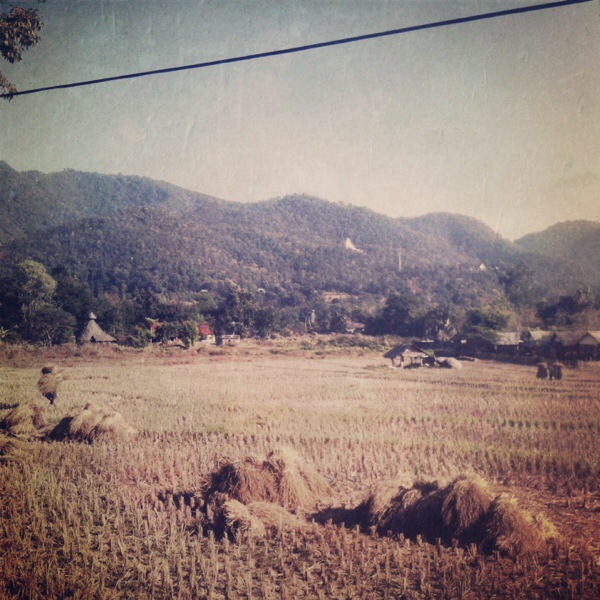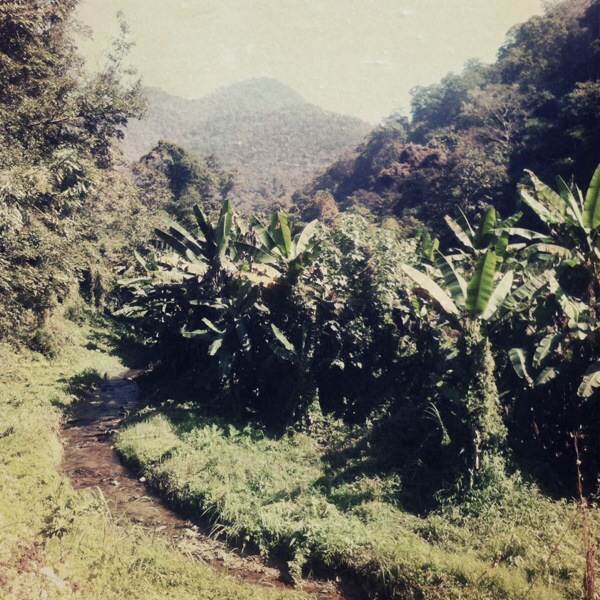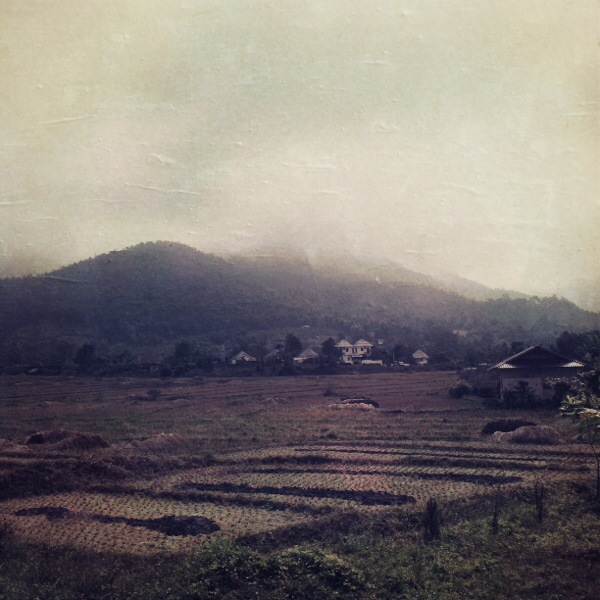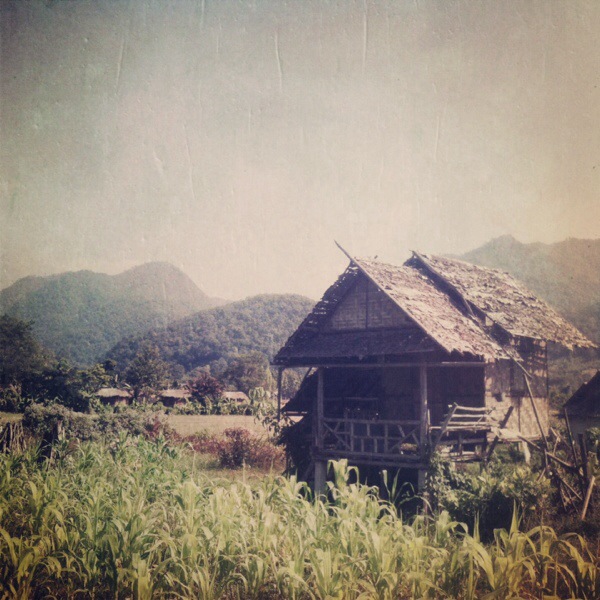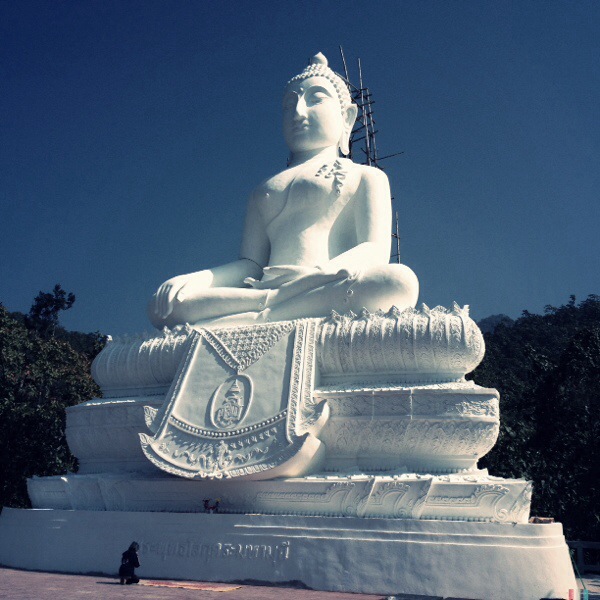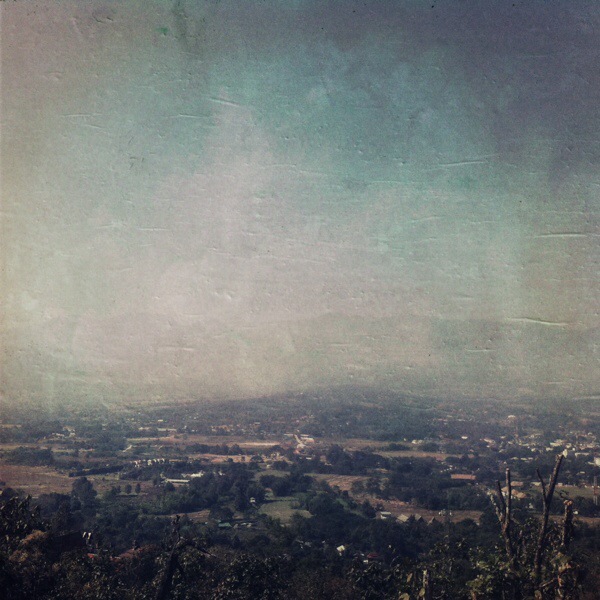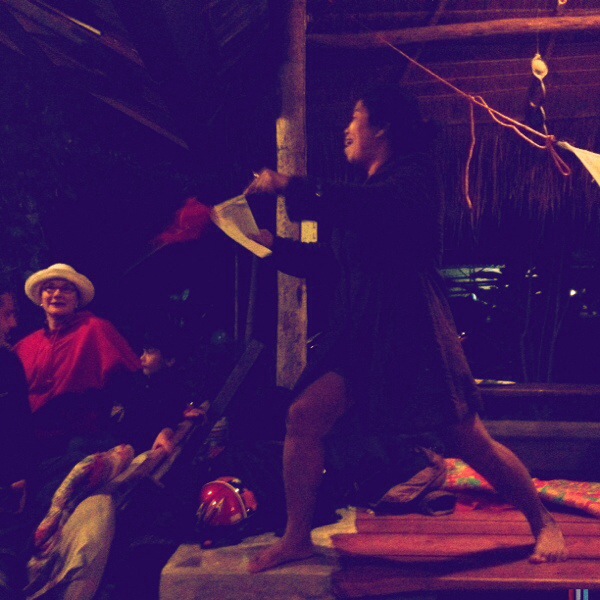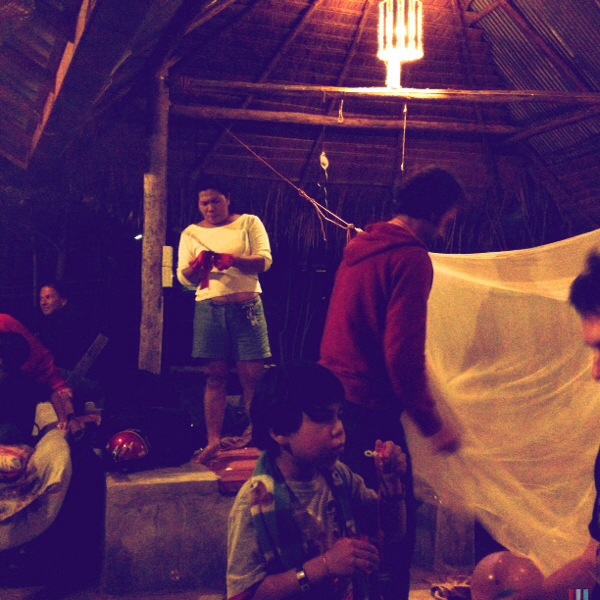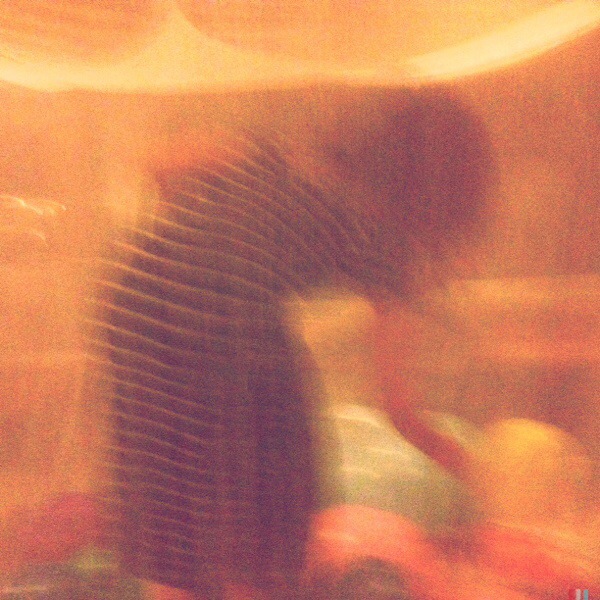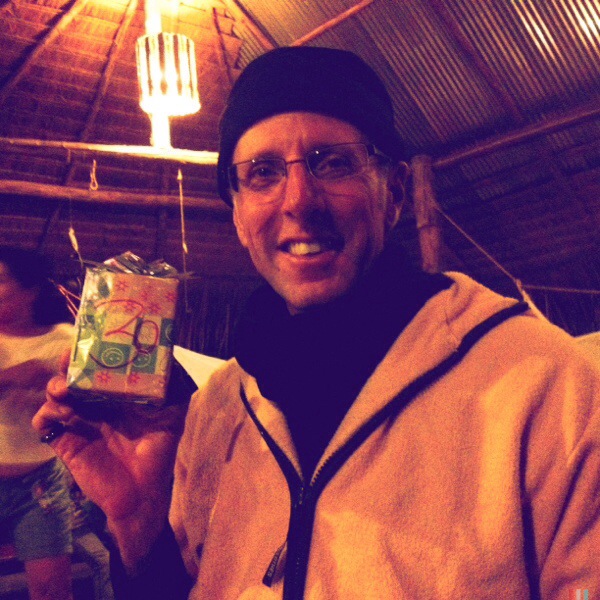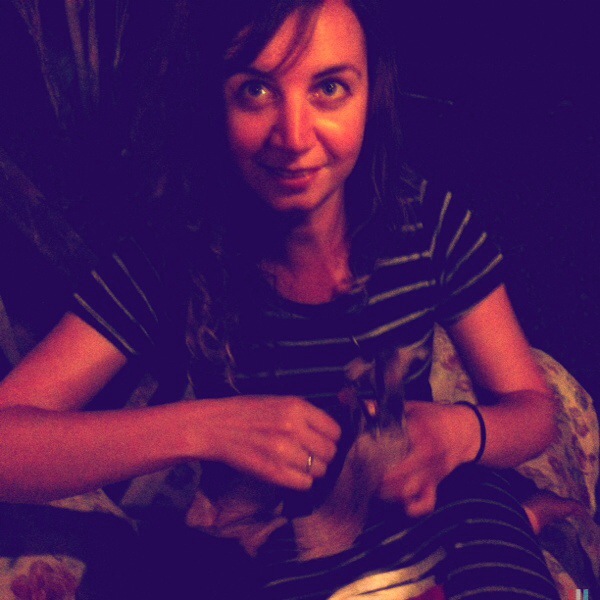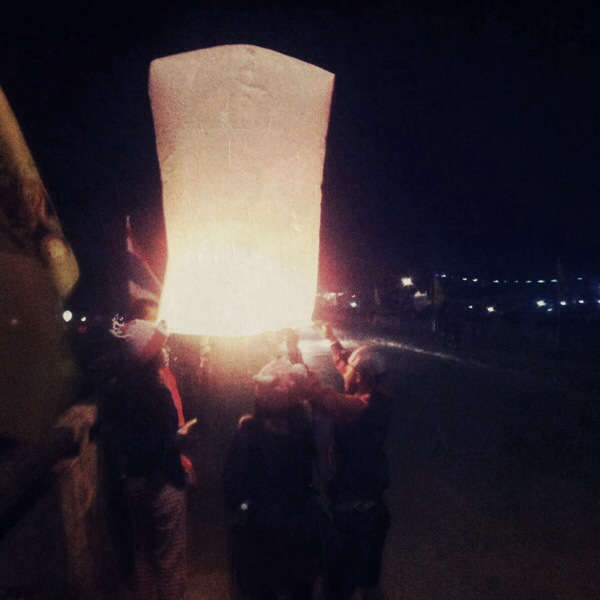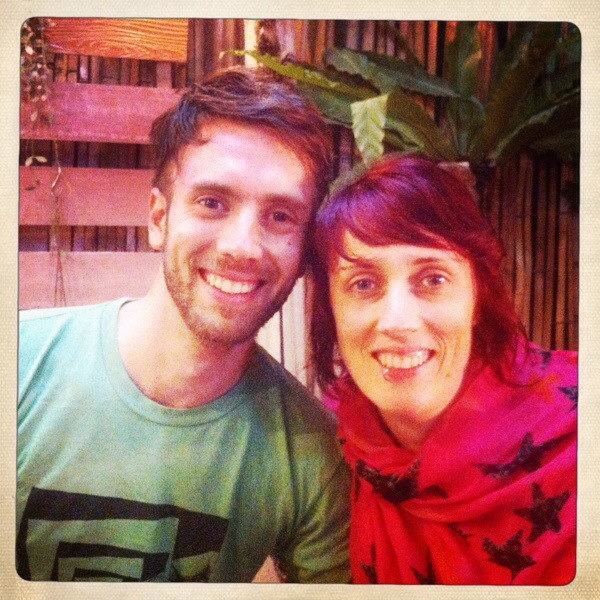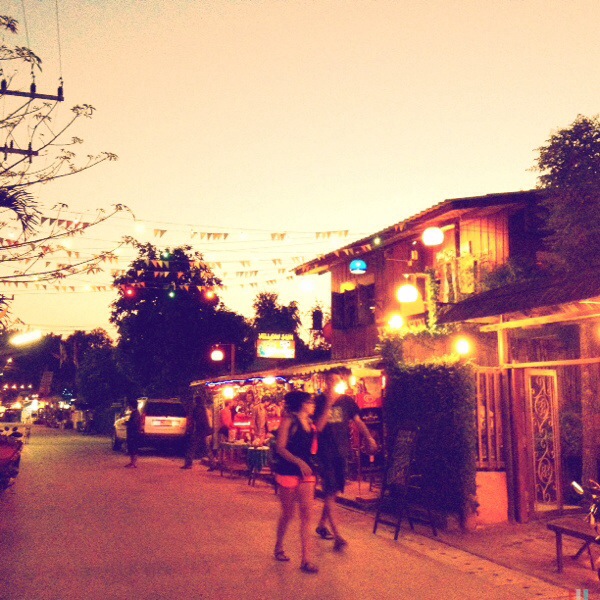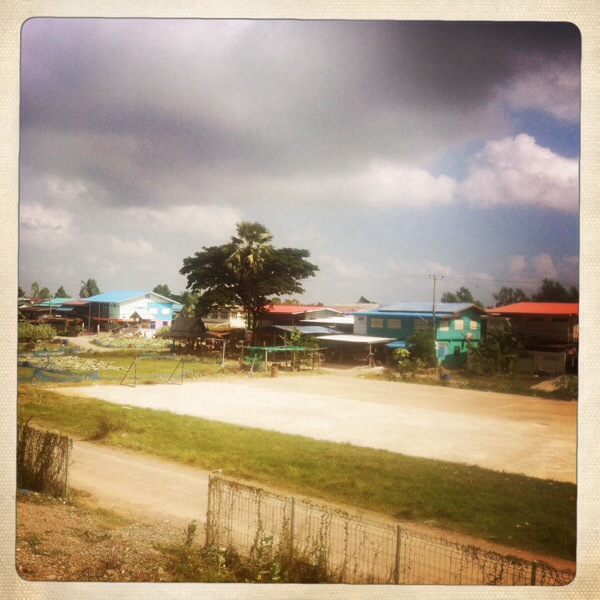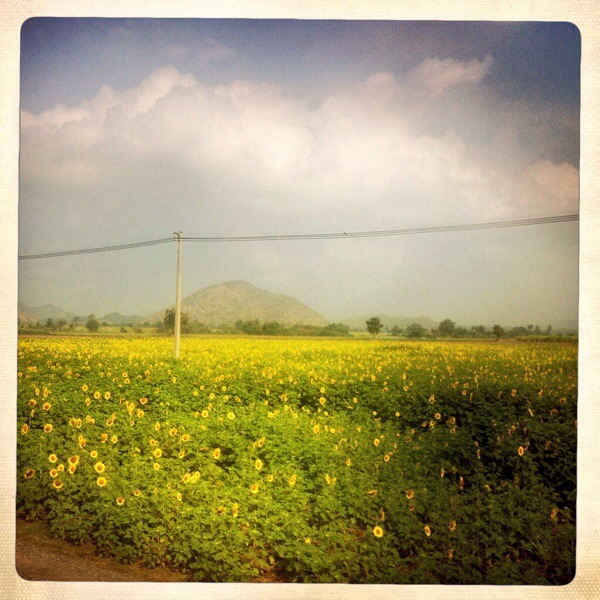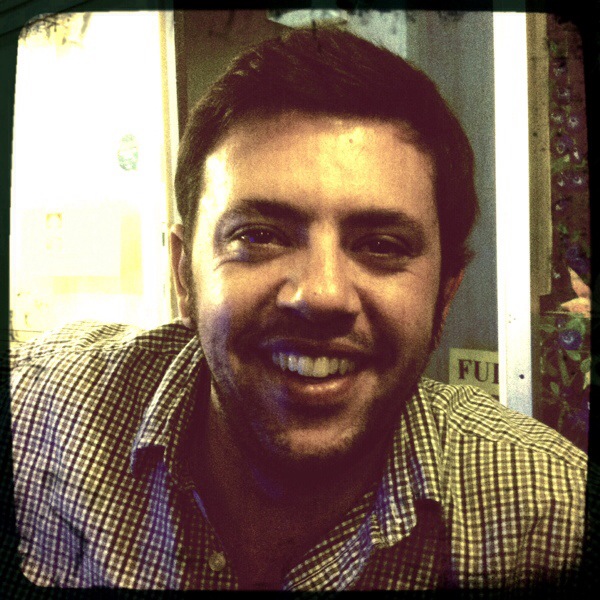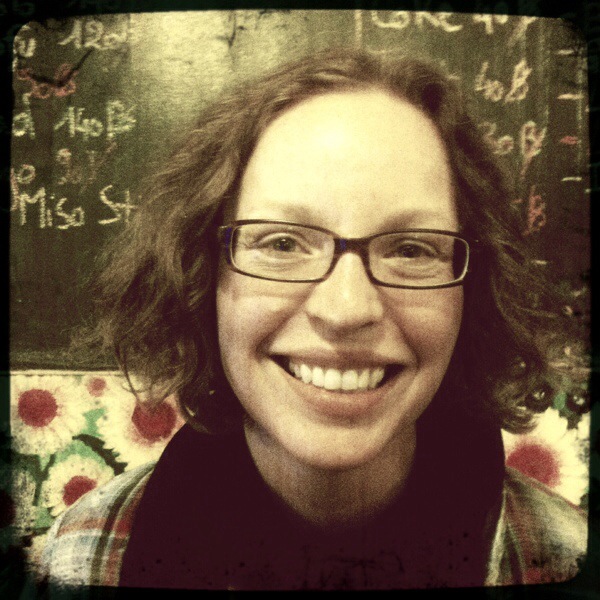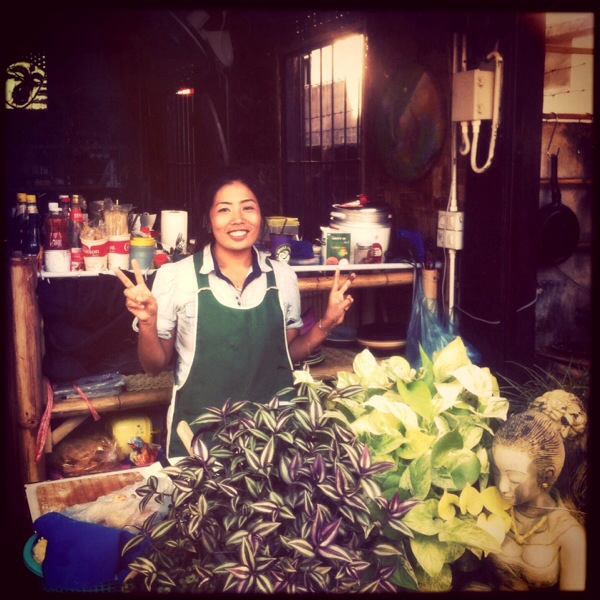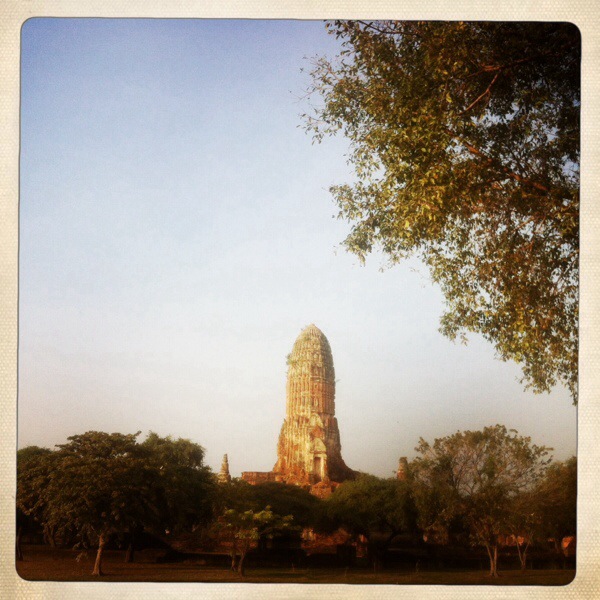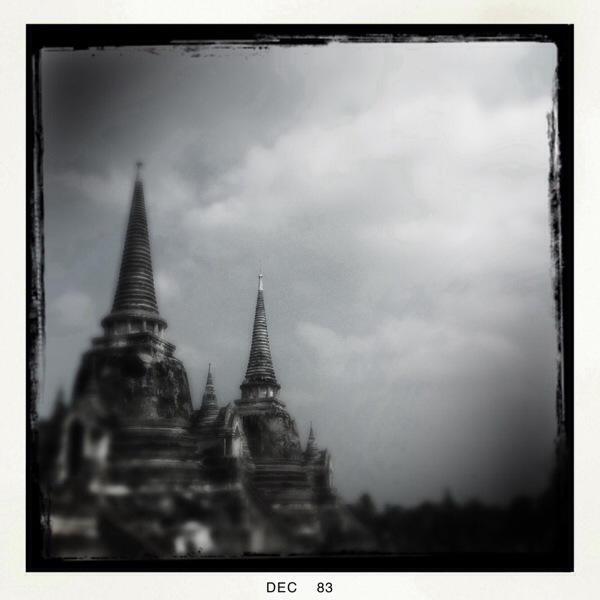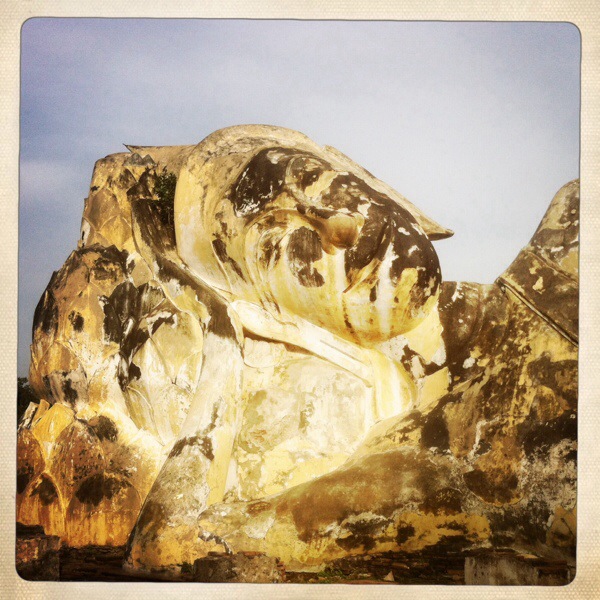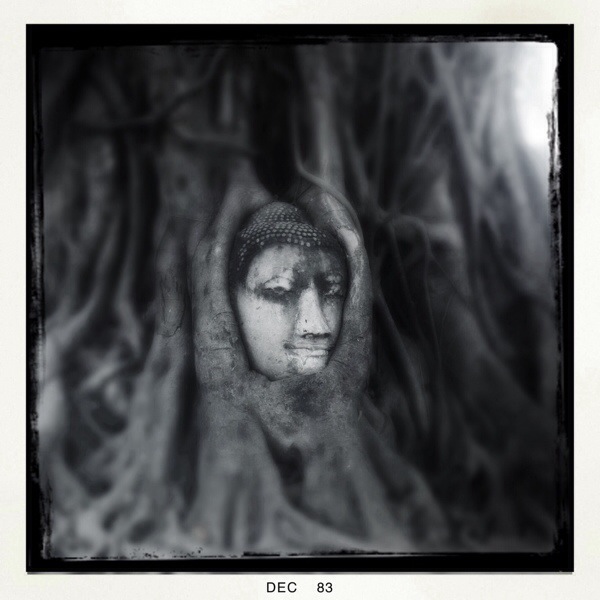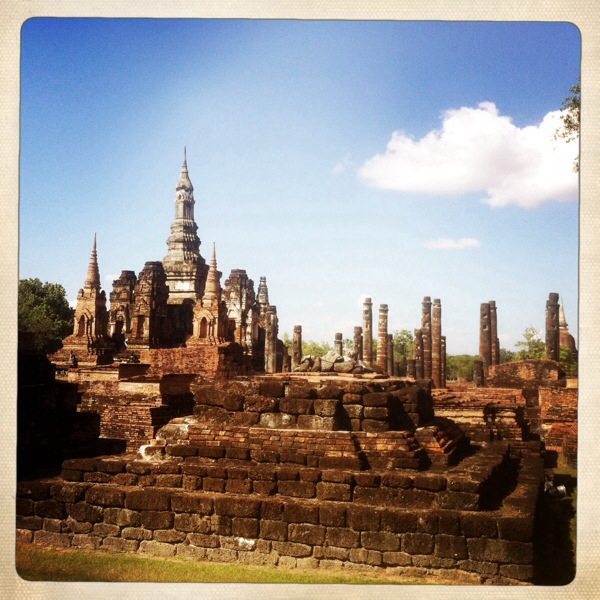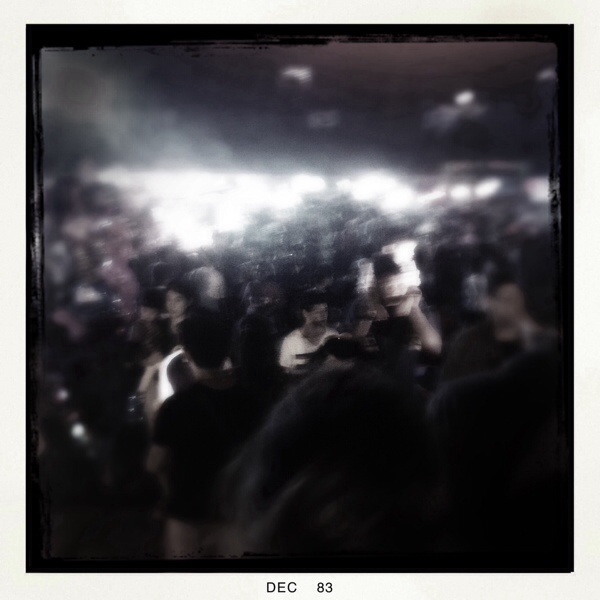We flew into Phnom Penh on the evening of 10 April, just before the Khmer New Year kicked off on the 13th. The airport was like a ghost town and after quickly obtaining our visas we hunted around for Customs to lodge our forms. Eventually we spotted the officers chilling out on a bench, shoes off, chatting. Katie waved her form to them from across the hall – ‘Put in the box!’ an officer shouted, flopping his hand dismissively.
Welcome to Cambodia!
The Royal Palace
In town festivities were already starting up. On our first night we heard singing and music coming from the National Museum so we walked over and stood in the shadow of the gate with a few tuk tuk drivers and an old lady holding a sleeping baby. Inside, drunk young guys in office attire danced awkwardly with their partners as someone played ‘Guantanamera’ (a.k.a. The One Ton Tomato song) on a keyboard.
Statue of King Norodom Sihanouk
Wat Ounalom decorated for New Year
We spent four days in Phnom Penh, which was pretty sobering. Vietnam and Laos have also dealt with war and tragedy in recent decades, but peace only came to Cambodia in the late ’90s, and you can see the effects everywhere. In the city there are orphans on the streets, people missing limbs from landmines, people begging, sex tourists with local women in tow. Amongst all this are lavish palaces and government buildings. On our second day we hired a tuk tuk and visited the Killing Fields, where we learnt that during the Khmer Rouge years one in four people here were killed. The bodies were dumped in huge unmarked pits. Pieces of clothing, bone and teeth still rise to the surface when it rains. Boia, our driver, also took us to see temples, monuments, markets and the huge developments on Diamond Island, where workers and their families live in sheds made of corrugated metal sheets while building multi-million dollar malls and condos that will house wealthy Westerners and East Asians (so the billboards say). We drove past a theatre and saw junkies sitting in circles or passed out in the slivers of shade behind the complex.
A little further up, Boia stopped in the middle of a bridge to point out a dusty village across the river. His eyes went moist as he told us it was a poor village full of workers who have to take the ferry into the city each day as most Cambodians can’t afford to live in Phnom Penh anymore. Looking around at the empty streets of new buildings baking in the sun, investment dollars never seemed so pointless.
When we asked if he has a wife and kids he responded “I have many girlfriend, but no wife,” he smiled, and repeated the old regional adage – “no money, no honey.”
At the end of the afternoon he dropped us back at the Riverfront, waved goodbye and shouted “Happy New Year” in Khmer – “Su-Sdei Ch’nam Th’mey!”
Monks in a pickup truck on their way home for the New Year
For us, Phnom Penh was a necessary stopover rather than a destination in itself. Kampot, a quiet old French outpost town a few hours’ drive away, was where we really wanted to be.
Kampot feels a little like a delapidated Luang Prabang – crumbling old buildings, piles of rubble in the street, cows grazing on empty lots, packs of hungry dogs roaming at night. It has a bit of that Wild West vibe that we came to expect from Cambodia – whether it was old guys sitting at the bar smoking hash or the ‘karaoke bars’ that double as brothels sprinkled through the side streets – but without the largescale urban grime and desperation that characterized Phnom Penh, the overall effect was much more charming.
There are a fair number of expats, or ‘Potpats’, in town. They’ve even put together a handy Survival Guide for tourists, although ‘survival’ might be an exaggeration for a sleepy town where everyone seems to get along well with both local and foreign-owned businesses sharing the benefits of increased tourism.
Kampot streets
Room at Pepper Guesthouse
Oh Neil’s Irish Pub
When we arrived we grabbed a tuk tuk to Guesthouse Street and found a $7 room at Pepper Guesthouse, run by a Khmer family. Our room was on the ground level, attached to the family’s home, and fairly basic but clean and comfortable. After settling in we walked a few blocks to the bar and restaurant strip – happy pizza places, hotel bars, Khmer restaurants and even an Irish pub serving Cambodian-brewed cider.
The horror
The following night we decided to try staying at Blissful Guesthouse next door. The room seemed a bargain at $5. However, sweating like animals under the whirring fans, listening to the buzz of exotic insects and the bad Brit-pop coming from the bar downstairs, the vibe was more Apocalypse Now than blissful.
We went to drown our sorrows at the Magic Sponge, the most popular hostel in town. After chatting to Gordon, the ageing Scottish bartender who was channelling Iggy Pop and J Mascis, we booked ourselves a room for the following night and a tour of Kampot, Kep and Rabbit Island for the following day.
Our guide, a small Khmer guy who loved to talk but never told us his name, arrived half an hour late the next morning. He explained that he would be both guide and driver as the actual driver hadn’t been seen for three days due to some wild New Year celebrations. We jumped into his mosquito-infested van and took off.
First stop was the salt mine – it looked something like the rice paddies of Vietnam but instead of being a lush green all the plots were a dirty brown, full of sea water which yields salt crystals once evaporated. The guide explained how originally workers were paid $4-6 per paddy mined but this led to parents bringing along their children to try and maximize the number of paddies they could clear. Eventually, an NGO stepped in and the pay structure was changed to one uniform rate for all workers so that children could be sent back to school.
Gone fishin’
Next we stopped in at a fishing village (which was also deserted due to the New Year) and drove on to Phnom Sorsia, a temple complex that includes two caves – Ruhng Dhumrey Saw (White Elephant Cave, named for a rock formation) and Leahng Bpodjioh (Bat Cave, named for its inhabitants). Two teenagers from a neighbouring village came along for the cave tour, one shyly practicing his English with us while the other shouted ‘Gangnam style!’, howled and eyed off the girls in the group.
New Year decorations
Big ant nest
Temple at Phnom Sorsia
View from the top
Next we drove to a pepper plantation, where the grounds had been cleared of landmines years prior so they could be put to use for farming. As we climbed out of the van we heard a crash and a child screaming after a lunging dog had knocked him out of his walker over the edge of a verandah. The mother tried to soothe the bleeding baby as we tried red and green pepper straight from the tree.
Fresh peppercorns
Our guide explained that Kampot pepper is some of the best in the world, and the most highly prized pepper is white pepper, also known as bird pepper, which has been through a bird’s digestive system before being collected, cleaned and packaged up.
On the way out of the plantation he pointed out an old train line. This was where the Khmer Rouge kidnapped three backpackers – Australian David Wilson, Briton Mark Slater and Frenchman Jean-Michel Braquet – in 1994. They were sent to work in a labour camp and then murdered when the respective governments refused to pay a ransom to the KR.
El capitan
We drove out to the pier at Kep and caught a boat over to beautiful Rabbit Island (Koh Thonsay).
Our lunch spot
The island is very undeveloped, just a short stretch of beach restaurants and simple bungalows, surrounded by jungle. We ordered some Kampot pepper squid from one of the beachside huts and spent the afternoon lazing on sunbeds, dipping in the water and drinking tabbed cans of Angkor beer. Khmer families picnicked alongside the tourists, and little kids floated happily in big rubber rings. The water only came up to waist height at 15 metres out, was a near waveless clear blue, and so warm it felt like a bath.
After a few hours we sailed back to the mainland. Our boatload included a British woman and her dog, which the Khmer kids giggled at and called ‘Kekilu’. Apparently this refers to a Khmer comedian’s song about about a dog named Kekilu and doubles as an endearing insult to anyone whining like a dog.
We drove through some side streets and past a series of burnt out and long-abandoned mansions to a beach filled with locals. Our last stop was the Kep Crab Market which, ironically, was sold out of its famous crab on account of the Khmer New Year.
Crab baskets
With no crab to be had we browsed some of the seashell-themed tchotchkes.
Brendon spotted a woman grilling rolled up palm leaves over a flame, and picked up a batch of four for 1500 riel (~40 cents). Inside was a dessert called ‘sweet cake’ made from coconut, sugar and black sesame seeds.
Fish amok from Veronica’s
Cambodian food doesn’t have the same international reputation as Thai or Vietnamese food but there are some cool national dishes. Its main claims to fame are amok, a mild curry; lok lak, pepper steak strips with eggs and potato; and stirfries using fresh strings of Kampot peppercorns. Back in town Veronica’s Kitchen near the old market did a mean fish amok, and The Rusty Keyhole’s squid with Kampot peppercorns was also excellent.
The old market, currently being restored
Fresh noodles
$2 dumpling noodle soup from Ecran
But our most exciting food discovery in Kampot wasn’t Cambodian – it was the handmade Chinese noodles and dumplings from Ecran. On top of the noodle house is a cinema where you can rent out a private room for a few dollars, choose any film you want, grab a beer and sit back and enjoy the air con.
The whole town seems hooked on Pastis, an aniseed liqueur that you mix with water and ice to create a milky looking drink. It’s a carry-over from the French presence and you can get a glass for $1.50 pretty much everywhere. We tried to embrace it but all it was really good for was getting us to drink less. We quickly switched back to 75 cent beers – old habits die hard.
Katie sneaking a beer in the shade
We spent another five days poking around town and enjoying the local shops, eateries and drinking holes. Our favourite place to stay was Kampot Pie and Ice Cream Palace – our room was $6 a night, nicer than any of the barang-owned places we stayed and located right above the bakery so we got to smell fresh-baked bread each morning.
We saw quite a few wedding tents set up in the streets around town – we figured everyone was trying to squeeze their nuptials in before the rainy season hit.
We also saw a few ‘swallow houses’, little sheds with a small opening for birds to fly in (see the green square with the black hole in the middle of the photo above). This is big business in town – the swallows build nests inside, which are then cut down and sold to Thailand, Malaysia and China for around $4000 per kilo. The swallows’ saliva is extracted and used in drinks and health tonics – it’s supposed to be good for asthma, skin diseases and virility. Recorded swallow calls are pumped out all day and into the night to attract the birds. Neighbours are less enthusiastic about this new business opportunity.
As the days rolled on the town filled back up with locals returning from spending the New Year with family. Dust-covered vans packed with 20+ people, roofs strapped with food, furniture, clothing, motorbikes and household goods and the back door tied closed with rope were a common sight.
We felt it was time to pack up ourselves, so we crammed into a minivan full of backpackers with a roped down back of its own and headed out towards Otres Beach.
